221st BUY OR BID SALE
Established 1964 Facebook/Harlan J. Berk, Ltd. Twitter/Team_HJB Istagram/HJB_Coins
The Closing Date is November 17th, 2022 ALL COINS AND ANTIQUITIES GUARANTEED GENUINE NO BUYERS FEES!
FOR VIDEOS OF EACH LOT
VISA DISCOVER MASTERCARD AMERICAN EXPRESS BITCOIN
Experts
Harlan J. Berk, Ancients • Aaron Berk, Ancients & Antiquities
Curtis Clay, Roman • Phil Davis, Ancients • Justin Benton, Ancients • Jennifer Saban, Antiquities • Laura Wakeland, World Pablo Saban, IT Manager • Photos & Videos by Andrew Steiner & Tara Kline • Layout by Aaron Berk
Harlan J. Berk, Ltd. has presented an innovation in antiquities and numismatics for some time now. The system is simple. When you want an antiquity or coin in the sale, just bid the estimated price by phone, fax, web site, email or post. We will send you the antiquity or coin immediately with no buyer’s fees and no waiting for the closing of the sale. Any and all antiquities or coins not sold before the closing date will be sent to the highest bidder after November 17, 2022. All items carry a lifetime guarantee of authenticity.


EXAMPLE—You bid estimate on an item valued at $100.00 and if your bid is the 1st to reach us, you will receive the item immediately at $100. If on the other hand, you bid $75.00 on the same item and are still the high bidder at the end of the sale, the item will be mailed to you after the closing. There is a 2.5% fee for credit card use. If you are ever in the area, stop in to see us! Of course, it’s best to call first. Harlan J. Berk, Ltd. reserves the right to refuse any bids.
GOLD
1. UNCERTAIN MINT IN IONIA; c. 600-550 BC, EL Hemihecte (1/12 Stater), 1.34g. Obv: Uncertain type. Rx: Incuse square. Ex CNG E400, 28 June 2017, lot 245. EF 385
2. LYDIA, SARDES; Achaemenid, Darius I-Xerxes II, c. 485-420 BC, Gold Daric, 8.34g. Sunrise-24, Carradice-Type IIIb. Obv: The Great King running r., holding spear pointing diagonally downwards and bow, quiver over shoulder. Rx: Oblong incuse. Struck with worn dies; Mint State 2250
Jenkins Plate Coin
3. ZEUGITANA, CARTHAGE; c. 264-260 BC, Trihemistater, 12.49g. Jenkins and Lewis-Group IX, 396 (this coin). Obv: Head of Tanit l., wearing wreath of grain ears, triple pendant earring, and necklace with hanging pendants. Rx: Unbridled horse standing r. on exergual line, head turned back. According to Jenkins and Lewis (“Carthaginian Gold and Electrum Coins,” p. 37), this beautiful and impressive type was known only in a single specimen in the Luynes Collection, until a hoard unearthed in Tunis in 1948 brought others to light. That hoard remains the only recorded find spot, pointing to the city of Carthage itself as the mint, rather than a mint in Sicily or elsewhere. This splendid issue is likely to have been the initial Carthaginian gold coinage of the First Punic War, struck for just a few years before it devolved into the standardized electrum and silver of Jenkins and Lewis Group X. Despite its rarity today, this was initially a fairly extensive issue; the Tunis Hoard coins were struck from at least six obverse dies and twenty-two reverse dies. Jenkins and Lewis suggest that this issue may be the gold captured by Rome after the battle of Mylae and presumably melted; another possibility might be that it was part of the massive indemnity paid by Carthage after their defeat in the war. The denomination of these coins doesn’t fit easily into any ancient metrology system. Per Jenkins and Lewis, the average weight is around 12.50g, quite close to the expected weight of an Attic tridrachm. The use of the Attic system in 3rd century Zeugitana would be surprising however; we’ve opted for the now-conventional description of the coin as a trihemistater. Ex Catherine E. Bullowa/Coinhunter, with original ticket. Ex R. B. Lewis Collection. Ex 1948 Tunis Hoard (ICGH 2271). This is a magnificent example of one of the most beautiful gold coins struck by Carthage. It is rare to get a plate coin from Jenkins’ monograph on this series. Our coin was also, for a number of years, in the private collection of Catherine Bullowa, a famous dealer for many decades, of extraordinary taste, and we are told this coin was one of her favorites. Utterly magnificent. FDC 60000
4. KUSHAN, KUJALA KADPHISES; c. 60-20 BC or 10-30 AD. Dinar, 7.66g. Sunrise-520, Mitchiner-3062. Obv: Kanishka standing facing, head l., flames on shoulder, sacrificing over altar and holding goad and scepter. Rx: Nana, nimbate, wearing fillet and crescent, standing r., holding scepter and box; tamgha to r. Ex B. Max Mehl, Sale L, Fort Worth, 29 October 1918, Second Part of Mr. Sears’ Numismatic Stock and Other Consignments, lot 21, price realized $6.00, with printed 2x2 envelope giving Mehl’s name, the auction lot number, and the price realized. Worn, but with clear legends. GoodFine 775
5. KUSHANO-SASSANIAN, VAHRAN (BAHRAN) I GOLD DINAR; 335-370 AD. Gold dinar, 7.88g, Kabul mint. Sunrise-1021. Obv: Bahran standing l., wearing horned headdress and sword, flames at shoulders, sacrificing at altar and holding trident, between filleted trident on l. and monogram on r. Rx: Siva standing front holding diadem and trident; behind, the bull Nandi standing l. Mint State 2850
6. CENTRAL ASIA. ALCHON HUNS. KING KHINGILA GOLD DINAR; c. 440490 AD. Pale gold dinar, 7.15g, Gandhara mint. Obv: Khingila standing l., sacrificing at altar and holding scepter; filleted trident to l., tamgha to r., Bactrian inscription around.
Rx: Siva facing, holding diadem and trident; behind, the bull Nandi standing l. Alram-29; Göbl, Dokumente, Issue-85; Vondrovec-85c. Mint State 1000
7. CENTRAL ASIA. ALCHON HUNS. KING KHINGILA, GOLD DINAR; c. 440490 AD. Pale gold dinar, 6.97g, Gandhara mint. Obv: Khingila standing l., sacrificing at altar and holding scepter; filleted trident to l., tamgha to r., Bactrian inscription around.
Rx: Siva facing, holding diadem and trident; behind, the bull Nandi standing l. Alram-29; Göbl, Dokumente, Issue-85; Vondrovec-85c. Near Mint State 850
8. CENTRAL ASIA. ALCHON HUNS. KING KHINGILA, GOLD DINAR; c. 440490 AD. Pale gold dinar, 7.10g, Gandhara mint. Obv: Khingila standing l., sacrificing at altar and holding scepter; filleted trident to l., tamgha to r., Bactrian inscription around.
Rx: Siva facing, holding diadem and trident; behind, the bull Nandi standing l. Alram-29; Göbl, Dokumente, Issue-85; Vondrovec-85c. Mint State 1000
9. TRAJAN; 98-117 AD, Rome, 101-2 AD, Aureus, 7.48g. Woytek-99c (80 spec.), BM-81, RIC-50, C-232 (40 Fr.), Calicó-1053. Obv: IMP CAES NERVA TRA - IAN AVG GERM Bust laureate r., aegis with Medusa head on front shoulder and behind neck. Rx: P M TR P - COS IIII P P Statue of Hercules standing facing on base, with lionskin over head and falling from l. arm, holding club downwards in r. hand. Near Mint State 5250
10. LUCILLA; Rome, Aureus, 7.23g. BM-320, C-69 (130 Fr.), RIC-783, Calicó-2218 (same dies). Obv: LVCILLAE AVG ANTONINI AVG F Bust draped r. Rx: Venus standing l. holding apple and scepter. Ex Gemini XIV, 18 April 2018, lot 527. Ex Philip T. Ashton Collection. Ex Berk 119, 15 March 2001, lot 39. Beautifully struck, excellent portraits. Slight planchet defect at 3 o’clock on reverse. Mint State 12500
11. VALENS; 364-378 AD, Antioch, 364-7 AD, Solidus, 4.45g. RIC-2d (C); C-31 (25 Fr.); Depeyrot-27/3, p. 283 (5 spec. with XP and from officina H=8). Obv: D N VALENS - PER F AVG Pearl-diademed, draped, cuirassed bust r., seen from front. Rx: RESTITVTOR - REIPVBLICAE Emperor standing l., head r., holding labarum marked with XP and Victory on globe, ANTH. in exergue. With old 2x2 paper envelope, c. 19101920, handwritten with description and price ($5.50). With old 2x2 paper envelope, handwritten and priced ($5.50) by the famous Fort Worth coin dealer B. Max Mehl, c. 1920s-1940s. Mint State 1500
Ex B. Max Mehl, 1917
12. VALENTINIAN I; 364-375 AD, Trier, c. 372 AD, Solidus, 4.52g. Depeyrot-41/1 (p. 118, unique in Brno). Obv: D N VALENTINI - ANVS PF AVG Bust draped, cuirassed r., seen from front, wearing diadem of alternating rosettes and pairs of laurel leaves. Rx: VICTOR-IA AVGG Two emperors seated facing, together holding globe; behind and between them the upper portion of a Victory with outspread wings who reaches out her arms to crown the emperors, between whom one sees a small star in center and a palm branch below; in exergue TR.OB. A very rare issue, not in RIC for any of the three emperors, with the small star between the seated emperors on the reverse. Depeyrot only found one such coin of Valentinian I like ours, two of Valens, and one of Gratian. Ex B. Max Mehl, Fort Worth, Auction XLVI, 12 December 1917, Rare United States and Foreign Coins from the Collections of Judge John A. Truax and Mr. G. A. Alenius, lot 475, price realized $5.50; with the original Mehl 2x2 envelope, printed with his name and the lot number 475 and with the price $5.50 written in. Mint State .....2950
Ex B. Max Mehl, 1917
13. VALENTINIAN II; 375-392 AD, Constantinople, Solidus 380-1 AD, 4.41g. Sear20165; Depeyrot-32/2, p. 238. Obv: D N VALENTINI - ANVS IVN P F AVG Diademed, draped, cuirassed bust r. Rx: CONCOR - DIA AVGGG Constantinople seated facing, head r., on throne ornamented with lions’ heads, r. foot on prow, holding scepter
HJBLTD.COM














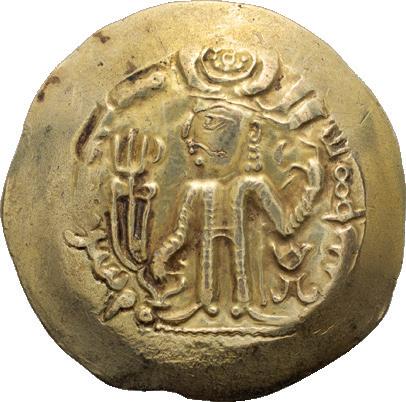


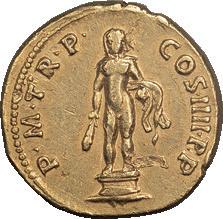













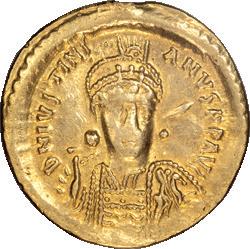
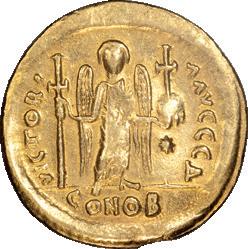


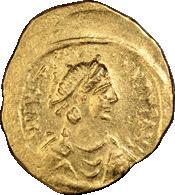












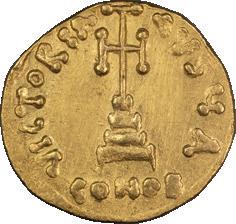
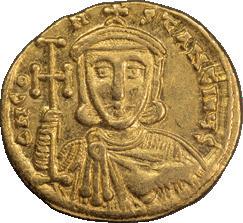


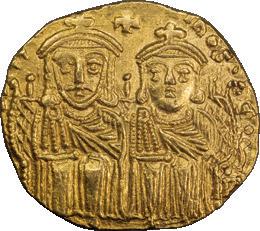




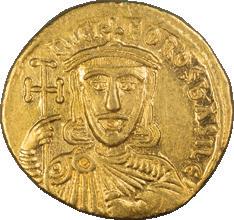

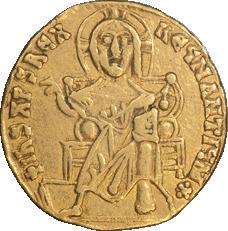




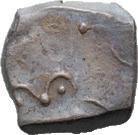


3 21 33 10 8 14 21 17 26 12 15 19 20 7 18 6 9 28 29 30 5 4 3231 1613 22 2725 11 2423
and globe, CONOB in exergue. Ex B. Max Mehl, Fort Worth, Auction XLVI, 12 December 1917, Rare United States and Foreign Coins from the Collections of Judge John A. Truax and Mr. G. A. Alenius, lot 477, price realized $5.50, with the original Mehl 2x2 envelope, printed with his name and the lot number 477 and with the price $5.50 written in . aEF 1250
Ex B. Max Mehl, 1917
14. ARCADIUS; 383-408 AD, Constantinople, 383-8 AD, Solidus, 4.44g. Cf. Depeyrot-51/2, p. 245. Obv: D N ARCADI - VS P F AVG Diademed, draped, cuirassed bust r., seen from front. Rx: CONCORDI - A AVGG Δ Constantinopolis seated facing, head r., holding shield inscribed VOT / X / MVLT / XV, CONOB in exergue. A very rare, probably unpublished coin, if attributed correctly. Note AVGG rather than AVGGG in the reverse legend, and on the shield VOT/X/MVLT/XV rather than VOT/X/MVLT/XX. Ex B. Max Mehl, Fort Worth, Auction XLVI, 12 December 1917, Rare United States and Foreign Coins from the Collections of Judge John A. Truax and Mr. G. A. Alenius, lot 475, price realized $5.50, with the original Mehl 2x2 envelope, printed with his name and the lot number 477 and with the price $5.50 written in. VF 950
Ex B. Max Mehl, 1917
15. THEODOSIUS II; 402-450 AD, Constantinople, c. 430-440 AD, Solidus, 4.42g. RIC-257 (S); Depeyrot-81/1 (p. 254; 85 spec. recorded from officina H=8). Obv: D N THEODO - SIVS P F AVG Bust cuirassed, helmeted facing front, holding spear over shoulder and shield decorated with emperor riding down enemy. Rx: VOTIS XXXMVLT XXXX H Constantinopolis seated l., l. foot on prow, shield below l. elbow, holding cross on globe and scepter; CONOB in exergue, star in r. field. Ex B. Max Mehl, Fort Worth, Auction XLVI, 12 December 1917, Rare United States and Foreign Coins from the Collections of Judge John A. Truax and Mr. G. A. Alenius, lot 478, price realized $5.00, with the original Mehl 2x2 envelope, printed with his name and the lot number 478 and with the price $5.00 written in. Contact mark in right obverse field, otherwise Mint State. 950
Ex B. Max Mehl, 1918
16. JUSTINIAN I; 527-565 AD. Constantinople, 527-537 AD, Solidus, 4.45g. Berk-42, MIB-5, Sear-137. Obv: DN IVSTINI - ANVS PP AVC 3/4 r. facing bust wearing cuirass, helmet and holding spear in r. hand behind head and shield. Rx: VICTORI - A AVCCC Δ (officina 4) Angel standing facing, holding long cross and cross on globe; star in r. field; CONOB in exergue. Ex B. Max Mehl, Sale L, Fort Worth, 29 October 1918, Second Part of Mr. Sears’ Numismatic Stock and Other Consignments, lot 25, price realized $5.00, with printed 2x2 envelope giving Mehl’s name, the auction lot number, and the price realized. Face of emperor flatly struck. Near Mint State 485
17. JUSTIN II; 565-578 AD. Constantinople, c. 582-602 AD, Tremissis, 1.48g. Berk62, Sear-353, MIB-11a. Obv: D N IVSTI - NVS PP AVI Pearl-diademed, draped, cuirassed bust r., seen from front. Rx: VICTOR[I]A AVGVSTORVM Victoria advancing r., head l., holding wreath and cross on globe; star in r. field, CONOB in exergue. Left obverse field flatly struck. Mint State 450
18. JUSTIN II; 565-578 AD. Constantinople, c. 582-602 AD, Solidus, 4.46g. Berk-60, MIB-4, Sear-345. Obv: [D N I - V]STI - NVS PP AVI Helmeted and cuirassed bust facing, unbearded, holding globe surmounted by Victory, and shield. Rx: [VICTOR] I - A AVGGG Γ (officina 3) Constantinopolis seated facing, head r., holding spear and globe surmounted by cross; in exergue [C]ONOB. Unusually nice for issue. Beautifully struck, with full luster. Mint State 500
Ex B. Max Mehl, 1918
19. HERACLIUS; Constantinople, 610-613 AD, Solidus, 4.27g. MIB-1a2, Berk-114, Sear-731. Obv: d N N hERAC -LI PER AV Facing bust of emperor wearing plumed helmet, holding cross in r. hand. Rx: VICTORIA - AVSU I Cross potent on three steps; CONOB in exergue. Ex B. Max Mehl, Sale L, Fort Worth, 29 October 1918, Second Part of Mr. Sears’ Numismatic Stock and Other Consignments, lot 23, price realized $6.00, with printed 2x2 envelope giving Mehl’s name, the auction lot number, and the price realized. Planchet shows pressure from being in the earth. EF 800
Ex B. Max Mehl, 1918
20. HERACLIUS; 610-641 AD. Constantinople, c. 629-632 AD, Solidus, 4.12g. Berk123, Sear-749, MIB-29. Obv: [dd NN hER]ACLIUS ET hERA CONST PP AV Facing busts of Heraclius and Heraclius Constantine, each wearing chlamys and crown, the first with long beard, the second with short beard; above, cross. Rx: VICTORIAAYGU I (officina 10, possibly cut over an earlier number) Cross potent on three steps, CONOB beneath. Ex B. Max Mehl, Sale L, Fort Worth, 29 October 1918, Second Part of Mr. Sears’ Numismatic Stock and Other Consignments, lot 24, price realized $6.00, with printed 2x2 envelope giving Mehl’s name, the auction lot number, and the price realized . EF 950
Ex Lyman H. Low. 1921
21. CONSTANS II; Constantinople, c. 654-68 AD, Solidus, 4.33g. Sear-959, MIB26. Obv: d N CONSTANTI[NUS C CONSTA] Facing busts of Constans, with long beard, and Constantine IV, beardless, each wearing crown and chlamys; between their heads, cross. Rx: VICTORIA - AYGU A (officina 1) Cross potent on three steps, CoNoB in exergue. In a 2x2 envelope from Lyman H. Low, Sale 205, New Rochelle, N.Y. 11 June 1921, lot 446. Lyman Low was a famous New York dealer, and original envelopes or paperwork from him are quite rare. EF 900
Ex Lyman H. Low. 1921
22. CONSTANTINE IV; Constantinople, 669-674 AD, Solidus, 4.41g. Sear-1153, Berk-169, MIB-4. Obv: d N CO[N] - A - NUS P Helmeted and cuirassed bust facing three-quarters r., holding spear over r. shoulder. Rx: VICTOA - A - VGU A (officina 1) Cross potent on three steps between standing figures of Heraclius and Tiberius; CONOB in exergue. In a 2x2 envelope from Ex Lyman H. Low, Sale 205, New Rochelle, N.Y., 11 June 1921, lot 448. Excellent example of what we consider an unartistic portrait of Constantine IV, which was struck in large quantities, followed by one of the most artistic portraits of this same emperor. Slight contact mark at 11 o’clock of obverse. Near MS 1200
23. CONSTANTINE IV; Constantinople, 668-685 AD, Semissis, 2.05g. Berk-176, MIB-15, Sear-1161. Obv: d N CONSTAN - TINVS PIVS P P AV Pearl-diademed, draped, cuirassed bust r., seen from front. Rx: VICTORIA AVGUS Cross potent set on globe. This issue was long thought to be a portrait of Constans II, father of Constantine IV, but the sharp portrait proves that attribution to be wrong. Mint State
24. TIBERIUS III; 698-705 AD. Constantinople, Solidus, 4.34g. Berk-193, Sear-1360, MIB-1. Obv: D TIbERI - US PE - AV Bust facing, with short beard, wearing crown and cuirass, and holding spear diagonally across body and shield. Rx: VICTORIAAVSU A (officina 1) Cross potent on three steps, CONOB beneath. Some areas of legend flatly struck. Mint State 1675
25. CONSTANTINE V; 741-775 AD. Constantinople, c. 741-51 AD, Solidus, 4.40g. Berk-225, Sear-1550. Obv: G N CO - N - StANtINUC Crowned frontal bust of Constantine V with short beard, holding cross potent and akakia. Rx: G - LEO - N P A MULt Crowned frontal bust of Leo III (the emperor’s deceased father) with short beard, holding cross potent and akakia. Mint State 1600
26. LEO IV WITH CONSTANTINE VI, LEON III, AND CONSTANTINE V; 775-80 AD. Constantinople, c. 778-80 AD, Solidus, 4.39g. Berk-233, DO-2, S-1584. Obv: [LEOn VS S EGGOn COnStAntI]NOS O nEO[S] Leo IV on l. and Constantine VI on r. seated facing on double throne, each wearing crown and chlamys; between their heads, cross. Rx: LEOn PAP’ COnS[tANt’ PAt]HR Facing busts of Leo III on l. and Constantine V on r., both with short beards, each wearing crown and loros; between their heads, pellet; in field above, cross. Mint State 1600
27. CONSTANTINE VI AND IRENE WITH LEO III-IV AND CONSTANTINE V; 780-797 AD. Constantinople, c. 790-92 AD, Solidus, 4.38g. Sear-1593, DO-1. Obv: S IRInI AVΓ’ mI[tHR] Facing busts of Constantine VI and Irene, both crowned, each holding cross on globe, Irene also holding cruciform scepter; between their heads cross and centering pellet. Rx: CONS - tINOS (sic, tAN omitted) C’b’b’ Leo III, Constantine V, and Leo IV seated facing, each wearing crown and chlamys. Three letters omitted from Constantine’s name on reverse. Face of emperor to right on reverse flatly struck. Mint State 2985
28. CONSTANTINE VI AND IRENE; Constantinople, c. 792-7 AD, Solidus, 4.47g. Berk-235, DO-3, S-1594. Obv: IR[InH] - AΓOVStI Bust of Irene facing, wearing crown and loros, and holding cross on globe and cruciform scepter. Rx: COnSTAntInOS bAS’Θ Bust of Constantine VI facing, beardless, wearing crown and chlamys, and holding cross on globe and akakia. Mint State 6475
29. NICEPHORUS I, AND STAURACIUS; Constantinople, 803-811 AD, Solidus, 4.43g. Berk-238, Sear-1604. Obv: nICI - FOROS bASIL E’ Bust of Nicephorus facing, with short beard, wearing crown and chlamys, and holding cross potent and akakia. Rx: STAVRA - CIS dESPO’X Similar facing bust of Stauracius, but beardless and holding cross on globe and akakia. Mint State 2100
Ex B. Max Mehl, 1918
30. BASIL I AND CONSTANTINE; Constantinople, c. 872-9 AD, Solidus, 4.36g. Berk-267, Sear-1704. Obv: +IhS XPS REX - REGNANTIUM* Nimbate Christ enthroned facing, raising r. hand and holding Gospels with l. Rx: bASILIOS ET COhSTANT’ AUGG’ b’ Facing crowned busts of Basil in loros and Constantine in chlamys, holding between them long patriarchal cross. Ex B. Max Mehl, Sale L, Fort Worth, 29 October 1918, Second Part of Mr. Sears’ Numismatic Stock and Other Consignments, lot 22, price realized $4.50, with printed 2x2 envelope giving Mehl’s name, the auction lot number, and the price realized. VF 850
GREEK SILVER
Ex E. Boudeau
31. CELTIC GAUL, TECTOSAGES; c. 100-44 BC, Drachm, 3.06g. Obv: Head of Apollo r. Rx: Pellet within circle. Lot includes old handwritten envelope from the French numismatist E. Boudeau, author of the early 20th-century work on the coins of Celtic Gaul “Monnaies gauloises” and other studies. VF 150
Ex E. Boudeau
32. CELTIC GAUL, TECTOSAGES; c. 100-44 BC, Drachm, 1.75g. Obv: Abstract. Rx: Four quadrants, one containing crescent, another a pellet. Purchased from the French numismatist E. Boudeau, author of the early 20th-century work on the coins of Celtic Gaul “Monnaies gauloises” and other studies. Photocopy of original envelope included, as this coin came in the same envelope as lot 34. EF 150
Ex E. Boudeau
33. CELTIC GAUL, IMITATION OF MASSALIA; c. 200-150 BC, Drachm, 2.58g. Obv: Head of Artemis r. Rx: Lion standing r. Lot includes old handwritten envelope from the French numismatist E. Boudeau, author of the early 20th-century work on the coins of Celtic Gaul “Monnaies gauloises” and other studies. EF 200
Ex E. Boudeau
34. GAUL, MASSALIA; c. 400 BC, Obol, 0.64g. Pozzi-16, De La Tour-689. Obv: Youthful head of Apollo l. Rx: Wheel of four spokes, M A in two quadrants. Purchased from the French numismatist E. Boudeau, author of the early 20th-century work on the coins of Celtic Gaul “Monnaies gauloises” and other studies. Photocopy of original envelope included, as this coin came in the same envelope as lot 32. Good VF / EF 150
Ex E Boudeau
35. GAUL, RING MONEY; Uncertain, 1.46g. AE 20 ring. Lot includes old handwritten envelope from the French numismatist E. Boudeau, author of the early 20th-century work on the coins of Celtic Gaul “Monnaies gauloises” and other studies. EF 150
36. CELTIC, DUROTRIGES; 45-40 BC, Pellet & Ring Type, Stater, 5.57g. VA 12461. From the Philip Ashton Collection, ex Berk 136, 5 February 2004, lot 417. Areas of flat striking. Mint State 150
37. CALABRIA, TARENTUM; c. 325-281 BC, Stater, 7.79g. Vlasto-666. Obv: Naked horseman r., crowning horse, ΣΑ in l. field, APE/ΘΩΝ below. Rx: Taras on dolphin l., holding tripod; CΑΣ below. VF / aEF 650
38. LUCANIA, METAPONTUM; c. 330-290 BC, Nomos, 7.88g. Johnston, Metapontum-Class C, 1.57; HN Italy-1581. Obv: Wreathed head of Demeter r. Rx: Barley ear with leaf to r., META to l.; plow above leaf, MAX below. Struck with somewhat worn dies. Good VF 350
Exceptional Quality Incuse Tripod
39. BRUTTIUM, CROTON; c. 515-510 BC, Nomos, 7.88g. SNG ANS-245. Obv: Tripod, two scrolls hang from bowl; in bowl, two serpents; below, two serpents; to r., crab. Rx: Tripod incuse, traces of inscription to l., crab to r. Ex Berk 155, 31 July 2007, lot 58. For a type with so much going on, it is highly unusual to get a coin as well struck as this. Mint State 2350
600
Perfectly Centered, Beautifully Struck
40. BRUTTIUM, LOCROI EPIZEPHYRII; 317-310 BC, Stater, 8.68g. Calciati-10, HN Italy-2341, SNG ANS-510. Obv: Helmeted head of Athena l. wearing beaded necklace, ΛΟΚΡΩΝ upwards to l. Rx: Pegasus flying l. with straight wing. Exceptional Pegasus Stater. Mint State 3000
Rare Issue
41. BRUTTIUM, TERINA; c. 440-425 BC, Stater, 7.61g. Holloway/Jenkins-21 (same dies), Regling-21 (same dies). Obv: Head of the nymph Terina l., her hair bound by sphendone wound three times around her head. Rx: Winged Nike seated l., holding [wreath] in extended r. hand and caduceus in lowered l. hand; [TEPINAIΩN] upwards to l. Apparently the only Terina obverse die to show the nymph’s head bound three times with her sphendone, very similar to the Syracusan reverse die of Boeringer-723 though of course in the style of an engraver from Terina. Very rare, possibly only the seventh recorded specimen, the others being the three in museums reported by Regling, one in a private collection illustrated by Holloway-Jenkins, and two from sale catalogues in the Berk photofile. Rare Issue. When I first purchased this coin, I thought it was a late issue of Terina, because it did not match up with the rest of coinage, which seemed to be rather standardized. Jenkins and Holloway both put this type near the middle of the series, with completely different coins both before and after. This particular issue was struck with only one obverse die. If the two numismatists who wrote the articles were correct, this was a strange experiment at Terina. Small countermark on cheek. Good VF 4000 Masterpiece of Greek Coinage
42. SICILY, KATANE BY EUAINETOS; c. 408/7 BC, Tetradrachm, 14.87g. SNGMunich 437, Rizzo-pl. XIV, 6, SNG ANS-1260. Seltman, Masterpieces of Greek Coinage, p. 84, 35b (same reverse die). Gardner, NC (1876), p. 29. Fischer-Bossert, SNR 77 (1998), pp. 28-31, pl. 6, 11 (same dies). Obv: Quadriga with driver in full gallop l., Nike flying overhead holding a tablet with the signature of the artist of the coin Euainetos [EYAIN]. (The signature is not visible due to corrosion.) Below exergual line, crab. Rx: ΚΑΤΑΝΑΙΩΝ
Laureate head of Apollo (or Amenanos) l. Before, wool fillet with four wool bobbles, a loop at the top for hanging and a bell at the bottom; behind, large crawfish. This coin from Katane is one of the absolute highlights of Greek artistry. It is signed by the artist Euainetos. The head of Apollo (or Amenanos, the river-boy), though male, appears to the viewer to be that of a beautiful, attractive woman. He has delicate features and the hair is thrown up high with mounds of curls. Charles Seltman in his Masterpieces of Greek Coinage comments on how the coin of Catane and the Syracusean tetradrachm shown opposite in his book are so similar in appearance that they must be brother and sister. Percy Gardner in his article in the NC from 1876 sums it up quite beautifully when he says ‘. the distinguishing mark of which is delicacy and extreme refinement passing into luxuriousness. The fastidiousness of the lips and the great delicacy of the nose will be especially striking if we compare this representation with the last but one (No. 24 is a full-frontal view of Apollo, which is considerably less refined than our coin). The length of the hair and its confinement at the back show a return to archaistic treatment.’ Ex Gemini X, 13 January 2013, lot 12. Ex Hirsch 275, 22 September 2011, lot 3210. Ex M&M Basel 72, 6 October 1987, lot 515. When Harlan Berk was new in numismatics, he only dealt in Roman coins. On a fishing trip to Minnesota, he read a book, “Masterpieces of Greek Coinage”, by Charles Seltman, published in 1948. This book introduced him to Greek coinage, and this is one of the 55 truly beautiful coins that Seltman had chosen to illustrate. The reverse of this coin, that shows Apollo, is much better than the British Museum specimen that Seltman plated. The obverse of our coin is slightly porous. Happily, the portrait of Apollo is the main aspect of this coin. (PS-Harlan was not driving while reading!). About VF / EF 32500
43. SICILY, GELA; 440-430 BC, Tetradrachm, 17.24g. Jenkins-379 (dies 77/156), SNG ANS-72 (same dies). Obv: Slow quadriga r., Nike flying r. above to crown horses, die break in exergue. Rx: ΓEΛAΣ Forepart of man-headed bull r. VF / EF 1200
44. SICILY, GELA; 420-415 BC, Tetradrachm, 16.79g. Jenkins-466 (dies 90 / 178), p. 259, spec. 8 (this coin). Obv: Slow quadriga r., Nike flying r. above to crown horses, waterbird (heron?) in exergue. Rx: Γ - E - Λ - A - Σ Forepart of man-headed bull r. Ex Hess-Leu 11, Lucerne, 24 March 1959, lot 62. The horses’ heads on obverse are off-flan. VF / EF 6500
46. SICILY, MESSANA; 425-396 BC, Tetradrachm, 16.93g. Caltabiano-517 (D206/ R197), SNG ANS-356, SNG Cop-399, SNG Lloyd-1097 (all same dies). Obv: The nymph Messana driving biga of mules r. Rx: Hare springing r., dolphin r. below. Good VF 3000
47. SICILY, MESSANA; c. 412-408 BC, Tetradrachm, 16.76g. Caltabiano-599 (D215/ R231), SNG Lockett-833. Obv: Biga of mules l. Rx: Hare running r. Ex CNG E500, 22 September 2021, lot 65. Ex CNG 49, 17 March 1999, lot 120. gVF 1350
48. SICILY, SYRACUSE; 485-466 BC, Tetradrachm, 16.26g. Boehringer-220. Obv: Quadriga r. crowned by Nike. Rx: Head of Arethusa r. with long hair surrounded by four dolphins. Ex HJB Private Treaty Sale June 2012. Obverse somewhat corroded. Bold Fine 1000
49. SICILY, SYRACUSE; c. 450-439 BC, Tetradrachm, 16.76g. Boehringer-R 477, coupled with an apparently new obv. die. Obv: Charioteer holding goad driving slow quadriga r.; above, Nike flying l. to crown charioteer. Rx: Head of Arethusa r. surrounded by four dolphins, with hair in sakkos ornamented with maeander and zigzag patterns and wearing lion’s-head pendant around neck; ethnic ΣYPAKOΣI - O[N] upwards on r. Horses on quadriga off-flan. Excellent image of Arethusa. VF / Good VF 1650 Arethusa Underwater
50. SICILY, SYRACUSE; c. 405-395 BC, Tetradrachm, 17.28g. Tudeer-96, SNG Fitzwilliam-1253, SNG Lloyd-1405. Obv: Head of Arethusa l., hair floating upwards as though under water, four dolphins around, Rx: Charioteer driving fast quadriga l.; above, Nike flying r., crowning charioteer. Unsigned dies, in the style of Eukleidas. Arethusa Underwater. This is a famous issue, related to the fact that Syracuse was originally on an island. This is the only issue which reflects this. Arethusa’s hair very beautifully floats up behind her head, moving very slightly back with the current of the sea. While there are many dies of equal quality, very few, perhaps only one in ten, are actually signed. This coin is exceptional in that all of the hair is visible; very frequently, due to centering issues, the hair is struck off-flan, and thus not visible to
the viewer. EF 13000
51. ILLYRIA, DYRRHACHIUM; c. 400-350 BC, Stater, 10.91g. BM-28, cf. Sear1892. Obv: Cow standing r., looking back, suckling calf, Σ above. Rx: Double floral pattern within square; below, club; around, Δ - Υ - Ρ retrograde. Toned Good VF 450
Exceptional Image of Athena
52. ILLYRIA, DYRRHACHIUM; 350-330 BC, Stater, 8.14g. Calciati-15. Obv: Pegasus flying r., Δ below. Rx: Helmeted head of Athena r., club and retrograde Σ behind, dolphin before. Exceptional image of Athena. Mint State / Near Mint State 1500
53. PANGAEAN DISTRICT, NEAPOLIS; 500-411 BC, Stater, 8.17g. Pozzi-675, Sear-1303. Obv: Gorgon’s head facing, with tongue protruding. Rx: Four-part incuse square. Image slightly corroded in isolated areas. VF 875
54. MACEDONIA, ALEXANDER III THE GREAT, 336-323 BC; Byblos, c. 330320 BC, Tetradrachm, 17.13g. Price-3424. Obv: Head of young Herakles r. wearing lionskin headdress. Rx: Zeus seated l. holding eagle and scepter, monogram in l. field. Ex Berk 189, 2 June 2010, lot 102. Mint State 1800
55. MACEDONIA, ALEXANDER III THE GREAT, 336-323 BC; Uncertain mint in Syria or Phoenicia, c. 323-317 BC, Tetradrachm, 16.22g. Price-3566. Obv: Head of young Herakles r. wearing lionskin. Rx: Zeus seated l. holding eagle and scepter, monograms in l. field and beneath throne. Modest roughness on reverse. EF 700
56. MACEDONIA, ALEXANDER III THE GREAT; 336-323 BC. Temnos, c. 188170 BC, Tetradrachm, 16.39g. Price-1678. Obv: Head of Herakles r. wearing lionskin headdress. Rx: AΛEΞANΔPoY Zeus seated l. holding eagle and scepter; in l. field, E, ΠA monogram, and an oenochoe beneath vine tendril. Toned About EF 775
57. MACEDONIA, ALEXANDER III THE GREAT; 336-323 BC. Aradus, 245171/0 BC, Tetradrachm, 16.79g. Price-3365-3404 (depending on date). Obv: Head of young Herakles r. wearing lionskin headdress. Rx:[AΛEΞANΔP[oY] Zeus seated l. holding eagle and scepter, palm tree in l. field, AP monogram under throne, date in exergue is off flan. VF 400
58. MACEDONIA, ALEXANDER III THE GREAT; 336-323 BC. Unattributed, Tetradrachm, 16.81g. Not in Price. Obv: Head of Herakles r. wearing skin of lion’s head with mane. Rx: ΑΛΕΞΑΝΔΡΟΥ Zeus enthroned l. holding eagle and scepter; in l. field Π within large circle with protrusions at 6 and 9 o’clock, above forepart of wolf l., extending r. leg. VF 600
59. MACEDONIA, ALEXANDER III THE GREAT, 336-323 BC; Magnesia, c. 323-319 BC, Drachm, 4.36g. Price-1938 corr (same rev. die). Obv: Head of Herakles r., wearing lion-skin headdress. Rx: Zeus seated l., eagle on outstretched arm; bee l. below throne. EF / VF 275
Knee Facing Viewer
60. MACEDONIA, ALEXANDER III THE GREAT; 336-323 BC, Sardes, c. 323319 BC, Drachm, 4.30g. Price-2595. Obv: Bust of Heracles r. wearing lionskin headdress. Rx: [AΛEΞANΔPoY] Zeus seated l. holding eagle and scepter, l. leg separated from r. leg and turned partially towards observer, EY monogram and bee in l. field. This is a rare issue, that shows Zeus’s knee facing the viewer, which is quite creative, and breaks the traditional norm. Wonderful Mint State 800
61. MACEDONIA, ALEXANDER III THE GREAT, 336-323 BC; Uncertain mint in Western Asia Minor, c. 188-180 BC, Drachm, 4.36g. Price-2756. Obv: Head of Herakles r., wearing lionskin headdress. Rx: Zeus seated l. holding eagle and scepter, monogram in l. field, A below throne. Very scarce variety; we find no examples on Coin Archives. Price’s 2nd century date is perhaps too late on this, as the same combination of controls occurs on a “Colophon” drachm of Philip III Arrhidaeus, Price-P47. EF / About EF 350
62. MACEDONIA, PHILIP III; 323-317 BC. Marathus, c. 311-305 BC, Tetradrachm, 17.03g. Price-P162. Obv: Head of Herakles r. wearing skin of lion’s head with mane. Rx: ΦIΛIΠΠOY- BAΣIΛEΩΣ Zeus enthroned l. holding eagle and scepter; in l. field below arm monogram, monogram under throne. VF 575
63. MACEDONIA, DEMETRIUS POLIORCETES; 306-283 BC, Tetradrachm, 17.02g. Newell-73, pl. VIII 4. Obv: Diademed head of Demetrios r., with bull’s horn. Rx: BAΣIΛEΩΣ ΔHMHTPIOY Poseidon standing l., his r. foot on rock, resting arm on his thigh and holding trident. Monograms on outer l. and r. VF / F 475
64. THRACE, LYSIMACHUS; 297-282 BC, Tetradrachm, 16.65g. Hunter-p. 433, 73; SNG Stancomb-367 var. Obv: Head of Alexander the Great with Ammon horns r. Rx: ΒΑΣΙΛΕΩΣ ΛΥΣΙΜΑΧΟΥ Athena enthroned to l., her l. arm resting on round shield (with lion head in center), holding Nike on outstretched r. hand, Nike crowning the king’s name. In inner l. field, monogram. Minor deposit at 1h on obverse. VF 450
65. THRACE, LYSIMACHUS; 306-281 BC. Teos, c. 299/8-297/6 BC, Drachm, 4.20g. Thompson-130. Obv: Head of Alexander r. wearing lion-skin headdress. Rx: ΒΑΣΙΛΕΩΣ ΛΥΣΙΜΑΧΟΥ Zeus enthroned l. holding eagle and scepter, M symbol and griffin in l. field. Rare Lysimachus drachm. Teos was a royal mint for a short time only. Its small production of drachms falls in the period before Lysimachus began to issue money with his own types. About EF 325
Exceptional, Large Image of Medusa
67. DANUBIAN DISTRICT, APOLLONIA PONTICA; Later 5th-4th cent. BC, Drachm, 3.29g. SNG BM-158, Sear-1655. Obv: Anchor; to l., crayfish; to r., A. Rx: Medusa head facing with protruding tongue and snakes as hair. Exceptional, large image of Medusa. EF 300
THESSALY, AENIANES; c. 360-340 BC, Hemidrachm, 2.49g. BM-2, SNG Cop1, BCD-26. Obv: Head of Zeus laureate l. Rx: Warrior standing r., hurling javelin and holding chlamys and petasos. Ex CNG E419, 25 April 2018, lot 76. Ex BCD Collection, purchased from Nomos AG in July 1974 for CH 500; lot includes tickets from BCD and dealer. Toned gVF 750
69. THESSALY, LARISSA; c. 350 BC, Drachm, 6.18g. Lorber, Studies Westermark-55.1 (same dies). Obv: Head of nymph Larissa three-quarters r., wearing ampyx and necklace, hair flying freely around face. Rx: ΛΑΡ[Ι] Horse grazing r. Ex Berk 87, 13 September 1995, lot 108. Choice EF. 1250
Exquisite image of Larissa
70. THESSALY, LARISSA; Early to mid 4th cent. BC, Drachm, 6.08g. Lorber-69, BCD Thessaly II-249. Obv: Head of Larissa three-quarter face r.; v-shaped neckline with central pellet. Rx: Horse grazing r., ΛΑΡΙ above. Exquisite image of Larissa.
EF 1850
68.
Choice






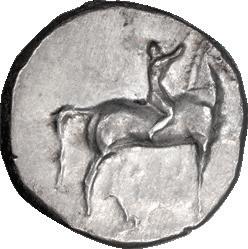






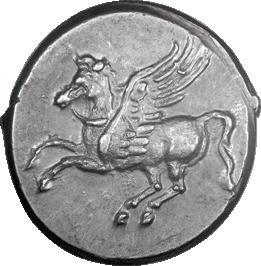



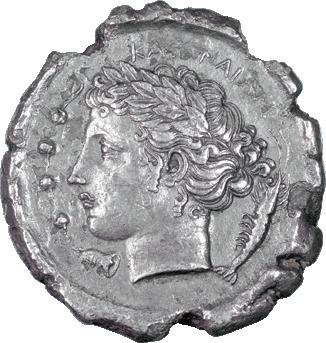







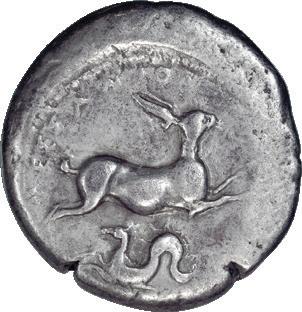
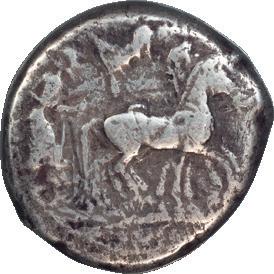








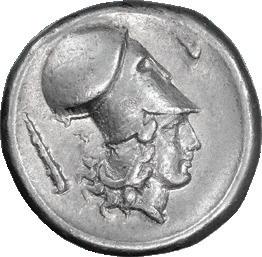



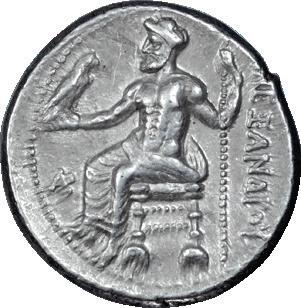




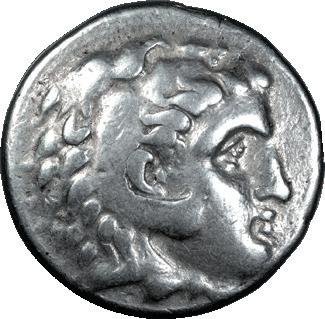





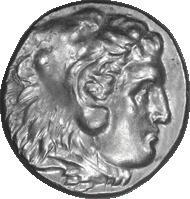

58 37 59 49 46 34 44 55 57 42 38 39 3635 50 53 41 48 40 43 51 52 47 60 54 56
71. EUBOEA, HISTIAIA; Third cent.-146 BC, Tetrobol, 2.08g. Cf. Sear-2496. Obv: Head of Maenad r. wearing wreath formed of bunches of grapes. Rx: ΙΣT[I] - ΑΙΕΩΝ
Nymph Histiaea seated r. on stern of galley, holding mast with cross-piece; unclear symbol on prow and letter or monogram below. EF 165
72. EUBOEA, HISTIAIA; Third cent.-146 BC, Tetrobol, 2.47g. BCD-378. Obv: Head of Maenad r. wearing wreath formed of bunches of grapes. Rx: ΙΣΤ - [I]ΑΙΕΩΝ
Nymph Histiaea seated r. on stern of galley decorated with wing, holding mast with cross-piece; monogram AΓ below. Rare with this monogram on reverse; not in BMC, SNG Copenhagen, or SNG Lockett. EF 300
73. ATTICA, ATHENS; c. 454-449 BC, Tetradrachm, 17.10g. Starr-Group V.B. Obv: Helmeted head of Athena r. Rx: Owl standing r., head front, olive twig with two leaves behind, AΘE in r. field. From the Mark Gibbons Collection. Toned EF 3000
74. ATTICA, ATHENS; c. 440 BC, Tetradrachm, 17.16g. Obv: Helmeted head of Athena r. Rx: Owl standing r., head front; behind, olive twig with two leaves and crescent; before, ethnic AΘE downwards. Wonderful image of Athena, which seems to show an archaic smile. EF / VF 2000
75. ATTICA, ATHENS; c. 435 BC, Tetradrachm, 17.21g. Obv: Helmeted head of Athena r. Rx: Owl standing r., head front, crescent and olive twig with two leaves behind, ΑΘΕ downwards in r. field. From the Mark Gibbons Collection. EF / VF.2250
76. ATTICA, ATHENS; c. 435 BC, Tetradrachm, 17.19g. Obv: Helmeted head of Athena r. Rx: Owl standing r., head front, crescent and olive twig with two leaves behind, ΑΘΕ downwards in r. field. From the Mark Gibbons Collection. Full Crest. MS 2850
77. ATTICA, ATHENS; c. 430 BC, Tetradrachm, 17.17g. Obv: Helmeted head of Athena r. Rx: Owl standing r., head front, crescent and olive twig with two leaves behind, ΑΘΕ downwards in r. field. From the Mark Gibbons Collection. MS 2250
78. ATTICA, ATHENS; c. 430 BC, Tetradrachm, 17.20g. Obv: Helmeted head of Athena r. Rx: Owl standing r., head front, crescent and olive twig with two leaves behind, ΑΘΕ downwards in r. field. From the Mark Gibbons Collection. MS 2500 Egyptian Imitation
79. ATTICA, ATHENS; Egyptian imitative issue, c. 430 BC, Tetradrachm, 17.34g. Obv: Helmeted head of Athena r. Rx: Owl standing r., head front, crescent and olive twig with two leaves behind, ΑΘΕ downwards in r. field. From the Mark Gibbons Collection. This perfectly struck, beautifully centered Athenian-type tetradrachm does not have the look of Athens, and was in fact minted in Egypt. It is full weight, and otherwise correct. In reality, many of the sloppy Athenian tetradrachms of the same period were probably minted in Egypt or Syria, but a good reference has thus far never been published. MS 2000 Thompson 148b, This Coin
80. ATTICA, ATHENS; 180-170 BC, Drachm, 4.22g. Thompson-148b (this coin). Obv: Helmeted head of Athena r. Rx: Owl standing r., olive sprig in l. field, AΘΕ in r. field. Ex Berk 89, 14 February 1996, lot 136. From the Attic Hoard found 1n 1955, (Thompson pp. 478-9,) acquired intact by the ANS, but our coin and a few other die duplicates were not retained. Some iridescent toning. EF 1500
81. CRETE, GORTYNA; c. 98-94 BC, Drachm, 4.16g. Cf. BM-54 and Sear-3186 (both with wreath in field on reverse). Obv: Diademed head of Zeus l. Rx: Nude warrior standing facing; r. hand on shield, l. hand holding spear; border of rays. Traces of overstriking at upper left on reverse. Part of reverse flatly struck as this was overstruck on an earlier coin. Flan crack at 1 o’clock. aEF / EF 775
82. PONTIC, MITHRADATES VI; 83-82 BC, Second Mithradatic War, Odessa, Tetradrachm, 16.15g. Obv: Portrait of Mithradates as Alexander III as Hercules. Rx: Zeus seated. Excellent portrait of Mithradates. These coins were issued for the second Mithradatic war, which ended so quickly that the coins never reached circulation. Some areas of flat striking and worn reverse die. EF 900
83. IONIA, EPHESUS; 83/2 BC, Cistophoric Tetradrachm, 12.51g. Obv: Serpent emerging from cista mystica; all within ivy wreath. Rx: Two serpents entwined around bow and bowcase; headdress of Isis above, NB (date) above civic monogram EΦE to l., torch to r. From the Mark Gibbons Collection. EF 400
84. MYSIA, PERGAMUM; c. 76 BC, Cistophorus, 12.46g. Kleiner, Museum Notes 23, 1978, pl. 14, 26; SNG Paris-1728. Obv: Snake emerging l. from half-open cista mystica, all within ivy wreath. Rx: Bow in case between two serpents with intertwined tails; ΠEPΓ monogram to l., snake-entwined staff to r., ΠPY monogram in wreath between the serpents’ heads, large letters AΠ above. EF 500
85. MYSIA, PERGAMUM; c. 76 BC, Cistophoric Tetradrachm, 12.60g. Kleiner-16, SNG France-1721. Obv: Serpent emerging from cista mystica; all within ivy wreath. Rx: Two serpents entwined around bow and bowcase; AY above, civic monogram in l. field, serpent-entwined thyrsus to r. From the Mark Gibbons Collection. Snake’s head flatly struck. EF 350
86. ACHAEMINID EMPIRE, LYDIA, SARDES; Xerxes II-Artaxerxes II, 420-375 BC, c. 420375 BC, Siglos, 5.46g. Sunrise-29, Carradice -Type IIIb C. Obv: The Great King running r., holding spear pointing diagonally downwards and bow, quiver over shoulder. Rx: Oblong incuse. aEF 700
87. LYDIA, CROESUS; 560-546 BC. Heavy Stater, 10.38g. Berk-19. Obv: Forepart of roaring lion r. confronting forepart of bull l. Rx: Two incuse punch marks. Beautifully centered. aEF 4850
88. LYDIA, CROESUS; 560-546 BC, 1/12 Stater, 0.78g. Berk-27. Obv: Confronted foreparts of roaring lion and bull. Rx: Incuse. EF 685
89. LYDIA, CROESUS; 560-546 BC, 1/12 Stater, 0.79g. Berk-27. Obv: Confronted foreparts of roaring lion and bull. Rx: Incuse. EF 700
LYDIA, CROESUS; 561-546 BC, 1/24 Stater, 0.40g. Berk-30. Obv: Confronted foreparts of lion and bull. Rx: Incuse punch. EF 500
ARCADIA, MEGALOPOLIS; 175-168 AD, Triobol, 2.32g. BCD-1548. Obv: Laureate head of Zeus l. Rx: Pan seated l. on rock, raising his r. hand above eagle standing in his lap, and holding lagobolon in l. hand. Ex Berk 199, 27 September 2016, lot 77. Back of head flatly struck. gVF 425
PAPHLAGONIA, SINOPE; c. 490-425 BC, Drachm, 5.98g. SNG BM Black Sea1361; Kraay, NC 1981, pl. 2, 31. Obv: Head of sea eagle l., small dolphin below (off flan). Rx: Double incuse punch with pellets at center. From the Philip T. Ashton Collection, acquired from Berk 141, 5 January 2005, lot 110. High relief. Good VF 400
93. PERGAMUM, ATTALUS I; 241-197 BC, Tetradrachm, 16.97g. Westermark-V. XCIV. Obv: Head of Philetairos r., wearing laurel wreath entwined with diadem. Rx: ΦIΛETAIPOY downwards on l., Athena wearing crested helmet seated l. on throne, extending her r. arm to crown the king’s name with a laurel wreath; her l. elbow rests on shield ornamented with gorgoneion, and a spear emerges transversely above her l. shoulder; EYMO monogram below her r. arm, cornucopia in outer l. field, and bow in r. field. VF / Fine 485
94. CARIA, RHODES; c. 205-188 BC, Drachm, 2.48g. BM-153, SNG Keckman-586. Obv: Radiate head of Helios facing slightly to r. Rx: P - O to either side of rose with tendril r., magistrate’s name [Α]ΙΝΗΤΩ[Ρ] above, butterfly in field l. Good VF 275
95. CARIA, PSEUDO-RHODES; c. 195-150 BC, Drachm, 2.47g. Ashton, PseudoRhodes, NC 1988-45 (A8/P37). Obv: Head of Helios three-quarters facing r. Rx: Rose with bud; magistrate’s name above (ΣΤΡΑΤΩ); tendril to l. No ethnic. When these coins first came into the market fifty years ago, they came from one find, which was presented to dealers in a Ball jar. MS 425
96. PAMPHYLIA, ASPENDUS; c. 465-430 BC, Stater, 10.77g. SNG Aulock-4483 var. Obv: Naked warrior advancing r. holding shield and spear. Rx: Triskeles of human legs, E - Σ above, all within incuse square. Obverse struck with worn die. VF 325
97. SELEUCID, ANTIOCHUS I; 281-261 BC, Seleucia on the Tigris, Tetradrachm, 16.98g. SC-379.3a. Obv: Diademed portrait of Antiochus I r., Rx: ΒΑΣΙΛΕΩΣ ΑΝΤΙΟΧΟΥ Apollo, slight drapery on r. thigh, seated l. on omphalos, holding arrow and resting l. hand on grounded bow, dotted border, control marks in l. and r. fields. Struck in high relief. aVF 450
98. SYRIA, ANTIOCHUS II THEOS; 261-246 BC, Seleucia on the Tigris, Tetradrachm, 16.95g. SC-587.4c. Obv: Diademed head of Antiochus I r. Rx: ΒΑΣΙΛΕΩΣ ΑΝΤΙΟΧΟΥ Apollo, slight drapery on r. thigh, seated l. on omphalos, testing arrow and resting l. hand on bow, control marks in left and right fields. VF 425
99. SYRIA, ANTIOCHUS VIII; Third Reign at Antioch, 109-96 BC, Tetradrachm, 14.89g. SC-2309.2c. Obv: Diademed head of Antiochus VIII r., diadem ends falling straight behind, fillet border. Rx: [Β]ΑΣΙΛΕΩΣ / ΑΝΤΙΟΧΟV in two lines on r., ΕΠΙΦΑΝΟ[VΣ] on l., Zeus enthroned l. holding Nike and scepter, in l. field PE conjoined above A, below throne ΛIo monogram, laurel wreath border. EF 500
100. SELEUCUS II, 246-226 BC; Perhaps Magnesia on the Maeander, Drachm, 4.26g. SC-669.2. Obv: Head of king r. Rx: Apollo standing l., monograms inner l. and outer r. Obverse softly struck. MS 500
101. PHOENICIA, TYRE; 400-332 BC, Dishekel, 12.90g. Cf. BM-11 and Sear-5911. Obv: Melkart bearded riding hippocamp with curled wings r. and holding bow; below, two lines of waves and dolphin r. Rx: Owl standing r., head facing, crook and flail behind shoulder; in r. field, Phoenician letter. Ex Berk 81, 31 March 1994, lot 216. Fine 400
102. PHOENICIA, TYRE; 49/8 BCE, Shekel, 14.30g. Obv: Laureate bust of Melqart r., with lionskin knotted around neck. Rx: TVPOV IEPAΣ KAI AΣVΛOV Eagle with palm branch over shoulder, standing l. with r. foot on prow of ship, OH (date) and club in l. field, BN in r. field. Ex Sasson Family collection, started in 1925. Toned EF 2850
Crucifixion Date Finest Known
103. SHEKEL OF TYRE; Year 159=33/4 CE, Shekel, 13.96g. RPC-4663. Obv: Laureate head of Melqart r. Rx: TYPOY IEPAΣ - [ΚΑΙ AΣYΛOΥ] Eagle with r. foot on [prow] and palm branch over shoulder, in l. field club and date [P]NΘ = 159 = 33/4 CE, in r. field KP and NAP monogram. Struck in the year of the Crucifixion. For an issue this common, we rarely, if ever, make the statement that the coin is the finest known. But this coin is so utterly flawless, and so uncirculated, that there can be nothing finer. The small flan reflects the fact that Herod had contracted with Tyre to mint smaller coins of the same weight. Each half-shekel represented the tax paid by Jewish for the upkeep of the temple. MS 14000
Magnificent Mint State
104. PARTHIA, MITHRADATES II; 123-88 BC, Drachm, 4.22g. Sellwood-27.1, Sunrise-293. Obv: Diademed bust of king l. with long beard, wearing earring, torque on neck ends in sea horse. Rx: ΒΑΣΙΛΕΩΣ / ΒΑΣΙ - ΛΕΩN / ΜΕΓΑΛΟY / ΑΡΣΑΚΟY / ΕΠIΦΑNOYΣ Archer seated r. on throne, holding out bow. MS 1000
Exquisite Mint State
105. PARTHIA, MITHRADATES II; 123-88 BC, Drachm, 4.18g. Sellwood-28.4, Sunrise-301. Obv: Bust of king l. with long beard, wearing tiara with star in center, torque on neck ends in pellet. Rx: ΒΑΣΙΛΕΩΣ
-
Archer seated r. on throne, holding out bow. Mint State 750
Exceptional Mint State
106. PARTHIA, PHRAATES IV; 38-2 BC, Drachm, 3.99g. Sellwood-52.32-3 var., Sunrise-395 var. Obv: Diademed bust of king l. with pointed beard and wart on brow; eagle behind crowning him with wreath. Rx: Archer seated r. on throne holding bow, MTφ monogram below bow, uncertain letter (B?) behind archer’s head. Not in Sellwood or Sunrise with this uncertain letter behind the archer’s head. Mint State 650
Extremely Sharp Mint State
107. PARTHIA, PHRAATES IV; 38-2 BC, Drachm, 4.03g. Sellwood-52.32-3 var., Sunrise-395 var. Obv: Diademed bust of king l. with pointed beard and wart on brow; eagle behind crowning him with wreath. Rx: Archer seated r. on throne holding bow, MTφ monogram below bow, Ι behind archer’s head. Not in Sellwood or Sunrise with this letter behind the archer’s head. Mint State 400
Amazing Mint State
108. PARTHIA, MEHERDATES; c. 49-51 AD. Drachm, 3.23g. Sunrise-417, Sellwood-67.1 (Vonones II), Shore-368 (Vonones II). Obv: Helmeted bust of king facing, wart on brow, wearing tiara; stars to either side. Rx: Archer seated r. on throne, A. below bow. See Sunrise p. 141 for the suggested attribution of this coin to Meherdates rather than Vonones II. Mint State 500
109. PARTHIA, ARTABANUS V; c. 79/80-85 AD, Drachm, 3.81g. Sunrise-442, Sellwood-74.6 (Artabanus III). Obv: Bust of king l. with long, square-cut beard, wearing diadem and earring. Rx: Archer seated r. on throne, below bow monogram A with stroke above and pellet below. Extremely broad flan. Mint State 400
/
90.
91.
92.
/ ΒΑΣΙ
ΛΕΩN / ΜΕΓΑΛΟY
ΑΡΣΑΚΟY / ΕΠIΦΑNOYΣ
110. PARTHIA, PACORUS I; c. 78-120 AD, Drachm, 3.16g. Sunrise-439, Sellwood-78.6 (Vologases III). Obv: Bare-headed bust of king l. with long pointed beard, wearing diadem with large loop behind and earring. Rx: Archer seated r. on throne holding bow, below bow a large A monogram topped by horizontal stroke and with pellet below, Greek legend in straight lines around. Mint State 400
111. PARTHIA, VOLOGASES VI; 208-228 AD, Drachm, 3.61g. Sellwood-88.18. Obv: Bust of king l. with pointed beard, wearing tiara with pellets on stalks on top and a line of pellets on stalks on side; Ic monogram behind. Rx: Archer seated r. on throne holding bow, below bow large Π. Mint State 300
112. PARTHIA, VOLOGASES VI; 208-228 AD, Drachm, 3.69g. Sellwood-88.19, Sunrise-459. Obv: Bust of king l. with pointed beard, wearing tiara with pellets on stalks on top and a line of pellets on stalks on side; Ic monogram behind. Rx: Archer seated r. on throne holding bow, below bow large A topped by horizontal stroke. Mirror-like surfaces. FDC 400
113. PARTHIA, VOLOGASES VI; 208-228 AD, Drachm, 3.36g. Sellwood-88.19, Sunrise-459. Obv: Bust of king l. with pointed beard, wearing tiara with pellets on stalks on top and a line of pellets on stalks on side; Ic monogram behind. Rx: Archer seated r. on throne holding bow, below bow large A topped by horizontal stroke. Mirror-like surfaces. Mint State 400
114. BACTRIA, ATHENIAN SERIES; Uncertain mint in the Oxus region, c. 261-238 BC, Tetradrachm, 16.79g. Bopearachchi-Sophytes Serie 1A. Obv: Head of Athena r., monogram behind. Rx: Owl standing r., head facing; olive sprig and crescent behind. Ex Roma XIX, 26 March 2020, lot 623. From the 1960s Andragoras-Sophytes Group, present in Germany in 1975, subsequently exported to the USA. From the Mark Gibbons Collection. EF 1800
115. BACTRIA, EUCRATIDES; c. 171-135 BC. Tetradrachm, 16.37g. BopearachchiSerie 6W var. (monogram placement), Sear-7570 var. Obv: Draped, cuirassed bust of Eucratides r., wearing crested helmet decorated with bull’s horn and ear; fillet border. Rx: ΒΑΣΙΛΕΩΣ ΜΕΓΑΛoY above, ΕΥΚΡΑΤΙΔoΥ in exergue, the Dioscouri on horses prancing r., each holding spear and palm; WA monogram in lower l. field behind horses. Bopearachchi knew this tetradrachm only with the monogram placed in the lower right rather than lower left field. Two other specimens apart from ours with monogram to left not right: Berk 168, 16 March 2010, lot 156, and CGB Paris, June 2017, lot 53. EF with luster 2000
116. PTOLEMAIC, PTOLEMY II; 285-246 BC. Sidon, Year 25 = 261/0 BC, Tetradrachm, 14.14g. CPE-508. Obv: Diademed head of Ptolemy I r., wearing aegis. Rx: ΠToΛEMAIoY - ΣΩTHP[oΣ] Eagle with folded wings standing l. on thunderbolt, ΣΙ and N in circle before, KE monogram (Year 25) behind. About EF 300 Salamis Mint
117. PTOLEMAIC, PTOLEMY VI; 180-145 BC. Salamis, Year 22 (=159/8 BC), Tetradrachm, 14.06g. Svoronos-1455. Obv: Diademed bust of Ptolemy I r., wearing aegis. Rx: ΠTOΛEMAIOY - BAΣIΛEΩΣ Eagle with closed wings standing l. on thunderbolt, date LKB before, ΣA behind. The rendering of the king’s hair is unusual on this specimen. EF 1500
Unpublished Monogram Placement
118. CYRENAICA, CYRENE, MAGAS REIGN; c. 294-275 BC, Didrachm, 7.71g. BM-246-7 var. (position of monogram), SNG Cop-. Obv: Head of Zeus Carneius l. Rx: Silphium, KY PA to either side, monogram in upper l. field. Apparently unpublished with this monogram placement. Ex CNG 120, 11 May 2022, lot 530. The image of Zeus Carneius on this coin is rather different and exceptional, possibly showing the portrait of a local governor. MS 3000
GREEK BRONZE
119. GAUL, SUESSIONES UNIT; 2nd-1st cent. BC, Unit, 4.67g. BM-473, De La Tour7870. Obv: Stylized head r., with elaborately curled hair. Rx: Horse galloping l. Ex Pegasi A25, November 2011, lot 13. EF 350
120. SPAIN, BARSKUNES; Second half of 2nd cent. BC, AE 23, 12.08g. SNG BM Spain-894. Obv: Bearded male head r., dolphin under chin. Rx: Horseman carrying sword r. Rare. Ex Vico 143, Nov. 2015, lot 51. EF 600
121. APULIA, TEATE; c. 225-200 BC, Triens, 11.07g. ANS SNG-754. Obv: Head of Hercules r. wearing lionskin headdress. Rx: TIATI Lion walking r., club and crescent above, four pellets in exergue.
Ex Triton VIII, 11 January 2005, lot 24
Ex Triton V, 15 January 2002, David Freeman Collection of Greek Bronze Coins, lot 44
Ex Sternberg XX, 20 April 1988, lot 44. Extremely sharp, wonderful surfaces. Dark green patination with exceptional quality. Choice EF 950
122. SICILY, AKRAGAS; Early 5th cent. BC, Trias, 9.73g. SNG ANS-1038, Sear-1023. Obv: [AK] - PA Eagle r., wings spread, holding in its talons hare, which it attacks with its beak. Rx: Crab; beneath, three pellets and crayfish l. VF / EF 185
123. SICILY, KAINON; c. 365 BC, AE 21-26, 9.37g. Cf. SNG ANS-1175 and HGC-p. 147. Obv: Griffin flying l., [grasshopper] below. Rx. Horse prancing l., 8-pointed star above, [KAINON] in exergue. Possibly a flip strike: the griffin’s wing from the first strike reappears above the horse’s tail of the second strike and the horse’s forelegs similarly reappear below the griffin on the other side. The cup-shaped fabric of the griffin side suggests that it might be the reverse on this specimen, in which case the flat horse side would be the obverse, rather than vice versa as described in the standard catalogues. EF 400
124. SICILY, CAMARINA; 425-405 BC, Tetras, 3.44g. Calciati-21, SNG ANS-1227. Obv: Gorgoneion. Rx: Owl standing l., head facing, lizard in claw; three pellets in exergue. EF 250
125. SICILY, CAMARINA; 425-405 BC, Tetras, 3.61g. Calciati-28. Obv: Head of Athena l. Rx: Owl stg. l., lizard in claw; KAMA behind, three pellets in exergue. VF 200
126. SICILY, HIMERA; Hemilitra, Sicily, Himera, c. 420-408 BC, 2.95g. Calciati I- p. 43, 35; Klein-44; SNG ANS-186. Obv: Head of nymph l. with 6 pellets in front of face. Rx: Six pellets in two rows, within laurel wreath. EF 275
127. SICILY, HICETAS; 288-279 BC, AE 21, 9.18g. Calciati-157. Obv: Head of young Zeus l., palladium behind. Rx: Eagle standing l. VF 225
128. SICILY, AGATHOKLES; 317-289 BC. AE 19x20, 8.31g. Calciati-142, Sear-1200.
Obv: ΣΩTEIPA Bust of Artemis r., quiver at shoulder. Rx: Winged thunderbolt, [AΓ] AΘOKΛEOΣ / BAΣIΛEOΣ above and below. Good VF 200
Exquisite Portrait
129. SICILY, HIERON II; c. 240-215 BC, AE 25-25.5, 16.43g. Calciati-193 Ds 19 (not illustrated, citing Gabrici), HGC-1547. Obv: Young laureate head of Hieron l., caduceus behind. Rx: IEPΩNO[Σ] in exergue, Helmeted horseman r., holding spear horizontally in lowered r. hand. From the Mark Gibbons Collection. Rare with caduceus symbol behind portrait. This an exquisite portrait of King Hieron, with a wonderful apple-green patination. He ruled for decades, but unfortunately, he produced an idiot son, who decided to back the Carthaginians over the Romans. Choice EF 800
130. SICILY, HIERONYMOS; 215-214 BC, AE 20-21, 8.87g. Calciati-204 Rl 2, Sear1224 var. Obv: Diademed head of Hieronymos l. Rx: BAΣIΛEOΣ / [IEPΩN]YMO[Y] Winged thunderbolt, Φ above, Θ below. The idiot son of King Hieron, who decided to back the Carthaginians over the Romans. Bold Fine 175 Lorber 19 (this coin)
131. ZEUGITANIA, CARTHAGE; Tridrachm, 9.36g., Group 2, 215-213 BC. Lorber-19, pl. 54 (this coin). Obv: Young Tanit head l., wearing wreath of wheat ears and single-pendant earring. Rx: Horse standing r., palm tree behind. From the ‘Commerce, 1995’ Hoard, published by Catherine C. Lorber, A Hoard of Punic “Horse and Palm” Billon Tridrachms, Coin Hoards XI, London 2002 Exceptional, perfectly-centered example of this early Carthaginian issue. As struck. EF 2000
Lorber 81 (this coin)
132. ZEUGITANIA, CARTHAGE; Tridrachm, 11.35g., Group 3, 213-210 BC. Lorber-81, pl. 58 (this coin). Obv: Head of young Tanit l. wearing wreath of wheat ears and single-pendant earring. Rx: Horse standing r., palm tree behind From the ‘Commerce, 1995’ Hoard, published by Catherine C. Lorber, A Hoard of Punic “Horse and Palm” Billon Tridrachms, Coin Hoards XI, London 2002 Exceptional quality, from the same hoard as the previous lot; however, artistically, this is similar to the portrait of Tanit used for silver didrachms. Mint State 1750 Lorber 166 (this coin)
133. ZEUGITANIA, CARTHAGE; Tridrachm, 10.62g., Group 4, 213-210 BC. Lorber-166, pl. 62 (this coin). Obv: Head of young Tanit l. wearing wreath of wheat ears and triple-pendant earring. Rx: Horse standing r., palm tree behind. From the ‘Commerce, 1995’ Hoard, published by Catherine C. Lorber, A Hoard of Punic “Horse and Palm” Billon Tridrachms, Coin Hoards XI, London 2002. From the same find the two previous coins, but struck at a later time. That said, they all seem to have been circulating together, as they were found together. Mint State 1000
134. ZEUGITANIA, CARTHAGE; Sicilian mint, c. late 4th - early 3rd cent. BC, AE 15-16, 2.87g. SNG Cop-109. Obv: Head of Tanit l. wearing wheat-ear wreath and pendant necklace. Rx: Horse standing r. in front of palm tree. EF 200
Rare Portrait of King Masinissa
135. NUMIDIA, MASINISSA; 208-148 BC of later. AE 26, 13.82g. Cf. SNG Cop-496. Obv: Laureate head of king r., beardless, but not listed as such. Rx: Horse running l. With an old 2x2 envelope from the coin dealer E. Boudeau, Paris, c. 1930, with his name, the coin description, and the price (0.40 francs) hand-written in French. A very rare portrait variant, apparently showing the king beardless rather than bearded as expected. gVF / Fine 1500
136. ALEXANDER, KING OF THE MOLOSSIANS, EPIRUS, 342-330 BC; c. 334332 BC, AE 15.5-16.5, 3.57g. BM-6, SNG Cop-90, Sear-1987. Obv: Eagle standing r. between tripod and laurel spray. Rx: ΑΛΕΞA /ΤΟΥ ΝΕ above and below thunderbolt; all within wreath. From the Mark Gibbons Collection. Extremely sharp, beautifully centered. EF 225
137. MACEDONIA, PHILIP II; 359-336 BC. AE 17, 7.79g. SNG ANS-877. Obv: Head of Apollo r., wearing taenia. Rx: Naked youth on horse prancing r., ΦΙΛIΠΠoΥ above, inverted causia or petasus with hanging strings below. VF 150
138. ALEXANDER THE GREAT, MACEDONIAN KOINON UNDER GORDIAN III; AE 25, 13.12g. AMNG-647 (2 spec.). Obv: ALEΞANΔPOV Diademed head of Alexander r. with flowing hair. Rx: KOINON MAKEΔON[ΩN B] NEΩKO Rider with cloak flying from shoulders, raising r. arm to hurl spear downwards, on horse leaping r.; star in field below horse. Our coin fits the description of AMNG-647, but it is hard to check whether or not the dies are the same since almost none of them are illustrated. VF 250
139. THRACE, MARONEIA; c. 189-45 BC, AE 26x27, 15.41g. BM-72, SNG Cop-644, Sear-1638. Obv: Head of young Dionysus r., wreathed with ivy and with band across forehead. Rx: ΔIONYΣOY - [ΣΩ]TH[POΣ / MAPΩ]NITΩN Dionysus standing l. holding bunch of grapes and two narthex wands; PΔΙY monogram in l. field. From the Mark Gibbons Collection. An exceptional example of this rather common coin. Choice EF 250
Crouched Archer
140. DANUBIAN DISTRICT, OLBIA; 3rd cent. BC, AE 13, 1.87g. Cf. SNG BM541-9. Obv: Head of Demeter l., turreted and wearing wheat-ear wreath. Rx: Archer crouching l., drawing bow; behind, OΛB. .upwards; in exergue, B Λ. Exceptionally well preserved, and with an unusual archer type for a bronze coin. Mint State 250
Incredible Satyr
141. TAURIC CHERSONESUS, PANTICAPAEUM; 4th cent. BC, AE 19, 6.52g. SNG BM-869, SNG Cop-30. Obv: Head of bearded satyr r. Rx: Forepart of griffin l., sturgeon below, Π - A - N around. Extremely powerful image of a satyr, incredible detail. Mint State 300
142. TAURIC CHERSONESUS, PANTICAPAEUM; 4th-3rd cent. BC, AE 15, 3.48g. MacDonald-71, SNG BM-872. Obv: Head of young Pan r. Rx: Π - A - N Forepart of Pegasus r. with curled wing. Ex CNG E287, 26 September 2012, lot 86. EF 235
143. THESSALY, PELINNA; Late 4th-3rd cent. BC, AE 17, 6.03g. BCD-Thessaly II, 534.4. Obv: Veiled head of Mantho r. Rx: Thessalian warrior, holding spear, on horse rearing r.; Σ below. EF 200
144. THESSALY, PELINNA; AE 21x22, 7.26g. BCD-Thessaly (Nomos 4)-1385.1; Rogers-20. Obv: Laureate head of Apollo r. Rx: Athena Itonia advancing r. holding shield and brandishing spear; ΘEΣΣA / ΛΩN behind and before her, ΘPA and owl above her spear. With traces of doublestruck or overstruck chin and lips at upper right edge of obverse before Apollo’s forehead Exceptional quality. Mint State 400

















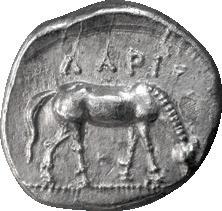







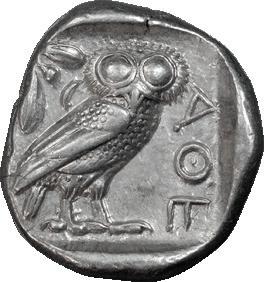












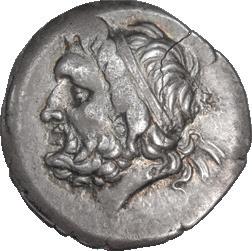

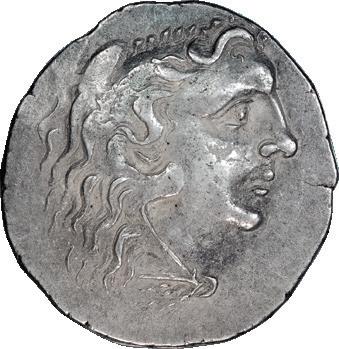


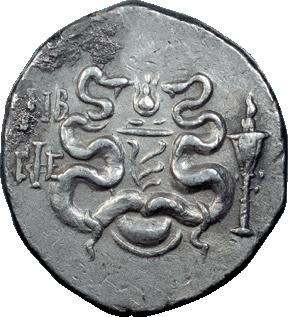






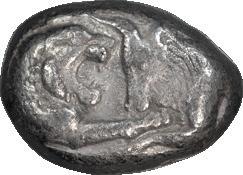










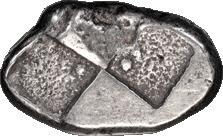

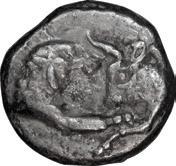

63 69 71 7573 92 89 80 7472 67 70 6865 61 62 64 76 84 85 79 91 8381 82 77 78 86 90 87 88
145. PONTUS, AMISUS; Time of Mithradates VI, c. 85-65 BC, AE 18x19, 8.06g. Malloy-14d, HGC-245. Obv: Laureate head of Zeus r. Rx: AMIΣO[Y] Eagle standing l. on thunderbolt, head r.; monogram to l. Ex CNG E390, 1 Feb. 2017, lot 119. Near Mint State 250
146. MYSIA, CYZICUS; 3rd century BC, AE 29, 15.00g. SNG Paris BN-438, SNG von Aulock-1231. Obv: Prow r. Rx: Bucranium facing within wreath. Overstruck on an earlier issue. Choice EF 450
Exceptional Image of Kore
147. MYSIA, CYZICUS; 3rd-2nd centuries BC, AE 28, 16.53g. SNG Paris BN-443, SNG von Aulock-1242. Obv: Bust of Kore r. Rx: Tripod. Exceptional image of Kore, as struck. 600
148. LYDIA, BAGIS, PSEUDO-AUTONOMOUS; Bagis, Lydia, Archon Diogenes, c. 193-217 AD, AE 16, 1.88g. Kurth-21 (same dies). Obv: Bust of Herakles r., with lionskin draped around neck and club over l. shoulder. Rx: Є - [Π]I ΔIO - ΓЄN around, BAΓHN/ΩN in exergue, Lion walking r. From the Mark Gibbons Collection. Extremely sharp. Choice EF 200
149. LYDIA, TRIPOLIS; Tripolis, Lydia, Severan period, c. 193-235 AD, AE 18x20, 3.35g. SNG Aulock-3311, Kurth-67. Obv: Draped bust of Serapis r., wearing kalathos. Rev. TPIΠΟ - ΛЄITΩN Isis standing l., holding sistrum and situla. From the Mark Gibbons Collection. Wonderful bust of Serapis joined with a standing figure of Isis on the reverse. Choice EF 275
Possibly Unpublished
150. PHRYGIA, CIBYRA; Cibyra, Phrygia, Severan period, c. 193-235 AD, AE 23, 7.82g. Possibly unpublished, apart from the appearance of this same specimen in Leu E16, 22 May 2021, lot 2809: not in BMC, not in the SNG volumes for Aulock, Copenhagen, Leypold, or Munich. Obv: KAICA - PEΩN Diademed, draped bust r. of uncertain goddess. Rx: KIBYP - AT[Ω]N Mên standing l. wearing Phrygian cap and with crescent on his shoulders, holding patera in his r. hand and scepter in his l. From the Mark Gibbons Collection, ex Leu E16, 22 May 2021, lot 2809. Exceptional image of an unidentified goddess, with the god Mên on the reverse. Near MS 585
151. PHRYGIA, GRIMENOTHYRAE; Grimenothyrae, Phrygia, Magistrate Lucius Tullius, Time of Trajan, AE 17x18, 5.01g. RPC-2483 (15 spec.). Obv: ЄΠI - M TYΛΛI Head of Zeus r., wearing taenia; before, small eagle standing r., looking back. Rev. ΓΡΙΜЄΝΟ - ΘΥΡЄΩΝ Athena standing r., holding spear and shield which rest on ground. From the Mark Gibbons Collection. Exceptional head of Zeus, phenomenal detail. MS 400
152. PHRYGIA, HIERAPOLIS; Hierapolis, Phrygia, AE 14.5-15, 2.35g. BM-21, SNG Cop-416. Obv: Head of Athena r., wearing crested Attic helmet. Rx: IЄPAΠΟΛЄITΩN Hermes standing l., holding purse in his r. hand and caduceus in his l. From the Mark Gibbons Collection. A very sharp and well centered specimen of this small bronze coin. EF 250
153. PHRYGIA, LAODICEIA AD LYCUM; Laodiceia ad Lycum, Phrygia, Ioulia Zenonis, under Nero, c. 62 AD, AE 17, 3.06g. RPC-2925 (8 spec.). Obv: ΛAOΔI - KHA Turreted and draped bust of the city-goddess r. Rx: IOYΛIA - ZHNΩNIΣ Aphrodite standing r. holding long scepter and apple. From the Mark Gibbons Collection. MS 365
154. GALATIA, AMYNTAS; 36-25 BC. AE 21-21.5, 6.56g. RPC-3502. Obv: Head of Hercules r. with club over shoulder. Rx: Lion walking r., BAΣΙΛΕΩΣ above, AMYNTOY in exergue. Softly-struck obverse. MS 350
155. CILICIA, SOLOI-POMPEIOPOLIS; c. 100-30 BC, AE 21x22, 4.51g. SNG Levante-859. Obv: Diademed, draped bust of Artemis r., with bow and quiver over her l. shoulder. Rx: ΣΟΛΕΩN Athena advancing r., brandishing thunderbolt and holding up shield. From the Mark Gibbons Collection. Near Mint State 250 Lovely portrait of Iotape
156. COMMAGENE, QUEEN IOTAPE; Commagene, Iotape, Queen of Antiochus IV (38-72 AD), AE 28, bevelled edge, 12.34g. Butcher p. 456, no. 2; cf. RPC-3853 (6 spec.) and Sear-5514. Obv: BACIΛICA IΩT - A - ΠH ΦIΛAΔEΛ Diademed, draped bust of Iotape r. Rx: KOMMA - ΓHNΩN to r. and l. of scorpion, all within wreath. RPC-3853, probably under the influence of RPC-3865, mistakenly doubles the final C in BACIΛICA, and adds ΦOC at the end of ΦIΛAΔEΛ. VF 400
157. BACTRIA, DEMETRIUS I; c. 200-185 BC, Trichalkon, 12.47g. SNG ANS212, Bopearachchi-Série 5 var. (monogram not listed), Mitchiner-1638-1640 var. (monogram not listed). Obv: Head of elephant with bell hanging from neck. Rx: ΒΑΣΙΛΕΩΣ ΔΗΜΗΤΡΙΟΥ Caduceus with monogram to left. gVF 400
158. SYRIA, ANTIOCHUS VI; 144-142 BC, Serrate AE 23, 7.28g. SC-2006c. Obv: Diademed, radiate head of Antiochus VI r. Rx: Elephant walking l., holding torch in raised trunk; king’s name above and [below], ΣTA and star behind elephant. Fine 125
159. AGRIPPA I; 37-44 BC, Year 6 = 41/2 CE, Prutah, 2.44g. Hendin-6274. Obv: BAC[IΛE]W[C AΓ]PIΠA Umbrella-like canopy with fringes. Rx: Three ears of barley, flanked by date [L] - S. VF 125
160. JUDAEA, HEROD I THE GREAT; 40-4 BC, Prutah, 1.54g. Hendin-6214. Obv: Greek inscription [“Of King Herod”] around small diadem without cross (type unclear). Rx: Tripod table. VF 110
161. JUDAEA, HEROD I THE GREAT; 40-4 BC, Prutah, 1.59g. Hendin-6219. Obv: Anchor, Greek inscription “Of King Herod” around. Rx: Double cornucopia, filleted, with caduceus between the horns, dots above. aEF 110
162. JUDAEA, HEROD I THE GREAT; 40-4 BC, Half Prutah, 0.55g. Hendin-6221b, RPC-4909. Obv: Cornucopia Rx: Eagle standing l. Scarcer issue with eagle facing left rather than right. Fine 200
163. JUDAEA, HEROD I THE GREAT; 40-4 BC, Half Prutah, 0.79g. Hendin-6221, RPC-4909. Obv: Cornucopia. Rx: Eagle standing r. Fine 120
164. HEROD ARCHELAUS; 4 BC-6 AD. Prutah AE, 2.21g. Hendin-1196. Obv: EΘNAPXOY; crested helmet with cheek straps, viewed from front, caduceus below l. Rx: HPWΔOY; bunch of grapes on vine with small leaf on l. Exceptionally sharp, but struck on a normal, sloppy flan. aEF 125
165. JUDAEA, PONTIUS PILATE UNDER TIBERIUS; Year 17 or 18 = 30/31 or 31/32 CE, Prutah, 1.86g. Hendin-6371 or 6372. Obv: Date LIZ or LIH in wreath. Rx: Lituus surrounded by legend TIB[EPIOY] KA[ICAPOC] (of Tiberius Caesar). large flan split at 10h. VF 175
166. JUDAEA, PONTIUS PILATE UNDER TIBERIUS; Year 16=29/30 CE, Prutah,
2.41g. RPC-4967, Hendin-6370. Obv: Three bound ears of barley, the outer two ears droop, surrounded by [IOYΛΙΑ ΚΑΙCAPOC] (Julia, Caesar’s wife). Rx: Libation ladle (simpulum) surrounded by [TIBEPIoY KAIC]APo[C] (of Tiberius Caesar) and date [LIς] (Year 16). gVF 185
167. JUDAEA, THE JEWISH WAR; 66-70 CE, Year 2=67/68 CE, Prutah, 2.66g. Hendin-1360, Meshorer-196. Obv: Amphora with broad rim and two handles; “Year 2” around in Paleo-Hebrew. Rx: Vine leaf on small branch with tendril; “the Freedom of Zion” around in Paleo-Hebrew. EF 200
168. JUDAEA, THE JEWISH WAR; 66-70 CE, Year 3=68/69 CE, Prutah, 2.52g. Hendin-1363, Meshorer-204. Obv: Amphora with broad rim, two handles, and conical lid decorated with tiny globes hanging around edge; “Year 3” around in PaleoHebrew. Rx: Vine leaf on small branch with tendril; “the Freedom of Zion” around in Paleo-Hebrew. EF 165
Paphos
169. PTOLEMAIC, PTOLEMY VI; 180-145 BC. Paphos, before 168 BC, AE 25-26, 13.95g. Svoronos-1398; SNG Cop-294; Lorber, SNR 80, 2001, Series VI.3. Obv: Diademed and horned head of Zeus Ammon r. Rx: ΠTOΛEMAIOY - BAΣIΛEΩΣ Eagle with closed wings standing l. on thunderbolt, lotus before, EYΛ between eagle’s legs, rectangular anchor countermark behind eagle. Struck before 168 BC, if Lorber is correct to suggest that the Seleucid anchor countermark on many coins of this series was probably applied by the Seleucid king Antiochus IV after he briefly captured Cyprus from the Ptolemies in 168 BC; he may have transported a large quantity of captured Ptolemaic bronzes back to Antioch and countermarked them there with the Seleucid anchor. This is an exceptionally beautiful head of Zeus Ammon, struck at Paphos. Lovely green patination, exceptionally sharp. Virtually Mint State 450
ROMAN REPUBLICAN SILVER
170. M. ATILIUS SARANUS; 148 BC, Denarius, 3.51g. Cr-214/1b, Syd-398b, RSC Atilia 9. Obv: Head of Roma r., SARAN downwards behind. Rx: Dioscuri r., M.ATILI below. Lot includes old handwritten envelope from the French numismatist E. Boudeau, author of the early 20th-century work on the coins of Celtic Gaul “Monnaies gauloises” and other studies. Toned VF 150
171. C. TERENTIUS LUCANUS; 147 BC, Denarius, 4.00g. Cr-217/1, Syd-425, RSC Terentia-10. Obv: Helmeted head of Roma r., Victory behind. Rx: Dioscuri riding r., C TER LVC below hoses, ROMA in exergue. EF 250
172. L. ANTESTIUS GRAGULUS; 136 BC, Denarius, 4.01g. Cr-238/1, Syd-451, RSC Antestia-9. Obv: Helmeted head of Roma r., GRAG behind., mark of value below chin. Rx: Jupiter in quadriga r., L.ANTES below horses (ANTE ligate), ROMA in exergue. Mint State 425
173. C. SERVILIUS M.F.; 136 BC, Denarius, 3.95g. Cr-239/1, Syd-525, RSC Servilia-1. Obv: Helmeted head of Roma r., wreath behind, ROMA below. Rx: The Dioscuri galloping in opposite directions, [C S]ERVEILI M F in exergue. Ex Varesi, November 1989, lot 105. Near Mint State 325
174. C. SERVILIUS M.F.; 136 BC, Denarius, 3.84g. Cr-239/1, Syd-525, Servilia 1. Obv: Helmeted head of Roma r., wreath behind, ROMA below. Rx: The Dioscuri galloping in opposite directions, C SERVEILI M F in exergue. Toned EF / VF 225
175. M. VARGUNTEIUS; 130 BC, Denarius, 3.95g. Cr-257/1, Syd-507, RSC Vargunteia-1. Obv: Helmeted head of Roma r., M VARG behind, mark of value below chin. Rx: Jupiter in walking quadriga r., ROMA in exergue. MS 285
176. L. CASSIUS CAECIANUS; 102 BC, Denarius, 3.94g. Cr-321/1, Syd-594, Cassia 4. Obv: Bust of Ceres l. wearing wheat-ear wreath, CAEICIAN and A dot behind. Rx: Two yoked oxen l., plow and P before dot above, L. CASSI in exergue. Obv somewhat flatly struck. gVF 175
177. M. LUCILIUS RUFUS; 101 BC, Denarius, 4.00g. Cr-324/1, Syd-450, RSC Lucilia-1. Obv: Head of Roma r., PV behind; all within wreath. Rx: Victory in biga r.; RVF above, M LVCILI in exergue. Toned gVF 325
178. L. TITURIUS L.F. SABINUS; 89 BC, Denarius, 4.00g. Cr-344/1a, Syd-698, RPC Tituria-1a. Obv: Bearded head of King Tatius r.; before, TA monogram; behind, SABIN downwards. Rx: Two Roman soldiers stepping towards one another, each bearing Sabine woman in arms, L.TITVRI in exergue. VF 250
179. MN. FONTEIUS C.F.; 85 BC, Denarius, 3.93g. Cr-353/1d, Syd-724b, RSC Fonteia-11. Obv: Head of Vejovis r., C F below chin, thunderbolt below head., MN FONTEI behind. Rx: Infant winged Genius seated on goat r., caps of the Dioscuri to either side, thyrsus below, all within laurel wreath. Virtually Mint State 435
180. L. JULIUS BURSIO; 85 BC, Denarius, 3.76g. Cr-352/1a, Syd-728, Julia 5. Obv: Male head r., laureate and winged, uncertain symbol behind. Rx: L IVLI BVRSIO, Victory in quadriga r. Lot includes old handwritten envelope from the French numismatist E. Boudeau, author of the early 20th-century work on the coins of Celtic Gaul “Monnaies gauloises” and other studies. Some flat striking. EF 165
181. L. JULIUS BURSIO; 85 BC, Denarius, 3.30g. Cr-352/1a, Syd-728, RSC Julia-5. Obv: Male head r., laureate and winged, city gate behind. Rx: L IVLI BVRSIO, Victory in quadriga r. aEF 175
182. L. JULIUS BURSIO; 85 BC, Denarius, 3.59g. Cr-352/1a, Syd-728, RSC Julia-5. Obv: Male head r., laureate and winged, fist grasping feather behind. Rx: L IVLI BVRSIO, Victory in quadriga r. EF / VF 225
183. L. CENSORINUS; 82 BC, Denarius, 3.60g. Cr-363/1d, Syd-737, RSC Marcia-24. Obv: Laureate head of Apollo r. Rx: Marsyas walking l., raising r. hand and bearing wine skin over l. shoulder; behind, statue of Victory on column, L CENSOR before. Toned EF 285
184. TI. CLAUDIUS TI.F.AP.N.NERO; 79 BC, Serrate Denarius, 3.70g. Cr-383/1, Syd770, RSC Claudia-5. Obv: Draped bust of Diana r. wearing stephane, bow (whose upper end is in the form of a stag’s head) and quiver over shoulder, S.C upwards before. Rx: Victory in biga of horses galloping r., holding wreath in r. hand, reins and palm branch in l.; CXXVII below, in exergue TI CLAVD TI F / AP N (VD and AR ligate). According to Crawford each control numeral in this issue occurs on only one reverse die. aEF 285
185. L. PAPIUS; 79 BC, Denarius, 3.47g. Cr-384/1, Syd-773, RSC Papia-1. Obv: Head of Juno Sospita r. wearing goat skin; ram’s head behind. Rx: Griffin leaping r., jug below; in exergue L PAPI. Minor flat striking on griffin’s body. gVF 325
186. M. VOLTEIUS M.F.; 78 BC, Denarius, 3.96g. Cr-385/4, Syd-777, RSC Volteia-4. Obv: Helmeted bust of Attis r., uncertain control behind. Rx: Cybele in chariot r.,
drawn by two lions, ΟΔ above, [M] VOLTEI M F in exergue. VF 275 187. CN. LENTULUS; 76-75 BC, Denarius, 3.77g. Cr-393/1a, Syd-752, RSC Cornelia-54. Obv: Genius of the Roman People r., GPR above. Rx: EX SC divided by globe, rudder and scepter, CN LEN Q below. Ex Naville 39, 29 April 2018, lot 462. Toned Near Mint State 350
188. CN. LENTULUS; 76-75 BC, Denarius, 3.74g. Cr-393/1a, Syd-752, RSC Cornelia-54. Obv: Genius of the Roman people r., GPR above. Rx: EX SC divided by globe, rudder and scepter, CN LEN Q below. Toned Virtually Mint State 350
189. C. PISO L.F. FRUGI; 67 BC, Denarius, 3.93g. Cr-408/1b, Hersh-378 (O290/ R2113). Obv: Head of Apollo r., wearing taenia; mallet behind. Rx: Horseman r., carrying palm; Q above. Toned MS 350
190. L. AEMILIUS LEPIDUS PAULLUS W/ L. SCRIBONIUS LIBO; 62 BC, Denarius, 3.58g. Cr-417/1a, Syd-927, RSC Aemilia-11. Obv: Veiled and diademed bust of Concordia r., PAVLLVS LEPIDVS - CONCORD around. Rx: Scribonian well, decorated with garland and two lyres; hammer on step; PVTEAL SCRIBON around, LIBO in exergue. Lot includes old handwritten envelope from the French numismatist E. Boudeau, author of the early 20th-century work on the coins of Celtic Gaul “Monnaies gauloises” and other studies. Toned Fine+ 200 Citizen Voting
191. L. CASSIUS LONGINUS; 60 BC, Denarius, 3.83g. Cr-413/1, Syd-935, RSC Cassia-10, RBW-1493. Obv: Diademed and veiled bust of Vesta l.; below chin, I; in r. field, cup with two upright handles. Rx: LONGIN·III·V Voter standing l., dropping tablet inscribed V into cista. Mint State 975
192. TITUS DIDIUS; 55 BC, Denarius, 4.11g. Cr-429/2a, Syd-901, RSC Didia-1. Obv: Head of Concordia r., wearing veil and diadem; around Γ FONT EIVS CAPTIO III VIR CONCORDIA. Rx: Villa Publica; on l., T DIDI downwards; below, IMP; on r., VIL PVB upwards. Banker’s mark on obverse. aEF / VF 385
193. MAN. ACILIUS GLABRIO; 49 BC, Denarius, 3.87g. Cr-442/1a, Syd-922, RSC Acilia-8. Obv: Head of Salus r., SALVTIS upwards behind. Rx: MN. ACILIUS III VIR VALETV, Valetudo standing l., leaning against column and holding serpent. Obverse flatly struck on hair and left field. MS 275
194. MAN. ACILIUS GLABRIO; 49 BC, Denarius, 3.83g. Syd-922, Cr-442/1a, RSC Acilia-8. Obv: Head of Salus r., SALVTIS upwards behind. Rx: MN. ACILIUS III VIR. VALETV, Valetudo (Salus) standing l., leaning against column and holding serpent. Lot includes old handwritten envelope from the French numismatist E. Boudeau, author of the early 20th Century work on the coins of Celtic Gaul “Monnaies gauloises” and other studies. Toned MS 200
195. C. VIBIUS C.F. PANSA; 48 BC, Denarius, 3.70g. Cr-449/1a, Syd-947, RSC Vibia-18; Sear, Imperators-20. Obv: Mask of Pan r., PANSA below. Rx: Jupiter Anxurus seated l. Lot includes old handwritten envelope. Flat striking on hair of Pan, otherwise excellent image. Toned VF 235
ROMAN IMPERATORIAL SILVER
196. MARK ANTONY AND OCTAVIAN; 41 BC, M. Barbatius Pollio Quaestor Pro Praetore, Denarius, 3.16g. Cr-517/2; Syd-1181; C-8 (30 Fr.); Sear, Imperators-243. Obv: [M ANT IMP] AVG IIIVIR R P C M BARBA[T Q P] (MP and AV ligate) Bare head of Mark Antony r. Rx: CAESAR IMP P[ONT] IIIVIR R P C Bare head of Octavian r. VF 800
197. CN. DOMITITIUS AHENOBARBUS; 41 BC, Denarius, 3.62g. Cr-519/2; Syd-1177 (R5); Sear, Imperators-339. Obv: Bearded head of L. Ahenobarbus r., AHENOBAR before. Rx: CN.DOMITIVS.IMP Ship’s prow r., on which trophy. Clear legend on obverse. Fine 400
198. POMPEY THE GREAT, STRUCK BY SEXTUS POMPEY; 42-40 BC, Denarius, 3.67g. Cr-511/3a; Sear Imperators-334; Syd-1344 (R5). Obv: MAG PIVS IMP ITER Head of Pompey the Great r. between augural symbols, pitcher and [lituus].
Rx: PRAEF [CL]AS ET OR[AE MARIT EX S C] Neptune standing l., foot on prow, between the Catanaean brothers with their parents on their shoulders. Ex HJB 153, 13 March 2007, lot 245. VF 2150
199. SEXTUS POMPEY; Uncertain Sicilian mint, c. 37-36 BC, Denarius, 3.85g. Cr511/2a, Syd-1347. Obv: Diademed head of Neptune r., trident over shoulder. Rx: Naval trophy set on anchor, top of trident visible above helmet; the arms composed of the stem of a prow and aplustre, heads of Scylla and Charybdis at base. From the Peter J. Merani Collection. Ex Classical Numismatic Group Electronic Auction 32 (2 July 2001), lot 63288. Good Fine 800
200. MARK ANTONY AND OCTAVIA; 39 BC, Cistophorus, 11.61g. Syd-1198; RPC2202; C-3 (35 Fr.); Sear, Imperators-263. Obv: M ANTONIVS IMP COS DESIG ITER ET TERT Jugate heads of Antony, wearing ivy wreath as New Dionysus, and Octavia. Rx: III VIR / [R P C] Dionysus standing l. holding cup and thyrsus on basket flanked by snakes with entwined tails. aVF / Fine 750
201. MARK ANTONY; 32-31 BC, Denarius, 3.21g. Cr-544/15; Syd-1217; C-28 (2 Fr.); Sear, Imperators-350. Obv: ANTON AVG III VIR RPC Galley r. Rx: LEG III Legionary eagle between two standards. aVF 350
202. JULIUS CAESAR; Military Mint, 49-48 BC, Denarius, 3.74g. Cr-443/1; Syd1006; Sear, Imperators-9. Obv: Elephant walking r., trampling dragon; CAESAR in exergue. Rx: Priestly emblems: ladle, sprinkler, ax terminating in wolf’s head above blade, priest’s hat topped by spike. Beautifully centered obverse on a broad flan. Toned EF 5250
Beautifully-Designed Elephant
203. JULIUS CAESAR; Military Mint, 49-48 BC, Denarius, 3.82g. Cr-443/1, Syd-1006, RSC-49. Obv: Elephant trampling snake, CAESAR below. Rx: Priestly emblems of the pontificate. Ex Freeman & Sear with a certificate of authenticity issued by David Sear in December 2007. Beautifully designed elephant. Virtually MS 2500
204. JULIUS CAESAR; 47-46 BC, Denarius, 3.84g. Cr-458/1; Syd-1013; Sear, Imperators-55. Obv: Head of Venus r. wearing stephane. Rx: CAESAR Aeneas stepping l., head facing, carrying palladium and Anchises. Toned Virtually Mint State 1950
205. JULIUS CAESAR; 47-46 BC, Denarius, 3.77g. Cr-458/1; Syd-1013; Sear, Imperators-55. Obv: Head of Venus r. wearing stephane. Rx: CAESAR Aeneas stepping l., head facing, carrying palladium and Anchises. Purchased from Seaby, 22 November 1973. Struck on a broad flan, image of Venus in high relief. Toned Near Mint State 1400
206. JULIUS CAESAR; Spain, 46-5 BC, Denarius, 4.04g. Cr-468/1; Syd-1014; Sear, Imperators-58. Obv: Head of Venus r. wearing stephane, Cupid on shoulder. Rx: Two Gaulish captives, a mourning woman and a bearded, naked male with hands tied behind back, seated beneath trophy; CAESAR in exergue. Shield on left side of reverse flatly struck. EF 1400
207.
JULIUS CAESAR, LIFETIME PORTRAIT; Rome, 44 BC, moneyer L. Aemilius Buca, Denarius, 3.21g. Cr-480/8; Syd-1061; C-23 (10 Fr.); Sear, Imperators-105. Obv: [CAE]SAR - [DICT] PERPETV[O] Head wreathed r. Rx: L BVCA Venus standing l., head bowed, holding Victory and scepter. Fine 850
208. OCTAVIAN; 40 BC, Denarius, 3.89g. Cr-523/1a; Syd-1326b; Sear Imperators-300. Obv: C CAESAR III - VIR R P C Bare head of Octavian r. Rx: Q SALVIVS I - MP (MP ligate) COS DESIG Winged thunderbolt. Good Fine 400
209. OCTAVIAN; 42 BC, Denarius, 3.87g. Cr-497/2; Syd-1322; C-55; Sear, Imperators-137. Obv: Head of Octavian r., with slight beard; [CAESA]R III - VIR R[PC] around. Rx: Curule chair inscribed [CA]ES[AR DIC PE[R], wreath on top, sculptured eagles (?) on legs. An inscribed, gilded curule chair and a jeweled wreath were among the extraordinary honors voted by the Senate to Julius Caesar during his lifetime. Flatly struck in lower fields. Fine / VF 485
ROMAN IMPERIAL SILVER
210. AUGUSTUS; 27 BC-14 AD, Spain, Colonia Patricia, 19-18 BC, Denarius, 3.75g. RIC-37b (S), BM-326, Paris-1303, C-97 corr. (3 Fr.). Obv: CAESAR - AVGVSTVS Head l. wearing oak wreath. Rx: DIVVS - IVLIVS across field, Comet with eight rays, the third ray above DIVVS having a tail. Commemorates the comet that appeared in summer 44 BC and was taken to indicate Julius Caesar’s deification. The comet’s tail sometimes appears on the second ray above DIVVS rather than the third. Struck on an extremely broad flan, with complete legends. EF 4000
211.
AUGUSTUS; 27 BC-14 AD, Hispania Baetica (Colonia Patricia or Cordoba), 19-15 BC, Denarius, 3.74g. BM-373, Paris-1202, C-190 (5 Fr.), RIC-105a. Obv: CAESARI - AVGVSTO Head laureate r. Rx: MAR - VLT across field, Round temple with six columns, within which legionary eagle and two standards. The eagle and standards in the temple are those that Augustus won back from the Parthians in 20 BC. Left side of temple roof flatly struck. Near MS 2000
212. AUGUSTUS; 27 BC-14 AD, Spain, 18-17/16 BC, Denarius, 3.81g. BM-438, RIC150a, Paris-1242, C-325 (5 Fr.). Obv: SPQR CAES[ARI] - AVGVSTO Head of Augustus bare r. Rx: VOT P SVSC PRO SAL ET RED I O [M SACR] Mars standing l. holding vexillum and parazonium. Exceptional portrait in somewhat high relief. Toned EF 1500 213. AUGUSTUS; 27 BC-14 AD, Antiochia ad Orontem, Seleucis and Pieria, Year 28 Actian Era = 4/3 BC, Tetradrachm, 15.30g. RPC-4153, Prieur-52 (42 spec.), McAlee-182, Wruck-4. Obv: ΚΑΙΣΑΡΟΣ ΣΕΒΑΣΤΟV from upper r. Laureate head of Augustus r.; fillet border. Rx: ΕΤΟVΣ ΝΙΚΗΣ Tyche seated r. on rock, holding palm-branch; below, river-god Orontes swimming r.; in field above palm-branch, HK; in field below palm-branch, monogram YΠA/IB and ANT monogram. EF 1675 214. NERO CLAUDIUS DRUSUS; Died 9 BC, Lugdunum, c. 41-47 AD, Denarius, 3.59g. BM-107, Paris-, C-6 (30 Fr., no source cited), RIC-74 (R2). Obv: NERO CLAVDIVS DRVSVS GERMANICVS IMP Head of Drusus l. wearing oak wreath. Rx: [DE] - GE - R - MA - NIS Vexillum behind crossed shields, trumpets, and spears. Rare: not in the Paris collection, only ten specimens listed by von Kaenel, Münzprägung des Claudius, pp. 60-1. These dies are not illustrated by von Kaenel. The wreath worn by Drusus, misidentified as a laurel wreath until recognized as oak by D. Salzmann in 1976, was presumably a posthumous honor voted to him by the Senate. Struck on a broad flan with complete obverse legend. Bold Fine 875
215. TIBERIUS; 14-37 AD, Lugdunum, Denarius, 3.62g. RIC-28 or 30. Obv: [TI] CAESAR DIVI - AVG F AVGVSTV[S] Head laureate r. Rx: [PON]TIF - MAX[IM]
Livia seated r. holding scepter and branch, throne legs ornamented, ground line and footstool off flan. Toned MS 1150
216. TIBERIUS; 14-37 AD, Lugdunum, Denarius, 3.68g. BM-48, Paris-28, RIC-30, C-16. Obv: TI CAESAR DIVI - AVG F AVGVSTVS Head laureate r. Rx: PONTIFMAXIM Livia seated r. holding scepter and branch, throne legs ornamented, footstool below feet, single line beneath throne. Ex Peus 314, 1985, lot 380. Excellent portrait, struck on a broad flan. Virtually MS 1200
Strong Portrait of Germanicus
217. GERMANICUS; Caesarea, Cappadocia, 33-4 AD, Drachm, 3.50g. RPC-3623b, Ganschow-36b, Sydenham-52, C-2 (100 Fr.). Obv: DIVVS - A[VGVS]TVS Head of Divus Augustus radiate l. Rx: [GERMANIC]VS.CAES.TI.AVG.F.COS.II[.P M] Bare, bearded head of Germanicus r. The assumed date of issue, almost fifteen years after Germanicus’ death in 19 AD, derives from the apparent contemporaneity of these drachms with those of Tiberius and Drusus, on which Tiberius bears the title TR P XXXIV or XXXV. Rare: RPC-3623 recorded only 16 specimens, from ten obverse dies and with five varieties of the reverse legend. VF / EF 1000
218. NERO; 54-68 AD, Rome, 65-6 AD, Denarius, 3.04g. BM-90, C-314, Paris-228, RIC60 (R). Obv: NERO CAESAR - AVGVSTVS Head laureate r. Rx: SALVS in exergue, curved to follow the border of dots; Salus seated l., resting l. elbow on armrest and holding patera with r. hand. Toned aVF 450
Civil War
219. CIVIL WAR, RHINE LEGIONS; 68 AD, Denarius, 3.27g. Paris-41, Martin-77, C-420 (10 Fr.), Gollnow-1085. Obv: SALVS GENER[IS - HV]MANI Victory standing l. on globe, holding wreath and palm. Rx: S P Q R within oak wreath. Though the obverse is slightly off-center, this is a wonderful example of a Civil War denarius that frequently comes worn. Mint State 2850
220. GALBA; 68-69 AD, Spain, Denarius, 3.49g. RIC-45, BM-187, Paris-26, C-223 (15 Fr.). Obv: GALBA - IMPERAT[OR] Head laureate r., globe at point of bust. Rx: ROMA - VICTRIX Roma standing l., r. foot on globe, holding branch and spear. Portrait in somewhat high relief. VF 950
221. GALBA; 68-69 AD, Rome, Denarius, 3.04g. BM-49, RIC-217, Paris-97, C-328 (12 Fr.). Obv: [IMP SE]R GALBA - CAESAR AV[G] Bust laureate, draped r. Rx: VICTO[RIA] - P R Victory of the Roman People standing l. on globe, holding wreath and palm. Rare: only two specimens in Reka Devnia hoard. Fine 685
Powerful Image of Otho
222. OTHO; 69 AD, Rome, Denarius, 3.33g. BM-19, Paris-11, C-15 (12 Fr.), RIC-10
(R3). Obv: IMP OTHO CAESAR AVG TR P Head bare r. Rx: SECVRI - TAS P R Securitas standing l. holding wreath and scepter. Name complete on obverse. Toned
EF 2000
223. OTHO; 69 AD, Rome, Denarius, 3.47g. BM-18, RIC-8, Paris-10, C-17 (12 Fr.).
Obv: [IMP] M OTHO CA[ESAR AV]G TR P Head bare r. Rx: SECVRI - TA[S P R] Securitas standing l. holding wreath and scepter. Name complete in obverse legend.
aEF 1500
224. VESPASIAN; 69-79 AD, Rome, 72 AD, Denarius, 3.11g. RIC-356 (C3), BM-64, Paris-49, C-45. Obv: IMP CAES VE[SP - A]VG P M COS IIII Head laureate r. Rx: [A]VGVR / TRI POT above and below four sacrificial implements: ladle, whisk, pitcher, lituus. gVF 200
225. VESPASIAN; 69-79 AD, Rome, 75 AD, Plated Denarius (Fourrée), 2.91g. Cf. RIC774 (C), BM-165, Paris-143, and C-367 (2 Fr.). Obv: IMP CAESAR - VESPASIANVS AVG Head laureate r. Rx: PON MAX - TR P COS VI Securitas, naked to waist, seated l., resting l. elbow on arm rest and raising fold of drapery above head with r. hand. aEF 550
226. VESPASIAN; 69-79 AD, Rome, 76 AD, Denarius, 3.40g. RIC-849 (C3), BM-276, Paris-249, C-222 (2 Fr.). Obv: [IM]P CAESAR - VESPAS[IANVS AVG] Head laureate r. Rx: IOVIS - CVSTOS Jupiter standing facing, sacrificing from patera over altar and holding scepter. gVF / Fine 225
227. TITUS AS CAESAR; 70-79 AD, Rome, 72-3 AD, Denarius, 3.19g. RIC-366 (C), BM-80, Paris-68, C-121 (3 Fr.). Obv: T CAES IM[P VESP] PON TR POT Head laureate r. Rx: NEP - RED Neptune standing l., r. foot set on globe, nude except for cloak hanging down behind from shoulders, holding acrostolium and scepter. This type of “Neptune the Returner” refers to the sea voyages of Vespasian and Titus from the East to Rome in 70 and 71 AD respectively. VF / Fine 475
228. TITUS; 79-81 AD, Rome, 79 AD, Denarius, 3.48g. RIC-19 (C), BM-22, Paris-16, C-280. Obv: IMP TITVS CAES VESPASIAN AVG P M Laureate head r. Rx: TR P VIIII - IM[P] XIIII - COS VII P P Capricorn l., horned and bearded, celestial globe below. Ex Jencek 12, August 2013, lot 85. VF 650
Exceptional Elephant Type
229. TITUS; 79-81 AD, Rome, 80 AD, Denarius, 3.54g. BM-43, Paris-37, C-303 (2 Fr.), RIC-22a. Obv: IMP TITVS CAES VESPASIAN AVG Head laureate r. Rx: TR P IX IMP XV COS VIII P P Elephant standing l. Wonderful, beautifully centered, with powerful, small portrait of emperor, and beautifully drawn elephant. MS 2000
Metallurgically Studied
230. DOMITIAN; 81-96 AD, Rome, 85 AD, Denarius, 2.55g. RIC-342 (R2). Obv: [IMP CA]ES DOMIT AVG - GERM P M TR P V Head laureate r. Rx: IMP VIIII COS XI - CENS POT P P Minerva advancing r. brandishing spear and holding shield. A rare issue: RIC records four denarius types with these titles, all rated R2. Not in BMC, Cohen, or the Paris collection. Ex Jyrki Muona Collection, 1/4 of coin cut away, so that its metallic composition could be tested and published by K. Butcher and M. Ponting, Metallurgy of Roman Silver Coinage, Nero to Trajan, 2014, p. 391, coin M57 (93% silver). Quarter cut away, otherwise VF 100
231. TRAJAN AND HIS CONSECRATED NATURAL FATHER; 98-117 AD, Rome, c. 112-3 AD, Denarius, 2.92g. BM-500, C-140 (25 Fr.), RIC-252, Woytek406b (157 spec.). Obv: IMP TRAIANVS AVG GER DAC P M TR P COS VI P P Bust laureate r. with fold of cloak on front shoulder and behind neck. Rx: DIVVS PATERTRAIAN Cult statue of Trajan’s natural father seated l. on curule chair, holding patera and scepter. Apparently Trajan did not consecrate his natural father until 112 AD, since it was only then that types showing the portrait or cult statue of Divus Traianus Pater appeared in Trajan’s coinage. Toned VF 200
232. HADRIAN; 117-138 AD, Rome, c. 130-3 AD, Denarius, 3.11g. BM-805, RSC-100b, RIC-1485 (R). Obv: HADRIANVS - AVG COS III P P Bust laureate, draped r., seen from side. Rx: AEGYPTOS Egypt reclining l. holding sistrum and resting elbow on basket of fruit, ibis on ground at her feet. VF 425
233. HADRIAN; 117-138 AD, Rome, c. 132 AD, Denarius, 3.08g. BM-890, RIC-1582 (S), bust var. of C-1260 (5 Fr.). Obv: HADRIANVS - AVG COS III P P Bust laureate, draped r., seen from side. Rx: RESTITVTORI - HISPA[NIAE] Togate Hadrian standing l. raising kneeling Hispania who holds branch over her l. shoulder, rabbit at Hispania’s feet. VF 150
Exceptional Portrait
234. HADRIAN; 117-138 AD, Rome, c. 133-5 AD, Denarius, 3.02g. BM-715, C-1335, RIC-2048 (C2). Obv: HADRIANVS - AVG COS III P P Head bare r. Rx: SALV - S AVG Salus standing r. holding out patera and extending r. hand towards snake rising from altar. EF 400
Beautifully Artistic Reverse
235. SABINA; Rome, 128-c. 137 AD, Denarius, 3.34g. BM-911, C-62, RIC-407. Obv: SABINA AVGVSTA - HADRIANI AVG P P Bust draped r., band in hair, which falls in plait down neck. Rx: PVDI - CITIA Pudicitia standing l., veiled, drawing drapery from breast. Ex VAuctions 221, 5 February 2009, lot 114. Lustrous EF / gVF 350
236. AELIUS AS CAESAR; 136-138 AD, Rome, 137 AD, Denarius, 3.26g. BM-983, C-1 var. (12 Fr.), RIC-2625 (C). Obv: L AELIVS - CAESAR Head bare r. Rx: CONCORD in exergue, TR POT - COS II around, Concordia seated l. holding patera and resting l. elbow on cornucopia set on base behind throne. Toned Near Mint State 775
237. ANTONINUS PIUS; 138-161 AD, Rome, 140-4 AD, Denarius, 2.39g. BM180, C-33, RIC-62a. Obv: COS III, head laureate r. Rx: ANNONA AVG Modius containing four wheat ears and poppy. EF 175
238. FAUSTINA I, DIVA; Died 140 AD, Rome, Denarius, 3.33g. BM-421, C-104, RIC362. Obv: DIVA - FAVSTINA Bust draped r. Rx: AVGV - STA Ceres, veiled, standing r., head l., holding long torch in r. hand, l. hand at side, fold of drapery falling from l. elbow. EF 225
239. MARCUS AURELIUS AS CAESAR; 139-161 AD, Rome, 140-4 AD, Denarius, 3.14g. BM-270, C-389, RIC-423a. Obv: AVRELIVS CAESAR - AVG PII F COS Head bare r. Rx: IVVEN - TAS Goddess of Youth standing l. dropping grain of incense on candelabrum altar and holding patera. aEF 500 Powerful Portrait
240. CLODIUS ALBINUS AS CAESAR; 193-195 AD, Rome, 194 AD, Denarius, 2.60g. BM-91, C-15, RIC-4. Obv: D - CLOD [SEPT] - ALBIN CAES Head bare r. Rx: [FE]LICI - TA - S - COS II Felicitas standing l. holding short caduceus and
scepter. EF 800
241. CRISPINA; Rome, Denarius, 2.54g. RIC-282, C-18, BM-40. Obv: CRISPINAAVGVSTA Bust draped r. Rx: HIL - A - R - ITAS Hilaritas standing l. holding long palm and cornucopia. aEF / VF 185
242. LUCILLA; Rome, Denarius, 2.92g. BM-353, C-89, RIC-786. Obv: LVCILLAAVGVSTA Bust draped r. Rx: VENVS - VICTRIX Venus standing l. holding Victory and resting l. hand on shield set on ground. EF / VF 200
243. PERTINAX; 193 AD, Rome, Denarius, 3.14g. BM-24, C-56 (50 Fr.), RIC-13a (R2).
Obv: IMP CAES P HELV - PERTIN AVG Head laureate r. Rx: VOT DECE - N TR P COS II Pertinax, togate and veiled, sacrificing l. from patera over tripod altar and holding roll. The earliest Roman coin type to commemorate the undertaking of decennalian vows at the beginning of an emperor’s reign. VF 800
Divus Pertinax
244. PERTINAX; 193 AD, Rome, Denarius, 2.67g. RIC-24a; C-6 (120 Fr.); BM-36, pl. 6.6 (same obv. die). Obv: [DIV]VS PER[T] - PIVS PATE[R] Head bare r. Rx: CONSECR[ATI]O Eagle with wings raised standing r., head l., on globe. Very rare. Only two specimens in Reka Devnia hoard, compared to 52 specimens of Pertinax alive. Fine 1150
245. DIDIUS JULIANUS; 193 AD, Rome, Denarius, 2.82g. BM-6, pl. 3.9 (same dies); C-10 (100 Fr.); RIC-2. Obv: IMP CAES M DID - IVLIAN AVG Head laureate r. Rx: P - M TR - P COS Fortuna standing l. holding rudder on globe and cornucopia. Ex Roma E27, 28 May 2016, lot 601. Good Fine 800
246. SEPTIMIUS SEVERUS; 193-211 AD, Rome, 195 AD, Denarius, 2.93g. BM-114, C-390, RIC-61. Obv: L SEPT SE[V PERT] - AVG IMP V Head laureate r. Rx: P M TR P III - COS II P P Minerva standing l. holding spear and shield. The reverse shows the Palladium, the archaic statue of Minerva purportedly rescued from Troy and brought to Italy by Aeneas. aEF 135
247.
248.
SEPTIMIUS SEVERUS; 193-211 AD, Rome, 198-9 AD, Denarius, 3.26g. BM122, C-21, RIC-122c. Obv: L SEPT SEV AVG IMP - XI PART MAX Head laureate r. Rx: AEQVITA - TI AV[G]G Aequitas standing l. holding scales and cornucopia.
MS 160
SEPTIMIUS SEVERUS, DIVUS; Died 211 AD, Rome, Denarius, 1.60g. BM-20, C-86 (5 Fr.), RIC-191D. Obv: D[I]VO SEVERO PIO Head bare r. Rx: CONS[E] CRATIO Eagle with wings spread standing r., head l., on garlanded altar. The rarest reverse type on denarii of Divus Septimius: only one specimen in Reka Devnia hoard. Toned EF 200
249. CARACALLA; 198-217 AD, Denarius, Rome, 201 AD, 3.17g. BM-262, C-175, RIC-54b. Rx: PART MAX PONT TR P IIII Trophy between two seated captives. Reverse legend names Caracalla Parthicus Maximus for his participation in his father’s Parthian victory. MS 165 250. CARACALLA; 198-217 AD, Rome, 209 AD, Denarius, 3.13g. BM-10, C-465, RIC-111. Obv: ANTONINVS - PIVS AVG Head laureate r., with muttonchops. Rx: PONTIF TR P - XII COS III Concordia seated l. holding patera and double cornucopia. From the Philip Ashton Collection, purchased in March 1998. MS 185 251. CARACALLA; 198-217 AD, Rome, 213 AD, Denarius, 3.28g. BM-72, C-152, RIC-307. Obv: ANTONINVS PIVS AVG GERM Head laureate r. Rx: MARTI PROPVGNATORI Mars advancing l. holding spear and trophy over shoulder. From the Philip Ashton Collection, purchased in London, June 2001. Not common with GERM in obverse legend: 22 specimens in Reka Devnia hoard. MS 200 252. CARACALLA; 198-217 AD, Rome, 215 AD, Denarius, 2.78g. BM-143, C-315, RIC-266. Obv: ANTONINVS - PIVS AVG GERM Head laureate r. Rx: P M TR P XVIII COS IIII P P Fides, wearing crown of towers, standing l. holding two standards. From a collection formed by a schoolboy in the 1950s, bought chiefly from Ben’s Stamp and Coin Company in Chicago. Excellent toning; reverse struck from somewhat worn die. Toned Mint State 200
253. CARACALLA; 198-217 AD, Rome, 217 AD, Denarius, 2.72g. BM-87, C-613, RIC312d. Obv: ANTONINVS PIVS AVG GERM Head laureate r. Rx: VENVS VICTRIX Venus standing l. between two seated captives, resting l. arm on shield and holding helmet and transverse scepter. Scarce: 17 specimens in Reka Devnia hoard. Toned Mint State 175
254. CARACALLA; 198-217 AD, Rome, 217 AD, Denarius, 2.44g. BM-188, C-382, RIC-290. Obv: ANTONINVS PIVS AVG GERM Head laureate r. Rx: P M TR P
XX - C - OS IIII P P Serapis, modius on head, standing r., head l., holding wreath with wheat ear (?) protruding and scepter. Scarce variant type of Caracalla’s last year: 18 specimens in Reka Devnia hoard. Toned Mint State 175
255. CARACALLA; 198-217 AD, Rome, 217 AD, Denarius, 3.39g. BM-194, C-389, RIC-293d. Obv: ANTONINVS PIVS AVG GERM Head laureate r. Rx: P M TR P XX - COS IIII P P Sol standing l. raising r. hand and holding whip in l. Scarce variant reverse type from short final year of reign; 15 specimens in Reka Devnia hoard. Toned Mint State 200
256. CARACALLA; 198-217 AD, New-style Eastern Mint, 202 AD, Denarius, 3.16g. BM-730, C-177, RIC-346. Obv: ANTONINVS - AVGVSTVS Bust laureate, draped r. Rx: PART MAX PONT TR P IIII around, COS in exergue, Trophy between two seated captives. From the Philip Ashton Collection, ex Berk 119, 15 March 2001, lot 385. Rare: only two specimens in Reka Devnia hoard. The same type is common at Rome, but with obverse legend ANTONINVS PIVS AVG and without COS in exergue on reverse. The Eastern reverse legend is anomalous since on the official reckoning Caracalla’s fourth tribunician year ended on 10 December 201 and he did not become consul until 1 January 202. Near Mint State 275
257. CARACALLA; 198-217 AD, Rome, 215 AD, Antoninianus, 4.43g. RIC-264c, C-287 (3 Fr.). Obv: ANTONINVS PIVS AVG GERM Bust radiate, draped, cuirassed r., seen from front. Rx: P M TR P XVIII COS IIII P P Sol standing r., head l., raising r. hand and holding globe in l. Toned Virtually Mint State 250 258. CARACALLA; 198-217 AD, Rome, 216 AD, Antoninianus, 5.46g. BM-152, C-338, RIC-275b. Obv: ANTONINVS PIVS AVG GERM Bust radiate, draped r. Rx: P M TR P XVIIII COS IIII P P Jupiter standing r., head l., holding thunderbolt and scepter. Scarce: nine specimens in Reka Devnia hoard. Mint State 250 259. PLAUTILLA; Rome, 203-4 AD, Denarius, 3.19g. BM-423, C-16, RIC-367. Obv: PLAVTILLA - AVGVSTA Bust draped r., hair covers ear. Rx: PIETAS - AVGG Pietas standing r. holding scepter and child. EF 110
260.
GETA AS CAESAR; 198-209 AD, Rome, 203 AD, Denarius, 3.35g. BM-220, RSC38a, RIC-9a. Obv: P SEPT GETA - CAES PONT Bare-headed, draped bust r. Rx: FELICITAS - PVBLICA Felicitas standing l. holding short caduceus and cornucopia. Virtually Mint State 150
261. GETA AS CAESAR; 198-209 AD, Rome, 204 AD, Denarius, 3.31g. BM-223, C-90 (5 Fr.), RIC-13a. Obv: P SEPT GETA - CAES PONT Bare-headed, draped bust r. Rx: NOBI - L - ITAS Nobilitas standing r. holding scepter and statuette. From the Philip Ashton Collection, acquired in September 2009. Virtually Mint State 150
262. GETA AS CAESAR; 198-209 AD, Rome, 208-9 AD, Denarius, 3.49g. BM-584, RSC-114a, RIC-59a. Obv: P SEPTIMIVS - GETA CAES Bare-headed, draped bust r. Rx: PONTIF - COS II Bonus Eventus sacrificing l. from patera at altar and holding two wheat ears. Virtually Mint State 200
263. GETA AS CAESAR; 198-209 AD, New-style Eastern Mint, c. 199 AD, Denarius, 3.51g. BM-754, RSC-189a, RIC-107b. Obv: P SEPTIMIVS GETA CAES Bust draped r., head bare. Rx: SEVERI PII AVG [FIL] Sacrificial implements: Lituus, knife, pitcher, ladle, sprinkler. From the Philip Ashton Collection, acquired in March 1998. Virtually Mint State 150
264. ELAGABALUS; 218-222 AD, Rome, 219 AD, Denarius, 3.49g. BM-205, C-50, RIC83A. Obv: IMP ANTONINVS PIVS AVG Bust laureate, draped r. Rx: FORTVNAE REDVCI Fortuna Redux standing l. holding rudder on globe and cornucopia. Acquired by previous owner in 1990. The reverse type refers to Elagabalus’ journey to Rome after being proclaimed emperor in Syria in 218 AD and spending the winter in Nicomedia. MS 185
265. ELAGABALUS; 218-222 AD, Rome, 219 AD, Denarius, 2.96g. BM-201, C-44, RIC-78. Obv: IMP ANTONINVS PIVS AVG Bust laureate, draped r. Rx: FIDESMILI - TVM Three standards, the middle one topped by eagle standing l., head r., on thunderbolt, shields at bases of all three. Scarce, 31 specimens in Reka Devnia hoard.
MS 300
266. ELAGABALUS; 218-222 AD, Rome, 219 AD, Denarius, 3.09g. Cf. BM-201, C-44, and RIC-78. Obv: IMP ANTONINVS PIVS AVG Bust laureate, draped r. Rx: FIDES
MILITVM Three standards, the middle one topped by eagle standing r., head l., shields at bases of all three. A simplified variant of the normal type: the thunderbolt on which the eagle usually stands is omitted, and the eagle stands right, head left, rather than vice versa; and there is only one shield not two at the base of each standard.
MS 300
267. ELAGABALUS; 218-222 AD, Rome, 219 AD, Denarius, 1.87g. BM-202, C-44, RIC-78. Obv: IMP ANTONINVS PIVS AVG Bust laureate, draped r. Rx: FIDES MILITVM Three standards, the middle one topped by an eagle standing l., head r., on a thunderbolt, shields at bases of all three standards. Toned EF 250
268. ELAGABALUS; 218-222 AD, Rome, 220-1 AD, Denarius, 2.59g. BM-189, RIC56, RSC-1a. Obv: IMP ANTONINVS PIVS AVG Bust laureate, draped r. Rx: [A] BVNDANTIA AVG Abundantia standing l. emptying fruit from cornucopia, star in r. field, incuse profile of emperor in field from die clashing. Ex VAuction 224, 26 March 2009, lot 94. Toned MS 200 Emperor Wearing Horn
269. ELAGABALUS (218-222 AD); 218-222 AD, Rome, 221 AD, Denarius, 2.94g. BM256, C-196 corr., RIC-46. Obv: IMP ANTONINVS - PIVS AVG Bust draped r., seen from front, with “horn”. Rx: P M TR P IIII COS III P P Emperor in Syrian priestly dress sacrificing l. at altar and holding club, star in l. field (with 8 rays, the top middle ray longer than the others). Toned Mint State 200
270. ELAGABALUS; 218-222 AD, Denarius, Rome, 222 AD, 2.77g. BM-230, RSC276b, RIC-146 var. Obv: Without “horn”. Rx: SVMMVS SACERDOS AVG Emperor in Syrian priestly dress sacrificing l. at tripod altar, star in field l. Scarce issue of the last several months of Elagabalus’ reign, after the “horn” had been removed from the obverse type early in 222 AD: see F. Dieulafait in the Eauze hoard report, p. 218. Toned MS 185
271. ELAGABALUS; 218-222 AD, Branch Mint, 219 AD, Denarius, 2.69g. BM-133, RSC-38a, RIC-73. Obv: IMP ANTO - NINVS AVG Bust laureate, draped r. Rx: FIDES - MI - LITVM Fides standing l., head r., holding vexillum and transverse standard. From the Philip Ashton Collection, purchased in August 1998. Mint State 185
272. ELAGABALUS; 218-222 AD, Branch Mint, 219 AD, Denarius, 2.88g. BM-161, C-242, RIC-128. Obv: IMP ANTO - NINVS AVG Bust laureate, draped r. Rx: PROVID - DEORVM Providentia standing l. holding globe and cornucopia. From the Philip Ashton Collection, ex Berk 130, 6 January 2003, lot 508. Mint State 150
273. ELAGABALUS; 218-222 AD, Rome, 218-9 AD, Antoninianus, 5.10g. BM-17, C-113, RIC-122. Obv: IMP CAES M AVR ANTONINVS AVG Bust radiate, draped, cuirassed r. Rx: MARS - VICTOR Mars advancing r. holding spear and trophy over shoulder. From the Philip Ashton Collection, purchased from Time Machine, December 1999. Virtually Mint State 200
274. JULIA PAULA; Rome, 220 AD, Denarius, 3.07g. BM-173, C-6 (6 Fr.), RIC-211. Obv: IVLIA PAVLA AVG Bust draped r. Rx: CONCORDIA Concordia seated l., holding patera and resting l. arm on arm rest, star in l. field. Near Mint State 300
Aquilia Severa
275. AQUILIA SEVERA; Rome, 220-1 AD, Denarius, 2.71g. BM-185, C-2, RIC225. Obv: IVLIA AQVILIA SEVERA AVG Bust draped r. with second coiffure. Rx: CONCORDIA Concordia standing l. holding patera above altar and double cornucopia, star in l. field. MS 450
276. JULIA SOAEMIAS; Rome, 220-221 AD, Denarius, 2.56g. BM-49, C-8, RIC-241. Obv: IVLIA SOAEMIAS AVG Bust draped r. Rx: VENVS CAE - LESTIS Venus standing l. holding apple and scepter, star in lower l. field. MS 200
277. JULIA MAESA; Rome, 220-221 AD, Denarius, 3.11g. BM-81, C-45, RIC-272. Obv: IVLIA MAESA AVG Draped bust r. Rx: SAECVLI FE - LICITAS Felicitas sacrificing l. at altar and holding long caduceus, star in l. field. Mint State 165
278. JULIA MAESA; Rome, 221-2 AD, Denarius, 2.93g. BM-76, C-36, RIC-268. Obv: IVLIA MAESA AVG Bust draped r. Rx: PVDIC - I - TIA Pudicitia seated l. drawing veil over head and holding transverse scepter. From the Jyrki Muona Collection and Berk 117, 28 November 2000, lot 447 . Mint State 285
Rare Severus Alexander as Caesar
279. SEVERUS ALEXANDER AS CAESAR; 221-222 AD, Rome, Denarius, 2.23g.
BM-264, C-65 (20 Fr.), RIC-2 (Rare). Obv: M AVR ALEXANDER CAES Draped bust r. with bare head. Rx: INDVLGENTIA AVG Spes advancing l. holding flower and raising skirt. Rare: only four specimens in Reka Devnia hoard. The unusual combination of Spes reverse type with Indulgentia legend highlights Elagabalus’ indulgence in raising his cousin to the Caesarship and the prospect of becoming emperor, a favor that he almost immediately regretted. As Caesar under Elagabalus. gVF / VG 250
280. SEVERUS ALEXANDER; 222-235 AD, Rome, 222 AD, Denarius, 3.20g. BM33, RSC-218a, RIC-14. Obv: IMP C M AVR SEV ALEXAND AVG Bust laureate, draped, cuirassed r. Rx: P M - TR P - COS P P Salus seated l. holding patera to snake rising from altar. From the Philip Ashton Collection, acquired in Nottingham, England, June 2001. MS 200
281.
282.
283.
SEVERUS ALEXANDER; 222-235 AD, Denarius, Rome, 222-4 AD, 2.30g. RIC141, RSC-70b, BM-56 var., Eauze Hoard-409 (6 spec.). Obv: Bust laureate, draped, cuirassed r. Rx: IOVI CONSERVATORI Jupiter standing l. holding thunderbolt and scepter. Mint State 150
SEVERUS ALEXANDER; 222-235 AD, Denarius, Rome, 227 AD, 2.16g. BM420, C-319, RIC-67. Rx: P M TR P VI COS II P P Pax running l. holding branch and scepter. Mint State 180
SEVERUS ALEXANDER; 222-235 AD, Rome, 228 AD, Denarius, 3.75g. BM601, C-364, RIC-91. Obv: IMP SEV ALE - XAND AVG Head laureate r. Rx: P M TR P VIII - COS III P P Mars standing r. holding spear and shield that rest on ground. Not common: 19 specimens in Reka Devnia hoard. Overweight specimen . Mint State 250
284.
285.
286.
SEVERUS ALEXANDER; 222-235 AD, Denarius, Rome, 230 AD, 2.74g. BM653, C-580, RIC-221. Rx: VIRT - VS - AVG Virtus seated l. on cuirass, r. breast bare, sword on belt over r. shoulder, holding branch and scepter. Mint State 200
SEVERUS ALEXANDER; 222-235 AD, Rome, 232-5 AD, Denarius, 3.15g. BM-825, C-84, RIC-238. Obv: IMP ALEXANDER PIVS AVG Bust laureate, draped r., seen from front. Rx: IOVI PRO - PVGNATORI Jupiter stepping l., head r., brandishing thunderbolt and holding eagle. From the Philip Ashton Collection, acquired in September 1998. Mint State 250
SEVERUS ALEXANDER; 222-235 AD, Eastern Mint, 222-3 AD, Denarius, 3.45g. BM-1018, RSC-561a, RIC-302. Obv: IMP SEV AL - EXAND AVG Bust laureate, draped, cuirassed r. Rx: VICTOR - I - A AVG Victory advancing r. holding wreath and palm over shoulder. From the Philip Ashton Collection, acquired from Cameleon Coins, April 2009. Mint State 165
287. JULIA MAMAEA; Rome, 232-5 AD, Denarius, 3.05g. BM-483, RIC-335, C-17. Obv: IVLIA MA - MAEA AVG Bust draped r. wearing stephane. Rx: FELICITA - S PVBLICA Felicitas standing l., legs crossed, leaning on column and holding short caduceus. From the Philip Ashton Collection, purchased from Grunow, Berlin, September 2001. Mint State 120
288. MAXIMINUS I THRAX; 235-238 AD, Rome, 235-6 AD, Denarius, 3.34g. BM86, C-77, RIC-13. Obv: without GERM, second portrait. Rx: PROVIDENTIA AVG Providentia standing l. holding wand over globe and cornucopia. From the Philip Ashton Collection, purchased from Alex Malloy, June 1999, reported to be from the Novae hoard. Mint State 175
289. MAXIMINUS I THRAX; 235-238 AD, Rome, 237 AD, Denarius, 1.81g. BM-161, C-64, RIC-5, Eauze Hoard-618 (8 spec.). Obv: with GERM, third portrait. Rx: P M TR P III - COS P P Emperor in military dress standing l. between two standards, raising r. hand and holding spear in l. Scarce late dated type: Maximinus’ production of denarii seems to have dwindled during the last year or so of his reign. Virtually Mint State 100
Gordian Africanus
290. GORDIAN I AFRICANUS; 238 AD, Rome, Denarius, 2.82g. BM-8, C-8 (120 Fr.), RIC-4 (R2). Obv: IMP M ANT GORDIANVS AFR AVG Bust laureate, draped, cuirassed r. Rx: ROMAE AETERNAE Roma seated l. above shield, holding Victory and scepter. Fine 900
291. BALBINUS; 238 AD, Rome, Denarius, 3.03g. BM-37, C-27 (10 Fr.), RIC-8. Obv: IMP C D CAEL BALBINVS AVG Bust laureate, draped, cuirassed r., seen from front. Rx: VICT - ORIA AVGG Victory standing r., head l., holding wreath and palm. With dealer’s ticket of Forum Ancient Coins, stating “From the Jyrki Muona Collection, ex Harlan J. Berk” EF 850
292. PUPIENUS; 238 AD, Rome, Antoninianus, 4.58g. BM-92, C-21 (10 Fr.), RIC-11b. Obv: IMP CAES PVPIEN MAXIMVS AVG Bust radiate, draped, cuirassed r. Rx: Clasped hands, legend PATRES SENATVS, “Fathers of the Senate”. EF 800 293. GORDIAN III; 238-244 AD, Rome, 240 AD, Denarius, 3.28g. RIC-114, C-238. Obv: IMP GORDIANVS PIVS [FE]L AVG Bust laureate, draped, cuirassed r. Rx: P M TR - P III COS II P P Apollo seated l. holding branch and resting l. elbow on lyre. From the Mark Gibbons Collection. Mint State 250
PHILIP I; 244-249 AD, Rome, 245 AD, Antoninianus, 4.71g. C-120, RIC-2b. Obv: Long legend. Rx: P M TR P II COS P P Philip I, laureate and togate, seated l. on curule chair, holding globe and short scepter. Mint State 125
PHILIP I; Philip I (244-249 AD), Antoninianus, Rome, 245 AD, 4.40g. C-87, RIC-38b. Obv: IMP M IVL PHILIPPVS AVG Bust radiate, draped, cuirassed r. Rx: LIBERALITAS AVGG II Liberalitas standing l. holding coin-counter and cornucopia. MS 175
PHILIP I; 244-249 AD, Rome, 245-7 AD, Antoninianus, 4.49g. RIC-44b, C-169. Obv: IMP M IVL PHILIPPVS AVG Bust radiate, draped, cuirassed r. Rx: ROMAE AETERNAE Roma seated l. above shield, holding Victory and spear. MS 200
PHILIP I; 244-249 AD, Rome, 248 AD, Antoninianus, 3.14g. C-17 (3 Fr.), RIC-58. Obv: IMP PHI[L]IPPVS AVG Bust radiate, draped, cuirassed r. Rx: AETERNI[T]AS AVGG Elephant walking l., guided by rider with goad and wand. EF 160
OTACILIA SEVERA, WIFE OF PHILIP I; Antoninianus, Rome, 245 AD, 3.76g. RIC-123c, C-53. Obv: MARCIA OTACIL - SEVERA AVG Bust draped r., wearing stephane and on crescent. Rx: PVDICITIA AVG Pudicitia seated l. drawing veil and holding transverse scepter. MS 100
OTACILIA SEVERA; Rome, 246-7 AD, Antoninianus, 4.18g. RIC-125c, C-4. Obv: M OTACIL SEVERA AVG Bust draped r., wearing stephane and on crescent. Rx: CONCORDIA AVGG Concordia seated l. holding patera and double cornucopia.
294.
295.
296.
297.
298.
299.



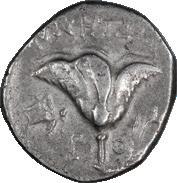








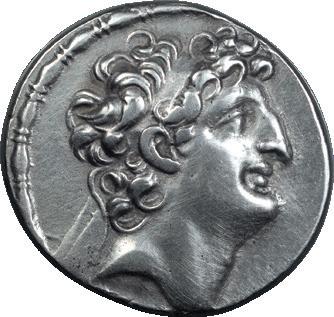
















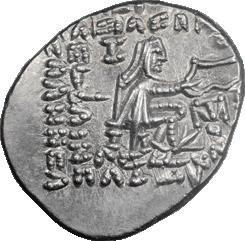
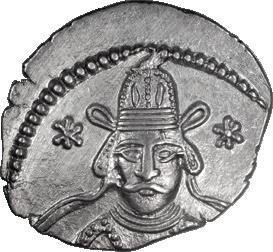

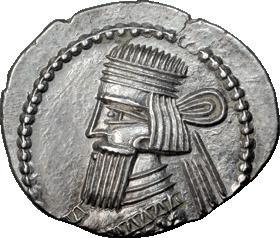

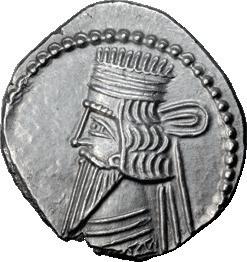


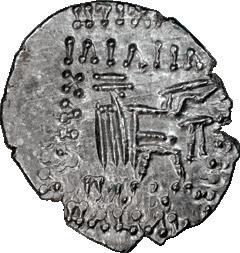

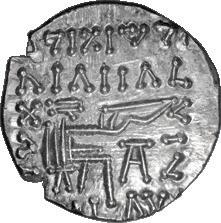






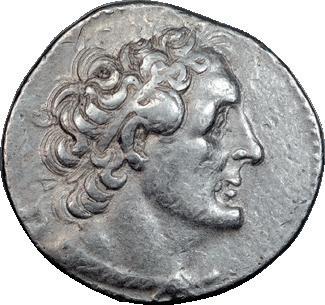

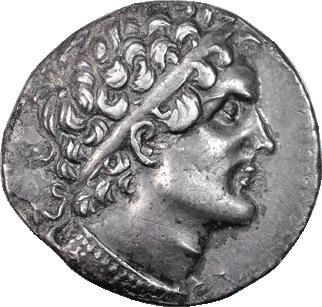

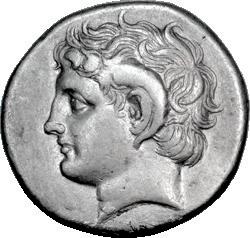





101 107 103 119 102 95 98 100 9493 99 117 111 112 9796 108 114 110 113 118116 104 105 106 120 109 115
From the Philip Ashton Collection, ex Berk 130, 6 January 2003, lot 538. MS 100
300. PHILIP II AS CAESAR; 245-247 AD, Branch Mint, 245-7 AD, Antoninianus, 4.41g. Eauze Hoard-835 (7 specimans), RIC-213 corr. C, RIC-213 corr. C-13. Obv: M IVL PHILIPPVS CAES Bust radiate, draped r. Rx: IOVI CONSERVAT Jupiter standing l. holding thunderbolt and scepter. Ex Berk 177, 15 November 2011, lot 326. Reverse softly struck. Mint State 150
301. PHILIP II AS CAESAR; 245-247 AD, Rome, 245 AD, Antoninianus, 4.28g. RIC216c, C-54. Obv: M IVL PHILIPPVS CAES Bust radiate, draped r. Rx: PRINCIPI IVVENT Philip II standing r. holding spear pointed upwards and forwards and globe.
From the Mark Gibbons Collection. Toned EF 225
302. PHILIP II AS AUGUSTUS; 247-249 AD, Rome, 248 AD, Antoninianus, 4.07g. RIC-230, C-17. Obv: IMP PHILIPPVS AVG Bust radiate, draped, cuirassed r. Rx: LIBERALITAS AVGG III Philip I and Philip II seated l. on curule chairs presiding at their third largesse. EF 160
303. TRAJAN DECIUS; 249-251 AD, Rome, Antoninianus, 3.87g. RIC-29c (C), C-113 corr. (C). Obv: IMP C M Q TRAIANVS DECIVS AVG Bust radiate, cuirassed r. Rx: VICT - ORIA AV - G Victory advancing l. holding wreath and palm. Mint State 225
304. HERENNIA ETRUSCILLA; Rome, Antoninianus, 4.19g. RIC-58b, C-17. Obv: HER ETRVSCILLA AVG Earlier coiffure with smooth hair and braid up back. Rx: PVDICITIA AVG Pudicitia standing l. drawing veil and holding scepter. Mint State 150
305. HERENNIA ETRUSCILLA; Rome, Antoninianus, 4.27g. RIC-59b, C-19. Obv: HER ETRVS - CILLA AVG Bust draped r. wearing stephane, crescent behind shoulders, later coiffure with ridges from ear level to top. Rx: PVDICITIA AVG Pudicitia seated l. drawing veil and holding transverse scepter. Ex Spink’s Circular, September 1986, no. 5975. Toned Mint State 150
306. HERENNIUS ETRUSCUS AS CAESAR; 250-251 AD, Rome, Antoninianus, 4.29g. RIC-143 (S), C-14. Obv: Q HER ETR MES DECIVS NOB C Bust radiate, draped r. Rx: PIETAS AVGVSTORVM Sacrifical implements: sprinkler behind ladle, pitcher, lituus behind patera. Mint State 275
307. HERENNIUS ETRUSCUS AS CAESAR, FOURRÉE ANTONINIANUS; 250-251 AD. Plated, hybrid Antoninianus from imitative dies, 4.69g. Obv: Q HER ETR MES DECIV (sic, S omitted) NOB C Radiate, draped bust r. Rx: PRINCPI (sic, second I omitted) IVENT (sic, one V omitted) Caesar standing l. holding globe and spear. The reverse type copied from antoniniani of Philip II as Caesar. Ex Bruce Braun List 70.2, April 1970, no. 137A. VF 115 308. HOSTILIAN AS CAESAR; 250-251 AD, Rome, Antoninianus, 3.76g. RIC-177b (S), C-15. Obv: C VALENS HOSTIL MES QVINTVS N C Bust radiate, draped r. Rx: MARTI PRO - PV - GNATORI Mars advancing r. holding spear and shield. aVF 300
309. TREBONIANUS GALLUS; 251-253 AD, Rome, Antoninianus, 4.13g. RIC-30, C-13. Obv: IMP CAE C VIB TREB GALLVS AVG Radiate, draped, cuirassed bust r. Rx: AETERNITAS AVGG Aeternitas standing l., holding phoenix on globe and raising skirt. Virtually Mint State 250
310. VOLUSIAN; 251-253 AD, Rome, Antoninianus, 3.65g. RIC-182 (S), C-88. Obv: IMP CAE C VIB VOLVSIANO AVG Bust radiate, draped, cuirassed r. Rx: PIETAS AVGG Pietas, veiled, standing l. by altar raising both hands. EF 125
311. VALERIAN I; 253-260 AD, Rome, 254 AD, Antoninianus, 3.97g. Göbl-23d (29 spec.), RIC-92, C-94. Obv: IMP C P LIC VALERIANVS AVG Bust radiate, draped, cuirassed r., seen from front. Rx: IOVI CONSERVATORI Jupiter standing l. holding thunderbolt and scepter. Reverse softly struck. Mint State 125
312. GALLIENUS; 253-268 AD, Rome, Antoninianus, 2.80g. Göbl-713b (123 spec.), Cunetio Hoard-1341 (198 spec.), RIC-230, C-586 (3 Fr.). Rx: LIBERO P CONS AVG Tigress walking l., B=Officina 2 in exergue. Ex Berk 170, 29 July 2010, lot 269. Excellent detail on tigress showing her stripes. Choice EF 150
313. GALLIENUS; 253-268 AD, Rome, c. 267-8 AD, Antoninianus, 3.19g. Göbl-738b (210 spec.), Cunetio-1386 (245 spec.), RIC-164, C-73. Obv: GALLIENVS AVG Head radiate r. Rx: APOLLINI CONS AVG Centaur walking l. holding globe and rudder, H (=officina 8) in exergue. EF 120
314. GALLIENUS; 253-268 AD, Rome, c. 267-8 AD, Antoninianus, 2.46g. Göbl-735b (194 spec.), Cunetio-1378 (143 spec.), RIC-163, C-72 (1 Fr.). Obv: GALLIENVS AVG Head radiate r. Rx: [AP]OLLINI CON - S AVG Centaur walking r. about to shoot arrow from bow, Z (=officina 7) in exergue. Weakly stuck on emperor’s hair and at lower left on reverse. EF 100
315. GALLIENUS; 253-268 AD, Antoninianus, Rome, 3.06g. Göbl-743b, Cunetio-1392 (146 spec.), RIC-245. Obv: [G]ALLIENVS AVG Head radiate r. Rx: NE - PTVNO CONS AV - G Hippocamp r., N (=officina 9) in exergue. VF / EF 125
316. GALLIENUS; 253-268 AD, Antoninianus, Antioch, 3.82g. Göbl-1616g (24 spec.), RIC-673, C-1320 var. Rx: VIRTVS AVGVSTI Hercules standing r,. leaning on club set on rock, holding l. hand behind back, lionskin hanging down by club; star in r. field. Silver washed. Mint State 150
317. GALLIENUS; 253-268 AD, Samosata, Antoninianus, 3.26g. Göbl-1684m (39 spec.), RIC-447, Cunetio-849 (31 spec.). Obv: IMP C P LIC GALLIENVS P F AVG Bust radiate, draped, cuirassed r. Rx: PIETAS AVGG Valerian and Gallienus sacrificing at altar. From the Philip Ashton Collection, ex Berk 166, 15 October 2009, lot 416. Silver washed. Mint State 125
318. SALONINA; Rome, Antoninianus, 4.50g. RIC-25, C-94, Göbl-551p (34 spec.). Obv: SALONINA AVG Bust draped r. on crescent, wearing stephane. Rx: PVDICITIA Pudicitia seated l., officina letter Q=4 in exergue. From the Philip Ashton Collection, ex Berk 179, 24 May 2012, lot 377. Struck on a beautiful broad flan. Mint State 100
319. SALONINA; Rome, 266-8 AD, Antoninianus, 2.44g. Göbl-725cc (112 spec.), Cunetio-1418 (82 spec.), RIC-16, C-70. Obv: COR SALONIN[A] AVG Bust draped r. on crescent, wearing stephane. Rx: IVNON - I C[ONS AVG] Bearded and antlered goat walking l., [Δ] (=officina 4) in exergue. gEF 150
320. SALONINUS AS CAESAR; 258-260 AD, Antioch, Antoninianus, 3.39g. Göbl1606e (36 spec.), C-21, RIC-35. Obv: P COR SAL VALERIANVS CAES Bust radiate, draped r. Rx: DII NVTRITORES Jupiter standing l. presenting Victory to prince. Reverse softly struck. EF 100
321. SALONINUS AS CAESAR; 256-258 AD, Samosata, Antoninianus, 4.37g. Göbl1696 (26 spec.), RIC-36 (Antioch). Obv: SALON VALERIANVS NOB CAES Bust
322.
radiate, draped, cuirassed r. Rx: SPES PVBLICA Saloninus receiving flower from Spes. Ex Philip T. Ashton Collection, ex Pegasi 34, June 2016, lots 617. Mint State 175
POSTUMUS; 260-268 AD, 263-5 AD, Antoninianus, 3.73g. Cunetio-2414 (457 specimens), RIC-58. Obv: IMP C POSTVMVS P F AVG Bust radiate, draped, cuirassed r., seen from front, hair curly at temples and forehead. Rx: FELICI - T - AS AVG Felicitas standing l. holding long caduceus and cornucopia. MS 145
323. POSTUMUS; 260-268 AD, Antoninianus, 3.69g. Cunetio-2423 (19 spec.), C-350 (C ), RIC-328 (C ). Obv: IMP C POSTVMVS P F AVG Bust radiate, draped, cuirassed r., seen from front. Rx: SALVS POS - TVMI AVG Salus standing r., feeding serpent in arms. Scarce with POSTVMI added to the reverse legend, only 19 specimens in Cunetio hoard. MS 150
324. POSTUMUS; 259-268 AD, Antoninianus, Early-mid 268 AD, 4.10g. Cunetio-2450 (296 spec.), RIC-318. Rx: PAX AVG Pax standing l. holding branch and transverse scepter. MS 125
Quietus
325. QUIETUS; 260-261 AD, Antioch, Antoninianus, 4.66g. Göbl-1743f (4 spec.), RIC11 (R2), C-14 (30 Fr.). Obv: IMP C FVL QVIETVS P F AVG Bust radiate, draped, cuirassed r. Rx: SPES PVBLICA Spes advancing l., holding flower and raising skirt. EF 485
326. MACRIANUS; 260-261 AD, Antioch, Antoninianus, 3.51g. Göbl-1739k (17 spec.), RIC-11 (R2), C-11 (30 Fr.). Obv: IMP C FVL MACRIANVS P F AVG Bust radiate, cuirassed r., seen from front. Rx: ROMAE AETERNAE Roma seated l. above shield, holding Victory and spear, star in l. field, two pellets in exergue. Virtually MS 485
Excellent Portrait of Marius
327. MARIUS; 268 AD, Antoninianus, 3.05g. Cunetio-2508 (8 spec.), RIC-17, C-19 (10 Fr.). Obv: IMP C M AVR MARIVS AVG Bust radiate, draped, cuirassed r., seen from front. Rx: VICTORI - A AVG Victory standing l. holding wreath and palm. EF 500 328. VICTORINUS; 268-270 AD, Antoninianus, 3.34g. Cunetio-2561 (77 spec.). Obv: [IMP] C PI VICTORINVS AVG Radiate, cuirassed bust r., with features of Marius. Rx: AEQVITAS AVG Aequitas standing l. holding scales and cornucopia. With early portrait influenced by the features of Victorinus’ predecessor Marius. MS 150 329. VICTORINUS; 268-270 AD, Antoninianus, 3.03g. Cunetio-2530 (1162 spec.). Rx: PAX AVG Pax standing l. holding branch and scepter; in field, V l., star r. EF 100 330. CLAUDIUS II GOTHICUS; 268-270 AD, Milan, Antoninianus, 4.33g. RIC-145. Rx: FELIC TEMPO Felicitas standing l. holding caduceus and scepter; T in exergue. Ex Berk 130, 6 January 2003, lot 586. Reverse a bit soft; nice substantial flan. EF 100
331. QUINTILLUS; 270 AD, Rome, Antoninianus, 2.58g. RIC-31, C-63, Normandy-1198 (14 spec.). Obv: [IMP C M] AVR CL QVINTILLVS [AVG] Bust radiate, draped, cuirassed r. Rx: [S]ECVR[IT A]VG Securitas standing l., leaning on column, legs crossed, holding scepter disappearing behind her body, XI (officina 11) in r. field. Mint State 185
332. QUINTILLUS; 270 AD, Milan, Antoninianus, 2.02g. RIC-52, C-25. Obv: IMP QVI[NTI]LLVS AVG Radiate, draped bust r. Rx: FI[DES M] - ILIT around, S in exergue, Fides standing l. holding two standards. MS 175
333. QUINTILLUS; 270 AD, Milan, Antoninianus, 2.63g. Normanby-1222 (3 spec.), RIC-58, C-47. Obv: IMP QVINTILLVS AVG Bust radiate, draped r. Rx: MAR - T - I P - ACI Mars standing l., holding branch and transverse spear; P in exergue (officina 1). MS 185
334. TETRICUS I; 270-273 AD, Antoninianus, 2.73g. C-39 (Paris, 3 Fr.), RIC-72 (C), Cunetio-2634 (3 spec.). Obv: IMP C P ESV TETRICVS AVG Bust radiate, cuirassed r., seen from front. Rx: [FI]DES MILITVM Fides standing l. holding two standards. Rare with this obverse legend, the names P ESV being soon omitted. EF 125
335. TETRICUS II; 270-273 AD, Antoninianus, 2.72g. RIC-270. SPES AVGG Spes walking l., holding flower and raising robe. EF 150
336. AURELIAN; 270-275 AD, Siscia, 275 AD, Antoninianus, 3.57g. Göbl-225e2 (13 spec.), Paris-865, RIC-254. Obv: IMP C AVRELIANVS AVG Bust radiate, cuirassed r., seen from front, ‘tassle’ on l. shoulder. Rx: ORIENS AVG Sol advancing l., raising r. hand and holding globe in l., between two captives seated on ground; in l. field, star; in exergue, S. MS 100
337. AURELIAN; 270-275 AD, Serdica, Antoninianus, 4.00g. Göbl-243mA2 (42 spec.), Paris-1005, RIC-260. Obv: IMP AVRELIANVS AVG Bust radiate cuirassed r., seen from front. Rx: IOVI CON - SER around, S in exergue, Jupiter handing globe to emperor; Jupiter is nude except for long cloak hanging behind him, and also holds long vertical scepter; emperor is in military dress and also holds slanting scepter whose lower half disappears behind his body. MS 125
338.
AURELIAN; 270-275 AD, Cyzicus, Antoninianus, 3.47g. Göbl-345b3 (4 spec.), cf. Paris-1209 (officina B), RIC-360. Obv: I[M]P C AVRELIANVS AVG Bust radiate, cuirassed r., seen from front, “tassle” on l. shoulder. Rx: ORIE - N - S AVG Sol advancing l. raising r. hand and holding globe in l. hand, and placing r. foot on back of captive seated l. before him; XXI in exergue, Γ (officina 3) in l. field. MS 135
339. SEVERINA; Ticinum, Sept.-Nov. 275 AD, after death of Aurelian, Antoninianus, 3.33g. Göbl-79Aa2 (35 spec.), Paris-662, RIC-8 (C), C-7 (2 Fr.). Obv: SEVERI - NA AVG Bust draped r. on crescent, wearing stephane. Rx: CONCOR - DIAEMILITVM Concordia standing l. holding two standards, in exergue SXXT (officina 2). This issue contained coins of Severina only, so must date to the interregnum between the death of Aurelian and the accession of Tacitus. MS 120
340. SEVERINA; Rome, Denarius, 2.29g. C-14, RIC-6, Göbl-141t3 (27 spec.). Obv: SEVERINA AVG Bust draped r. wearing stephane. Rx: VE - NVS - FELIX Venus standing l. holding apple with index finger and thumb and scepter, Γ in exergue. Partial silver wash. EF 225
341. TACITUS; 275-276 AD, Lugdunum, Antoninianus, 3.99g. RIC-57, C-125, Bastien Lyon-106 (32 spec.). Obv: IMP CL TACITVS AVG Bust radiate, draped, cuirassed r., seen from front. Rx: SALVS AVG Salus standing r. feeding serpent that she holds, C (=officina 3) and star to either side in field. Virtually MS 140
PROBUS; 276-282 AD, Rome, Antoninianus, 3.74g. RIC-183 var., C-533 (1 Fr.).
Obv: IMP PROB - VS P F AVG Radiate bust l. wearing consular robes and holding eagle-tipped scepter. Rx: ROMAE - AETER Roma seated in six-columned temple, in exergue thunderbolt between R and Δ (officina 4). From the Philip Ashton Collection, ex Berk 130, 6 January 2003, lot 574. Some silver wash. Mint State 150
342.
343. PROBUS; 276-282 AD, Siscia, Antoninianus, 3.58g. RIC-770. Rx: SOLI INVICTO Sol in quadriga l., XXIP in exergue. Mint State 100
344. PROBUS; 276-282 AD, Serdica, Antoninianus, 3.60g. RIC-877. Obv: IMP C M AVR PROBVS P F AVG Radiate, helmeted, cuirassed bust l. holding spear over shoulder and shield. Rx: S - O - LI INVIC - T O Sol standing facing, head l., in frontal quadriga, KAΔ in exergue. Some silver wash. Mint State 85
345. CARUS; 282-283 AD, Ticinum, Antoninianus, 2.49g. RIC-82 (C), C-79, Venera-668-819 (152 spec.). Obv: IMP CARVS P F AVG Bust radiate, draped, cuirassed r., seen from front. Rx: [S]PE[S - P]VBLICA Spes advancing l., holding flower and raising skirt; [S]XXI in exergue (officina 2). EF 90
Magnia Urbica
346. MAGNIA URBICA; Rome, 283-4 AD, Antoninianus, 3.41g. C-17 (10 Fr.), RIC343 (S), Venera-4138-46 (9 spec.). Obv: MAGN VRBICA AVG Bust draped r. on crescent, wearing stephane. Rx: VE[NV]S VICTRI[X] Venus standing l. holding helmet and scepter, shield at her feet, in exergue KA(crescent)S (officina 6). Wellcentered on a broad flan. Good Fine 400
347. CARINUS; 283-285 AD, Lugdunum, Antoninianus, 4.16g. RIC-212 (C), C-8, Bastien-533 (58 spec.). Rx: Aequitas standing left, officina letter A=1 in right field. Ex Berk 109th Buy or Bid sale, July 1999, lot 403. Some silver wash. Mint State 125
348. CARINUS; 283-285 AD, Rome, 284-5 AD, Antoninianus, 3.98g. RIC-253, Venera-4102/4116 (15 spec.). Obv: IMP CARINVS P F AVG Bust radiate, cuirassed r., seen from front. Rx: FIDES MILITVM around, KA(crescent)E in exergue (officina 5), Fides standing l. holding two standards. Mint State 70
349. NUMERIAN; 283-284 AD, Ticinum, Antoninianus, 3.72g. RIC-447, C-83. Obv: IMP NVMERIANVS P F AVG Bust radiate, draped, cuirassed r. Rx: PROVIDENT AVGG Annona standing l. holding three wheat ears above modius at her feet and cornucopia, in exergue VIXXI (officina 6). On this obverse die a wavy line with pellets alternately above and below it replaces the normal cuirass flaps on the emperor ’s shoulder. VF 100
350. CARAUSIUS; 287-293 AD, Antoninianus, 3.31g. RIC-803 var. Obv: IM CARAVSIV[S P F AVG] Bust radiate, draped, cuirassed r., seen from front. Rx: HILA[RITAS AV]G Hilaritas standing l. holding long palm and cornucopia. Unpublished obverse legend beginning IM not IMP, scarcer reverse type. Ex Berk 149th Buy or Bid Sale, April 2006, lot 406. VF 225
351. DIOCLETIAN; 284-305 AD, Antioch, Antoninianus, 3.73g. RIC-322, C-34. Obv: IMP C C VAL DIOCLETIANVS P F AVG Radiate, draped, cuirassed bust r., seen from front. Rx: CONCORDIA MILI - TVM Emperor standing r. receiving Victory on globe from Jupiter standing l., .ΧΧΙ in exergue, Z in central field (officina 7). Mint State 100
LATE ROMAN IMPERIAL SILVER AND SILVERED BRONZE
352. DIOCLETIAN; 284-305 AD, Carthage, c. 299-303 AD, Follis, 9.95g. RIC-31a (C), officina A=1. Obv: IMP DIOCLETIANVS P F AVG Large laureate head r. Rx: SALVIS AVGG ET CAESS FEL KART Carthage standing r., head l., holding fruits in both hands, A in exergue. EF 110
353. MAXIMIANUS; 284-305 AD, Cyzicus, Antoninianus, 3.97g. RIC-305 corr., C-33. Obv: IMP C C VAL DIOCLETIANVS AVG Bust radiate, draped, cuirassed r. Rx: CONCORDIA MI - LITVM. Emperor standing r. receiving Victory on globe from Jupiter standing l., XXI. in exergue, B (officina 2) in field above exergue line. Some silver wash. Mint State 55
354. MAXIMIANUS; 286-305 AD, Ticinum, c. 296-7 AD, Follis, 10.96g. RIC-31b (C), officina S=2. Obv: IMP MAXIMIANVS P F AVG Head laureate r. Rx: GENIO POPV - LI ROMANI Genius standing l. holding patera and cornucopia, ST in exergue, star in l. field. EF 140
355. MAXIMIANUS; 286-305 AD, Siscia, 301 AD, Follis, 11.04g. RIC-134b (C), officina B=2. Obv: IMP MAXIMIANVS P F AVG Head laureate r. Rx: SACRA MONET AVGG ET CAESS NOSTR Moneta standing l. holding scales and cornucopia, SIS in exergue, star in l. field, B in r. field. EF 140
356. CONSTANTIUS I; 305-306 AD, Carthage, 305-6 AD, Follis, 9.75g. RIC-39a (C2), officina A=1. Obv: IMP CONSTANTIVS P F AVG Head laureate r. Rx: SALVIS AVGG ET CAESS FEL KART Carthage standing r., head l., holding fruits in both hands, A in exergue, H in l. field. The H in field on reverse indicates that Constantius was a Herculean emperor. Some areas of flat striking. aVF 100 Left Facing Bust
357. CONSTANTIUS I AS CAESAR; 293-305 AD, Lugdunum, c. 301-3 AD, Follis, 8.68g. RIC-167a (C2), officina A=1. Obv: CONSTANTIVS NOB C Bust laureate, cuirassed l., seen from front, r. hand holding scepter over shoulder. Rx: GENIO POP - VLI ROMANI Genius sacrificing l. over altar and holding cornucopia, PLG in exergue, A in r. field. Reverse somewhat flatly struck. VF 110
358. GALERIUS AS AUGUSTUS; 305-311 AD, Cyzicus, c. 309-10 AD, Follis, 6.36g. RIC-53 (C), officina E=5. Obv: GAL MAXIMIANVS P F AVG Head laureate r. Rx: GENIO A - VGVSTI Genius standing l. pouring libation from patera and holding cornucopia, MKV in exergue, E and star in field. Near MS 110
359. GALERIUS AS AUGUSTUS; 305-311 AD, Trier, c. spring 307 AD, Reduced Follis, 7.87g. RIC-689 (S). Obv: IMP MAXIMIANVS P F AVG Head laureate r. Rx: GENIO POP - VLI ROMANI Genius standing l. holding patera and cornucopia, modius or city walls on head, PTR in exergue, S - A across field. gVF 110
GALERIUS AS AUGUSTUS; 305-311 AD, Alexandria, 308-10 AD, Follis, 7.10g. RIC-101a (C ), officina Γ=3. Obv: IMP C GAL VAL MAXIMIANVS P F AVG Head laureate r. Rx: GENIO IMP - ERATORIS Genius of the Emperor pouring libation from patera, holding cornucopia in other arm; ALE in exergue, K in l. field, Γ / P in r. field. Mint State 250
361. MAXIMINUS II AS AUGUSTUS; 309-313 AD, Antioch, 312 AD, Follis, 4.15g. RIC-164b (C2), officina Γ=3. Obv: IMP C GAL VAL MAXIMINVS P F AVG Head laureate r. Rx: GENIO - AVGVSTI Genius standing l., modius on head, holding head of Sol and cornucopia, ANT in exergue, * - Γ in field. Mint State 150
362. ‘PERSECUTION’ ISSUE; Antioch, Time of Maximinus II, 310-313 AD, AE 13x14, 1.65g. McAlee-170i, Vagi-2954. Obv: GENIO AN - TIOCHENI Tyche of Antioch seated facing on rocks; river-god Orontes swimming below. Rx: APOLLON[I]SANCTO Apollo standing l. holding patera and lyre, E in r. field, SMA in exergue. From the Mark Gibbons Collection. An exceptionally well preserved specimen of this
common but interesting anonymous coin. MS 250
363. LICINIUS I; 308-324 AD, Siscia, 315-6 AD, Reduced Follis, 3.33g. RIC-17, officina A=1 (r2). Obv: IMP LIC LICINIVS P F AVG Head laureate r. Rx: IOVI CONSERVATORI Jupiter standing l. holding Victory on globe and scepter, eagle at his feet, A in r. field, .SIS. in exergue. MS 100
364.
LICINIUS I; 308-324 AD, Arles, 315-6 AD, Reduced Follis, 3.76g. RIC-67, officina T=3 (r4). Obv: IMP LICINIVS P F AVG Bust laureate, draped, cuirassed r., seen from front. Rx: SOLI IN - VI - CTO COMITI around, TARL in exergue, S - F across field, Sol standing r., head l., raising r. hand and holding globe in l. EF 125
365. CONSTANTINE I; 307-337 AD, Rome, 320 AD, Reduced Follis, 2.43g. RIC-194, officina T=3 (r3); C-470 (2 Fr.). Obv: CONSTAN - TINVS AVG Bust helmeted, cuirassed r., seen from front. Rx: ROMAE A - ETERNAE Roma seated r. on shield, holding on knees shield inscribed X/V, in exergue [RE]UCT. Rare. EF 125
366. CONSTANTINE I; 307-337 AD. London, c. 313-4 AD, Reduced Follis, 3.58g. RIC10 (c3). Obv: IMP CONSTANTINVS AVG Bust laureate, cuirassed r., seen from front, fold of cloak on l. shoulder. Rx: SOLI INVIC - TO COMITI Sol standing l. raising r. hand and holding globe in l., PLN in exergue, S - F across field. Near MS 50
367. CONSTANTINE I; 307-337 AD, Heraclea, 325-6 AD, Follis, 1.92g. RIC-70, officina A=1 (r3). Obv: CONSTAN - TINVS AVG Head r. wearing plain diadem (plaques alternating with pairs of dots). Rx: VOT / XXX in wreath, D N CONSTANTINI MAX AVG around, SMHA in exergue. MS 125
Dark Brown Patina
368. CONSTANTINE I; 307-337 AD, Lugdunum, 320 AD, Reduced Follis, 3.12g. RIC79 (c1), Bastien-19 (49 spec.). Obv: CONS - TANTINVS MAX AVG Cuirassed bust r., seen from front, wearing high-crested helmet. Rx: VICTORIAE LAETAE PRINC PERP Two Victories standing on either side of an altar, the one on r. holding a shield above the altar, the one on l. inscribing VOT / P R on the shield; in exergue two seated and bound captives between the letters P - L. A combination of two scarce and interesting features: the high-crested helmet on the obverse and the captives in exergue on the reverse. Ex Cederlind 169, 31 May 2013, lot 333. Dark brown patina. aEF 150
369.
Magnificent, Life-Like Portrait
CONSTANTINE I; 307-337 AD, Antioch, 329-30 AD, Reduced Follis, 3.10g. RIC84, officina E=5 (r4). Obv: CONSTANTI - NVS MAX AVG Bust diademed, draped, cuirassed r., seen from front. Rx: PROVIDEN - TIAE AVGG Camp gate with two turrets and no doors, star above, SMANTE in exergue. Though this coin has some spotty encrustation, the portrait seems realistic, and is quite magnificent. MS 150
370. CONSTANTINE I; 307-337 AD, Ticinum, c. 320-1 AD, Reduced Follis, 3.55g. RIC-140, officina T=3 (c1). Obv: CONSTAN - TINVS AVG Head laureate r. Rx: VOT / XX in wreath, D N CONSTANTINI MAX AVG around, TT in exergue. Near MS 120
371. CONSTANTINE I, DIVUS; Died 337 AD, Alexandria, 347-8 AD, Follis, 1.58g. RIC-32 (C3), officina A=1; C-716 (1 Fr.). Obv: DV CONSTANTI - NVS PT AVGG Veiled bust r. Rx: VN - MR across field, Emperor veiled standing r., SMNALA in exergue. Constantine is ‘Of venerable memory’ according to the reverse legend, while the obverse legend calls him ‘Divus’ and ‘Father of the Emperors’. Earthen surface makes this coin appear like a cameo. gEF 90
372. URBS ROMA; Constantinople, 330-333 AD, Reduced Follis, 2.76g. RIC-119, officina E (r1). Obv: VRBS - ROMA Helmeted bust of Roma l. Rx: Wolf standing l., head r., suckling twins; two stars above, SMHE in exergue. MS 100 Apple-Green Patination
373. CONSTANTINOPOLIS; Siscia, c. 330-3 AD, Reduced Follis, 2.09g. RIC-224, officina B=2 (c3). Obv: CONSTAN - TINOPOLIS Draped bust of Constantinopolis l. wearing laureate helmet, scepter over l. shoulder. Rx: Victory standing l., wings raised, r. foot on prow, holding scepter and shield, B[SIS] in exergue. Our attribution to Siscia is tentative because of weakness of the mintmark in exergue; only the initial B is clearly legible. Wonderful green patination, which is quite rare on these coins. MS 150
374. THEODORA; Trier, 337-40 AD, AE 4, 1.69g. C-4 (4 Fr.), Sear-17501. Obv: FL MAX THEO - DORAE AVG Bust draped r. Rx: PIETAS - ROMANA Pietas standing r. holding an infant at her breast, cross in l. field, TRS in exergue. Theodora bore six children to Constantius I and through them became the grandmother of Hanniballianus, Dalmatius Caesar, Constantius Gallus Caesar, Nepotian, and Julian II: see RIC VIII, pp. 3-7. Her only coins are scarce small bronzes struck at Constantinople, Trier, and Rome between 337 and 340 AD. EF 150
375. HELENA; Trier, 337-340 AD, AE 4, 1.40g. RIC-63 (C2), officina S=2. Obv: FL IVL HE - LENAE AVG Bust draped r. Rx: PA - X PV - BLICA Pax standing l. holding branch and transverse scepter, .TRS. in exergue. MS 250
376. CRISPUS AS CAESAR; 317-326 AD, London, 317 AD, Reduced Follis, RIC-115 (r2). Obv: CRISPVS NOB CAES Laureate, cuirassed bust r., seen from front. Rx: SOLI INVIC - TO COMITI Sol standing l., cloak over l. shoulder, raising r. hand and holding globe in l.; PLN in exergue, S - P in field. MS 125
377.
CRISPUS AS CAESAR; 317-326 AD, Nicomedia, 325-6 AD, Reduced Follis, 3.20g. RIC-122, officina B=2 (s). Obv: FL IVL CRIS - PVS NOB C Bust laureate, draped, cuirassed l., seen from front. Rx: PROVIDEN - TIAE CAESS Camp gate with two turrets, no doors, star above, MNB in exergue. EF 120
Exquisite Obverse
378.
CRISPUS AS CAESAR; 317-326 AD, Trier, 323 AD, Reduced Follis, 3.14g. RIC394, officina S=2 (r3). Obv: IVL CRISPVS NOB CAES Laureate, cuirassed bust l., seen from front, holding spear over r. shoulder and shield. Rx: BEATA TRANQVILLITAS Altar inscribed VO / TIS / XX, globe on altar, 3 stars above, in exergue *STR and crescent. Mint State 135
379. CONSTANTINE II AS CAESAR; 317-337 AD, London, 324-5 AD, Reduced Follis, 2.45g. RIC-296 (c3). Obv: CONSTANTINVS IVN NOB C Bust laureate, draped, cuirassed r. Rx: PROVIDEN - TIAE CAESS Camp gate with two turrets, no doors, star above, PLON in exergue. gEF 100
380. CONSTANTINE II AS CAESAR; 317-337 AD. London, c. 323-4 AD. Reduced Follis, 2.84g. RIC-292 (c3). Obv: CONSTANTINVS IVN NOB C Head laureate r. Rx: VOT X within wreath, around which CAESARVM NOSTRORVM, in exergue PLON followed by crescent. MS 160
360.


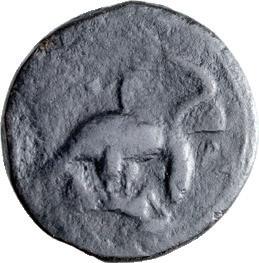







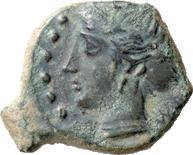
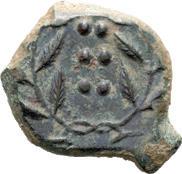




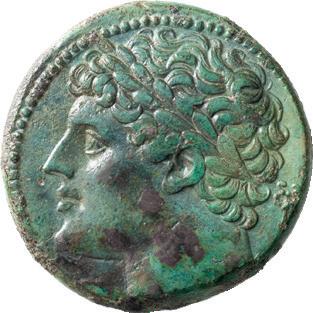
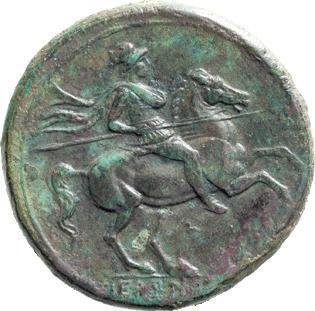


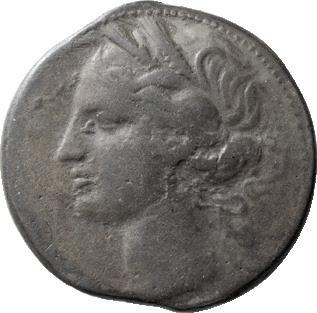





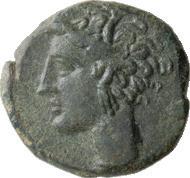




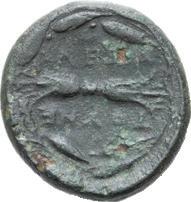

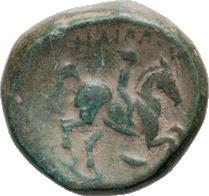
















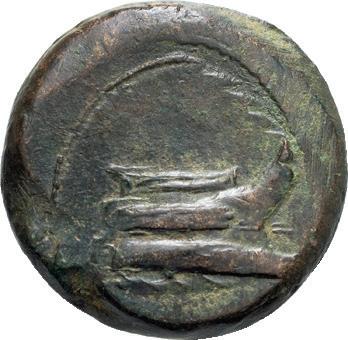











136 134 121 124 135132 139 148 141 127 123122 129 131 144 133 125 126 128 146 138 130 151 143 137 140 145 150 142 147 149
381. CONSTANTINE II AS CAESAR; 317-337 AD, Reduced Follis, Trier, 317-8 AD, 3.31g. RIC-180 (r3), officina B=2. Rx: CLARITAS REIPVBLICAE Sol standing l., BTR in exergue, F - T across field. EF 140
382. CONSTANTINE II AS CAESAR; Trier, 324-5 AD, Follis, 2.64g. RIC-456. Rx: PROVIDEN - TIAE CAESS STR, Camp gate with three stars above. MS 110
383. CONSTANTINE II AS CAESAR; 317-337 AD, Arles, 322-3 AD, Reduced Follis, 2.83g. RIC-261, officina Q=4 (r2). Obv: CONSTANTINVS IVN NOB C Bust laureate, draped, cuirassed r., seen from front. Rx: VOT X within wreath, around which CAESARVM NOSTRORVM, in exergue Q*AR. MS 100
384. CONSTANTIUS II AS CAESAR; 324-337 AD, Trier, 332-3 AD, Reduced Follis, 2.49g. RIC-540, officina S=2 (c3). FL IVL CONSTANTIVS NOB C Bust laureate, cuirassed r., seen from front. Rx: GLOR - IA EXERC - ITVS Two soldiers standing holding spears and shields, two standards between them, TR.S in exergue. MS 100
385. DELMATIUS AS CAESAR; 335-337 AD, Siscia, c. 335-6 AD, Reduced Follis, 1.58g. RIC-256, officina B=2 (r1). Obv: FL DELMATIVS NOB C Bust laureate, draped, cuirassed r., seen from front. Rx: GLOR - IA EXERC - ITVS Single standard between two soldiers, BSIS in exergue. MS 300
Hanniballianus
386. HANNIBALLIANUS; 335-337 AD, Constantinople, Reduced Follis, 1.41g. RIC147 (r2), C-2 (40 Fr.). Obv: FL HAN[NIBALLIANO] REGI Bare-headed, draped, cuirassed bust r., seen from front. Rx: SE - CVRITAS PVBLICA Euphrates reclining r., holding scepter in r. hand and reaching l. hand towards urn at his side from which water flows; above his knees, a reed; mintmark [CO]NSS in exergue. VF 400
387. CONSTANS; 337-350 AD, Uncertain Mint, 348-50 AD, Centenionalis, 3.71g. Bruck, Kupferprägung p. 13. Obv: D N CONSTA - NS P F AVG Bust l. wearing pearl diadem and holding globe. Rx: FEL TEMP REPARA - TIO Soldier holding spear pointing downwards between his legs and leading barbarian from hut under tree; SM[. ] in exergue. Mintmark and officina letter illegible after SM in exergue. MS 90
388. CONSTANS; 337-350 AD, Thessalonica, c. 348-50 AD, Reduced Centenionalis, 2.43g. RIC-120 (C), officina Γ=3. Obv: D N CONSTA - NS P F AVG Pearl-diademed, draped, cuirassed bust r., seen from front. Rx: FEL TEMP - REPARATIO Emperor holding phoenix on globe and labarum standing l. in galley piloted by Victory, TESΓ in exergue. MS 110
389. VETRANIO; 350 AD, Thessalonica, Centenionalis, 4.59g. RIC-132 (S), officina A=1; C-1 (25 Fr.). Obv: D N VETRAN - IO P F AVG Bust laureate, draped, cuirassed r., seen from front. Rx: CONCORDIA - MILITVM Emperor standing l., with star above his head, holding two standards topped by Chi Rho banners, .TSA. in exergue, A - B across field. MS 400
390. VETRANIO; 350 AD, Siscia, Centenionalis, 4.76g. RIC-285 (S), officina A=1; C-1 (25 Fr.). Obv: D N VETRA - NIO P F AVG Bust laureate, draped, cuirassed r., seen from front; star before portrait, A behind. Rx: CONCORDIA - MILITVM Emperor standing l., with star above his head, holding two standards topped by Chi Rho banners, .ASIS. in exergue, A in l. field. MS 450
HOC SIGNO VICTOR ERIS
391. VETRANIO; 350 AD, Siscia, Centenionalis, 4.50g. RIC-287 (S), C-4 (25 Fr.). Obv: D N VETRA - NIO P F AVG Bust laureate, draped, cuirassed r., seen from front; star before portrait, A behind. Rx: H[OC SIG] - NO VICTOR ER[IS] Emperor standing l. holding standard topped by Chi Rho banner and transverse spear, crowned by Victory standing behind him who also holds palm branch; .A(?)SIS. in exergue, A in l. field. The officina letter in reverse exergue obscured by corrosion. This type commemorates the sign of the cross that Constantine I saw before the Battle of the Milvian Bridge and his victory over Maxentius. This is the only issue that illustrates this event. EF 400 392. CONSTANTIUS II STRUCK BY VETRANIO; 337-361 AD, Centenionalis struck by Vetranio, Siscia, 350 AD, 4.73g. RIC-284, officina gamma=3 (S). Obv: A behind bust, star in front. Rx: CONCORDIA - MILITVM Emperor standing l. holding two standards inscribed chi-ro, star above his head, A in l. field, .ΓSIS. in exergue. EF 380
HOC SIGNO VICTOR ERIS
393. ISSUE OF VETRANIO, IN NAME OF CONSTANTIUS II; 337-361 AD, Centenionalis, Siscia, 350 AD, 4.57g. RIC-286 (S), officina E=5. Obv: Name and portrait of Constantius II r., between A and star, issued by Vetranio. Rx: HOC SIGNO VICTOR ERIS Emperor standing l. holding labarum and spear, crowned by Victory standing behind him, .ESIS[.] in exergue, A in l. field. This type commemorates the sign of the cross that Constantine I saw before the Battle of the Milvian Bridge and his victory over Maxentius. This is the only issue that illustrates this event. gVF 350
394. MAGNENTIUS; 350-353 AD, Trier, Jan. 351-Aug. 352 AD, Centenionalis, 5.58g. Bastien-67 (23 spec.), officina S=2; RIC-312 (C2). Obv: D N MAGNEN - TIVS P F AVG Bare-headed, draped, cuirassed bust r., seen from front; A behind portrait. Rx: VICTORIAE DD NN AVG ET CAES Two Victories holding wreath, within which VOT / V / MVLT / X; TRS in exergue. Ex VAuction 243, 11 March 2010, lot 127 ($312 + 15%). Near Mint State 325
395. MAGNENTIUS; 350-353 AD, Lugdunum, c. Jan. 351-Aug. 352 AD, Centenionalis, 4.77g. RIC-136 (C3), officina P=1, Bastien-176 (14 spec.). Obv: A behind portrait. Rx: VICTORIAE DD NN AVG ET CAE Two Victories holding wreath, within which VOT V MVLT X, SP in field below wreath, [R]PLG in exergue. Ex Berk 155th Buy or Bid Sale, July 2007, lot 451. Mint State 315 396. DECENTIUS AS CAESAR; 350-353 AD, Amiens, c. Aug.-Dec. 352 AD, Centenionalis, 4.12g. RIC-30 or 32 (S), Bastien-132 (3 spec.) or 134 (2 spec.). Obv: [D N DECENT]IVS NOB CAES Bare-headed, cuirassed bust r., seen from front, fold of cloak on front shoulder. Rx: VICTORIAE DD NN [AVG ET CAE] Two Victories standing face to face and holding wreath, within which VOT / V / MVLT / X; Chi-Rho above wreath, in exergue AMB preceded by star and followed by either crescent or crescent and pellet (off flan). Mint State 315 397. DECENTIUS AS CAESAR; 350-353 AD, Trier, 352 AD, Officina P=1 or S=2, AE 3, 3.38g. RIC-316 (R), Bastien-71 and 73 (8 spec.). Obv D N DECENTI - VS FORT CAES Bare-headed, draped, cuirassed bust r., seen from front; behind, A. Rx: VICTORIAE DD NN AVG ET CAES around, TR[P] or TR[S] in exergue, Two Victories holding wreath, within which VOT / V / MVLT / X; Chi-Rho above wreath. Struck on a small flan. MS 185
398. JULIAN II; 360-363 AD, Trier, Siliqua, 2.04g. RIC-365, C-157-8. Obv: [D N] CL
IVLI - ANVS AVG Pearl-diademed, draped, cuirassed bust r., seen from front. Rx: VOTIS / V / MVLTIS / X in wreath; TR [palm branch] below. MS 450
399. JULIAN II; 360-363 AD, Arles, 360-1 AD, with Constantius II, Reduced Siliqua, 1.78g. RIC-297 (C), RSC-157†c. Obv: D N CL IVLI - ANVS AVG Unbearded, draped, cuirassed bust r. wearing pearl diadem. Rx: VOTIS / V / MVLTIS / X in wreath, TCON in exergue. VF 200
Glossy Olive Patination
400. JULIAN II AS CAESAR; 355-360 AD, AE 3/4, Sirmium, 2.10g. RIC-72, 74, 76, or 78, officina B=2. Obv: D N IVLIA - NVS NOB C Bare-headed bust r. Rx: FEL TEMP - REPARATIO Helmeted soldier spearing fallen horseman, M in l. field, ]BSIR[ in exergue. Mintmark partly off flan so not fully legible. The break IVLIA - NVS in obverse legend occurs only at Sirmium, according to Bruck, Kupferprägung, p. 21. Glossy olive patination. EF 200
401. JULIAN II; 361-363 AD, AE 3, Heraclea, 2.79g. RIC-106 (Common), officina A=1. Obv: D N FL CL IVLI - ANVS P F AVG Helmeted, cuirassed bust l., holding spear and shield. Rx: VOT X MVLT XX in four lines in wreath, HERACL.A in exergue. MS 175
402. JOVIAN; 363-364 AD, Arles, Reduced Siliqua, clipped, 1.62g. RIC-331 (R2), officina S=2; C-33. Obv: D N IOVIA - [N]VS P F AVG Pearl-diademed, draped, cuirassed bust r., seen from front. Rx: VOT / V / MVLT / X in wreath closed by medallion at top; SCONST in exergue. Clipped ancient coins are rare; most of the clipping seems to have taken place in late-Roman Britain. This coin apparently circulated in England, where, for the only time, silver coins were cut down (as this one was). EF 350
403. JOVIAN; 363-364 AD, Heraclea, AE 3, 2.81g. RIC-108 (S), officina A=1. Obv: D N IOVIAN - VS P F AVG Pearl-diademed, draped, cuirassed bust l., seen from front. Rx: VOT V in wreath, HERAC A below. MS 285
404. VALENTINIAN I; 364-375 AD, Sirmium, 364 AD, AE 3, 2.86g. RIC-8 (S). Obv: [D N VALENTINI] - ANVS P F AVG Pearl-diademed, draped, cuirassed bust r., seen from front. Rx: VOT / V / MVLT / X within wreath, [ASIRM] or [BSIRM] in exergue (off flan). Valentinian’s brief continuation of the same type of Jovian, struck only at Sirmium, and scarce: only six specimens in the very rich Vienna collection, according to Bruck, p. 92. This cannot be a coin of Jovian himself, since his name was always divided IOVIA - NVS in his obverse legend, not IOVI - ANVS as our coin would require; see Bruck p. 91. MS 150
405. PROCOPIUS; 365-366 AD, Constantinople, AE 3, 2.91g. RIC-17a (R2), Mintmark 2; C-8 (30 Fr.). Obv: D N PROCO - PIVS P F AVG Pearl-diademed, draped, cuirassed bust l., seen from front. Rx: REPARATI - O FEL TEMP Emperor standing holding labarum and shield, Christogram above his shoulder, indeterminate object on ground, CONSΓ (officina 3) in exergue. gEF 285
406. AELIA FLACCILLA; probably Antioch, 379-386 AD, AE 4, 1.05g. RIC-54 (R) or 64 (R), C-5 (8 Fr.). Obv: AEL FLA[C] - CILLA AVG Bust diademed, draped r., seen from front. Rx: SALVS REI - PVBLIC[AE] Victory seated r. inscribing Chi Rho on shield supported by column, mintmark in exergue illegible. Probably mint of Antioch: acquired with a group that included 21 legible AE 4’s of Flaccilla, 19 from Antioch and two from Constantinople. Flatly struck below bust. aEF 150
407. MAGNUS MAXIMUS; 383-388 AD, Arles, AE 2, 6.07g. RIC-26a, mintmark 3 (officina T=3); C-3. Obv: D N MAG MAXI - MVS P F AVG Pearl-diademed, draped, cuirassed bust r., seen from front. Rx: REPARATIO - REIPVB Emperor standing l. holding Victory on globe and raising kneeling turreted female, TCO[N] in exergue. Green patination, reverse somewhat flatly struck, sharp portrait. EF / VF 150
Sharp Portrait
408. AELIA FLACCILLA; Antioch, 383-8 AD, AE 2, 4.52g. RIC-62 (S), officina E=5. Obv: AEL FLAC - CILLA AVG Bust draped r., seen from front, wearing double pearl diadem and pearl necklace. Rx: SALVS REI - PVBLICAE Empress standing r., hands folded on breast, ANTE in exergue. gVF / Fine 120
409. ARCADIUS; 383-408 AD, Constantinople, 378-83 AD, AE 2, 5.10g. RIC-53b (S). Obv: D N ARCAD - IVS P F AVG Bust r. holding spear and shield, crowned from above by Hand of God. Rx: GLORIA RO - MANORVM Emperor standing r., head l., holding labarum and shield, by captive seated l., looking back and up at emperor, CONΓ* in exergue (officina 3). Scarce variant with captive seated rather than kneeling, quoted only from his own collection by the author of RIC, J.W.E. Pearce. aEF / VF 75
410. ARCADIUS, NAME MISSPELLED ARCAPIVS; 383-408 AD, Treveri, 392-95 AD, Siliqua, 1.56g. RIC-106c (S), RSC-27†e. Obv: D N ARCAPI - VS P F AVG (sic, name misspelled) Pearl-diademed, draped, cuirassed bust r., seen from front. Rx: VIRTVS RO - MANORVM Roma seated l. holding Victory on globe and spear, TRPS in exergue. Reverse weakly struck. Toned Mint State 385
411. EUDOXIA; Constantinople, 401-3 AD, AE 3, 2.14g. RIC-101 (S). Obv: AEL EVDO - XIA AVG Bust draped r., crowned by hand of God. Rx: SALVS REI - [PVBLICAE] Victory seated r. on cuirass inscribing Chi-Rho onto shield supported by column, CONSA in exergue. aEF 120
412. VALENS; 364-378 AD, Siscia, 367-75 AD, AE 3, 2.49g. RIC-14b, mintmark xi (p. 141). Obv: D N VALEN - S P F AVG Pearl-diademed, draped, cuirassed bust r., seen from front. Rx: GLORIA RO - MANORVM Emperor standing r., head l., depressing head of barbarian kneeling behind him and holding labarum inscribed with Christogram; *ΓSISC in exergue, D in r. field. Mint State 45
Gepids
413. GEPIDS, IN THE NAME OF ANASTASIUS; Sirmium, c. 518-540 AD, Quarter Siliqua, 0.88g. MIB-46. Obv: D N ANASTASIVS P P AVG Pearl-diademed, draped, cuirassed bust r. Rx: Monogram of Theodoric, cross above; INVIT A ROMA DM around. Very rare, and in wonderful condition. Beautifully struck on a broad flan with a full legend. EF 500
ROMAN REPUBLICAN BRONZE
414. IMITATIVE ANONYMOUS SEMIS; c. 2nd half of 2nd cent. BC, Semis, 6.94g. Ripollès/Witschonke, Studies Burnett, 2015, cat. 51 (dies 35/41, 22 spec.).Obv: Laureate head of Saturn r., S behind.Rx: Prow r.,S above, ROMA below. VF/gVF. 250
ROMAN IMPERIAL BRONZE
Incredible Dupondius
415. AUGUSTUS AND AGRIPPA; Nemausus, c. 10-14 AD, Dupondius, 13.23g. RPC-
525, C-8, RIC-159 (C). Obv: IMP DIVI F P - P Heads of Agrippa wearing rostral crown and Augustus wearing laurel wreath. Rx: COL - NEM Crocodile chained to palm, wreath with long ties above. Many years ago, this coin and another like it came to market. Despite a few light ancient flan adjustment marks, they are massively better than anything else that exists. Incredible quality and possibly finest known. Virtually Mint State 15000
416. CALIGULA; 37-41 AD, Rome, 37-8 AD, As, 9.76g. BM-46, C-27, Paris-54, RIC38. Obv: C CAESAR AVG GERMANICVS PON M TR POT Head bare l. Rx: [VESTA] S - C, veiled Vesta seated l. holding [patera] and scepter. Rev somewhat corroded. VF 450
Excellent Portrait
417. CLAUDIUS I; 41-54 AD, Branch Mint, 41-2 AD, As, 10.17g. Von Kaenel pl. 34, 1681-2; RIC-97; C-47. Obv: TI CLAVDIVS [CA]ESAR AVG P M TR P IMP Head bare l. Rx: [LIBE]RTAS - AVGVSTA S - C Libertas standing r. holding pileus (cap) in r. hand and extending l. hand. gVF 985
Large, Bold Portrait
418. CLAUDIUS I; 41-54 AD, Rome, 42-3 AD, Sestertius, 27.66g. BM-192, C-85, Paris-216, RIC-115. Obv: TI CLAVDIVS CAESAR AVG P M TR P IMP P P Head laureate r. Rx: SPES - AVGVSTA S C Spes advancing l., holding flower and raising skirt. From the same obverse die as von Kaenel, Claudius, pl. 40, 1806. Large, bold portrait. Bold Fine 450
419. CLAUDIUS I; 41-54 AD, Rome, 41-2 AD, As, 10.61g. RIC-95, C-13, von Kaenel-1648-9, pl. 32. Obv: TI CLAVDIVS CAESAR AVG P M TR P IMP Head bare l. Rx: CONSTANTIAE - AVGVSTI S - C Constantia, helmeted, wearing tunic and cloak, standing l., raising r. hand before face and holding long scepter in l. Struck at a branch mint, probably located in Spain, Gaul, or northern Italy; not distinguished from Rome in RIC or Giard’s Paris catalogue. aEF 485
420. CLAUDIUS I; 41-54 AD, Rome, 41-42 AD, Quadrans, 2.62g. RIC-84 or 88. Obv: TI CL[AVDIVS CA]ESAR AVG Three-legged modius. Rx: [PON] M TR P IMP COS [DES II] or COS [II] around large S C. gVF 190 Port of Ostia 421. NERO; 54-68 AD, Rome, 64-5 AD, Sestertius, 19.24g. BM-134, RIC-181. Obv: [NERO] CLAVDIVS CAESAR AVG GER [P M TR P IMP P P] Bust laureate r., probably with aegis on front shoulder. Rx: [S P]OR OST [C] below, [AVGVSTI] above, two curved moles enclosing six ships in the harbor of Ostia, statue atop lighthouse above, Neptune reclining on dolphin and holding rudder below. The number of ships shown in the harbor in this type varies, but the four most important ones, never omitted and showing four successive stages in a ship’s use of the harbor, are the two left and right of the lighthouse, one entering the harbor under full sail and the other being rowed out of the harbor; the large ship in the center, which has recently arrived and cast anchor and whose sails are being taken in by three men on deck and in the rigging; and finally the ship alongside the quay at eight-nine o’clock whose cargo is being unloaded by several men on deck and usually by another crossing the gangplank to shore, a detail unclear on our worn specimen. Our coin adds two more ships to the basic four, namely two freighters with furled sails to left and right respectively of the large central ship. Possibly unpublished with just six ships in the harbor; Cohen and BMC only report varieties with between seven and thirteen ships. In worn condition, but still a fascinating and desirable reverse type. Very Good 1500
422. VESPASIAN; 69-79 AD, Rome, 71 AD, Sestertius, 24.22g. RIC-243 (C3), BM-555, Paris-516, C-326 corr. (4 Fr.). Obv: IMP CAES VESPAS AVG P M TR P P P COS III Head laureate r. Rx: PAX - AVGVSTI S - C Pax standing l. holding branch and cornucopia. Ex Heritage 3063, 16 January 2018, 33402. Sharp portrait. EF 1100 Colosseum Prize
423. TITUS; 79-81 AD, Rome, c. 80-81 AD, Sestertius, 27.99g. BM-190 pl. 50.2 (same rev. die), Paris-189 pl. LXXXI (same dies), RIC-184 (R2), Cohen-400 (80 Fr.). Obv: Colosseum seen from front and above between obelisk on base (Meta Sudans) and porticoed building of two stories (Baths of Titus), without legend; Rx: IMP T CAES VESP AVG P M TR P P P COS VIII S - C Titus seated l. holding branch and roll on curule chair set on globe among arms. Ex Gemini XIII, 6 April 2017, lot 162. From a British collection, acquired in 1978 by Paul Munro Walker, Bournmouth. See N.T. Elkins, The Flavian Colosseum Sestertii, Numismatic Chronicle 166, 2006, p. 216, 6, pl. 31 (our dies). To demonstrate the popular nature of Vepasian’s rule, the Colosseum was built on the site of Nero’s demolished Golden Palace. The reverse type of Titus seated as master of the world (his curule chair set on globe), bringing peace (olive branch) by means of victory over enemies (captured arms), fits well with the recently discovered dedicatory inscription of the Colosseum, stating that the emperors constructed it “from booty” (ex manubis), doubtless chiefly the booty of the Jewish War. This is an excellent Colosseum sestertius that we handled originally a number of years ago. It is in delightful condition; even though it has some obvious wear, especially on the reverse, it has no corrosion, pitting or tooling whatsoever. You can clearly see images of the Romans inside the Colosseum, the construction of which, according to a recently discovered dedicatory inscription, was paid for with treasure taken from the Jewish temple when they were defeated in the first revolt. This is the most desirable bronze in the entire Roman series. A prize for any collection.
Good VF / Fine 175000
424. DOMITIAN; 81-96 AD, Rome, 86 AD, As, 10.91g. BM-394, RIC-500 (C3), Paris-420, C-647 corr. Obv: IMP CAES DOMIT AVG GERM COS XII CENS PER P P Bust laureate r., fold of aegis on front shoulder and behind neck. Rx: VIRTVTIAVGVSTI S - C Virtus standing r., l. foot on helmet, holding spear and parazonium. From the Mark Gibbons Collection. A die break obscures the final P of the obverse legend. Cohen-554 (1st. ed.) correctly lists two bust varieties for this As, laureate right with or without aegis on shoulder. Cohen’s second edition, however, no. 647, errs by leaving out the coin with aegis and citing only the variant without aegis. EF 950
425. NERVA; 96-98 AD, Rome, 96 or 97 AD, Sestertius, 27.96g. RIC-64 or 86. Obv: IMP [NERVA] CAES AVG - P M TR P COS [II or III P P] Head laureate r. Rx: LIBERTAS - [PVBLICA] S - C Libertas standing l. holding cap and scepter. Some obverse pitting. Fine 465 426. HADRIAN; 117-138 AD, Rome, c. 119-23 AD, Semis, 3.56g. RIC-623 (S), BM1278, C-1166 (5 Fr.). Obv: [IMP CAESAR TRAIAN] HADRIANVS AVG Eagle standing r., head l., wings spread. Rx: [P M T]R P COS - III around, S C in lower
field, Winged thunderbolt. EF 150
427. HADRIAN; 117-138 AD, Rome, c. 128-9 AD, Semis, 3.13g. RIC-976 (C), BM1381A note, bust var. of C-450 (4 Fr.). Obv: [H]ADRIANVS - AVGVSTVS P P Bust laureate r. Rx: COS - III in circular legend, S - C across field, Three standards. Possibly a coin struck in Rome for use in Syria, like the orichalcum asses and smaller bronzes of Hadrian’s preceding issue without P P. From the Mark Gibbons Collection. EF 800
Exquisite
428. AELIUS AS CAESAR; 136-138 AD, Rome, 137 AD, As, 11.33g. RIC-2700 (C), BM-1931, C-57 (8 Fr.). Obv: L AELIVS - CAESAR Head bare r. Rx: TR PO - TCOS II S - C Spes advancing l., l. foot forward, holding flower and raising skirt. The portrait of Aelius on this middle bronze is exceptional. Rarely does a middle bronze survive in such beautiful condition because they were of course small change and frequently used in commerce. Choice EF 1500
A Gift from the Parthian King
429. ANTONINUS PIUS; 138-161 AD, Rome, 139 AD, Sestertius, 23.37g. Rev. type var. of BM-1191, C-572 (15 Fr.), Strack-792 (5 spec.), and RIC-586 (R). Obv: ANTONINVS AVG PIVS P P Head laureate r. Rx: PAR - TH - IA around, COS II in exergue, S - C in field, Parthia standing l. holding golden crown in r. hand and empty quiver in l. hand. Antoninus’ rare province series of 139 AD, which appeared on bronze coins only, commemorated the traditional donation of golden crowns to a new emperor by the provinces and by client kingdoms, the entire amount of which Antoninus is reported to have remitted to the people of Italy, and half to the inhabitants of the provinces. In her left hand Parthia normally holds a bow and a quiver full of arrows, but on our coin the bow and arrows are omitted and she holds an empty quiver only. Possibly an unpublished variant of a rare and interesting historic type. EF 4000 Wolf and Twins
430.
ANTONINUS PIUS; 138-161 AD, Rome, 143-144 AD, As, 8.81g. BM-1626, C-448 var., Strack-945 (6 spec.), RIC-734a. Obv: ANTONINVS AVG - PIVS TR P P P COS III Hear laureate r. Rx: IMPERATOR.II above, She-wolf standing r., head turned back, suckling Romulus and Remus; boat between S - C in exergue. Acquired from Frank Kovacs, 1990. The rarer variant of this type with the wolf looking back at the twins; not in Paris or Vienna according to Strack. Some obverse porosity in right field.
EF 700
431. MARCUS AURELIUS; 161-180 AD, Rome, 172 AD, Sestertius, 26.14g. BMC1413 note, RIC-1024, bust var. of C-215 (10 Fr.). Obv: M ANTONINVS - AVG TR P XXVI Bust laureate, draped, cuirassed r. Rx: [GER]MANIA SVBACTA IMP VI CO[S III] S - C Trophy, at the base of which a mourning captive sits l. among captured arms. Rather unusual reverse. VF 600
432. MARCUS AURELIUS; 161-180 AD, Rome, 173 AD, Sestertius, 22.17g. BM1441, C-535 var. (25 Fr.), RIC-1075 var. Obv: M ANTONINVS - AVG TR P XXVII Head laureate r. Rx: [R]ELIG AVG in exergue, [IMP VI] - COS III around, S - C across field, Mercury standing l. on pedestal, holding purse and caduceus, within four-columned temple with semicircular pediment formed like two laurel branches; the four columns have human busts at top, like terms; in pediment, a ram in center, between a cock on l. and a caduceus and pellet (tortoise or purse?) on r., and with an uncertain rectangular object (basket?) above. The type of Mercury in temple “refers to the Egyptian Hermes, god of the air, invoked by the magician Arnuphis at the battle of the ‘Miracle of the Rain’ in the land of the Quadi” (BMC, pp. cxxv f.). Two isolated pits on obverse. Good Fine 725
433. MARCUS AURELIUS; 161-180 AD, Rome, 178 AD, Sestertius, 23.31g. BM1678, C-375, RIC-1230. Obv: M A[V]REL ANTONI - NVS AVG TR P XXXII Head laureate r. Rx: IMP VIIII - COS III P P S - C Aequitas standing l. holding scales and cornucopia. EF 950
Powerful Portrait of Empress
434. CRISPINA; Rome, Sestertius, 23.13g. BM-416, C-27 (6 Fr.), RIC-669. Obv: CRISPINA - AVGVSTA Bust draped r. Rx: LAETITIA S - C Laetitia standing l. holding wreath and rudder on globe. Acquired from Frank Kovacs, 1990. Microscopic porosity. aEF 550
435.
MAXIMINUS I THRAX; 235-238 AD, Rome, 236-8 AD, Sestertius, 21.33g. BM191, C-109 (8 Fr.), RIC-90. Obv: with GERM, third portrait with hooked nose and protruding chin. Rx: VICTORIA GERMANICA S - C Victory standing l. holding wreath and palm, captive at feet. EF 385
436. MAXIMUS AS CAESAR; 235-238 AD, Rome, 236-8 AD, Sestertius, 21.24g. BM213, C-14 (10 Fr.), RIC-13. Obv: MAXIMVS CAES GERM Bust draped r., head bare. Rx: PRINCIPI IVVENTVTIS S - C Prince standing l. by two standards, holding baton and spear. Some isolated pitting. gVF 400
437. GORDIAN II AFRICANUS; 238 AD, Rome, Sestertius, 18.57g. BM-23, C-9 (70 Fr.), RIC-5. Obv: IMP CAES M ANT GORDIANVS AFR AVG Bust laureate, draped, cuirassed r. Rx: ROMAE AETERNAE around, S C in exergue, Roma seated l. above shield, holding Victory and scepter. gVF / Fine 2200
438. GORDIAN III; 238-244 AD, Rome, 240 AD, Sestertius, 19.16g. RIC-318a (S), C-153. Obv: IMP GORDIANVS PIVS FEL AVG Bust laureate, draped, cuirassed r. Rx: PAX - AETERNA S - C Pax advancing l., holding out branch in r. hand and grasping scepter with lowered l. arm. EF 375 Millennium Elk
439. PHILIP II AS AUGUSTUS; 247-249 AD, Rome, 248 AD, Sestertius, 17.54g. RIC264a (S), C-73 (6 Fr.). Obv: IMP [M I]VL PHILIPPVS AVG Bust laureate, draped, cuirassed r. Rx: SAECVLARES AVGG around, S C in exergue, Goat or elk standing l. Acquired from Frank Kovacs, 1990. This exceptional coin is one of the scarce issues of 248 AD commemorating the millennium of Rome. Choice EF 1150 440. SEVERINA; Rome, Jan.-Sept. 275 AD, As, 8.52g. C-9 (6 Fr.), Göbl-147n6 (103 spec.), Paris-310, RIC-7 (S). Obv: SEVERI - NA AVG Bust draped r. wearing stephane. Rx: IVNO REGINA Juno standing l., peacock at her feet, S (= officina 6, weakly struck) in exergue. VF 400
Extremely Rare Aemilian Middle Bronze
441. AEMILIAN; 253 AD, Rome, As, 5.91g. Obv. legend var. of RIC-42b = C-67 (Vienna, 60 Fr.). Obv: IMP CAES AE[M]ILIANVS [P F AVG] Bust laureate, draped, cuirassed r. Rx: VOTIS / DECENNA / LIBVS / S C in four lines within laurel wreath. Middle bronzes of Aemilian are all very rare, being barely represented in even very
large collections. The Hohenkubin middle bronze collection, for example, sold by Lanz Graz in 1974, contained only two such pieces, one dupondius and one As, the As having been acquired from the famous Trau Sale of 1935. Our VOTIS As combined with Aemilian’s first obverse legend may even be an unpublished variety; Cohen reported such an As only with Aemilian’s second obverse legend, in the Vienna collection. Slightly rough surfaces. EF 700
BYZANTINE
442. ANASTASIUS I; 491-518 AD, Constantinople, Follis, 20.33g. Berk-9, Hahn-27, Sear-19. Obv: D N ANASTA - SIVS PP AVG Diademed, draped, cuirassed bust r., seen from front. Rx: Large M, stars to l. and r., cross above, E below (officina 5), CON in exergue. Broad flan. VF 250
443. ANASTASIUS I; 491-518 AD. Antioch, Half Follis, 7.92g, c. 512-517 AD. MIB-58, Berk-36, Sear-49. Obv: D N ANASTA - SIVS PP AVG Diademed, draped, cuirassed bust r., cross above. Rx: Large K with B before (officina 2); to l., large cross flanked by letters A - T and N - X. aVF 250
444. JUSTIN I; 518-527 AD. Constantinople, Follis, 17.80g. Berk-41, MIB-11, Sear-62. Obv: D N IVSTIN - VS PP AVG Diademed bust r., cross above. Rx: Large M between two stars, cross above, officina letter A below, CON in exergue. Beautifully centered with little wear. VF 350
445. JUSTINIAN I; 527-565 AD. Constantinople, Year 13 = 539/40 AD, Follis, 22.69g. Berk-217, MIB-95, Sear-163. Obv: D N IVSTINI - ANVS PP AVC Helmeted and cuirassed bust facing, holding cross on globe and shield decorated with horseman; in r. field, cross. Rx: Large M between A/N/N/O and X/III; above, cross; beneath officina letter Γ=3; in exergue, mintmark CON. Ex Berk 166, 15 October 2009, lot 495. EF 750
446. JUSTINIAN I; 527-565 AD. Nicomedia, Year 21 = 547/8 AD, Follis, 19.09g. Berk-227, MIB-113, Sear-201. Obv: D N IVSTINI - ANVS PP AVC Helmeted and cuirassed bust facing, holding cross on globe and shield; to r., cross. Rx: Large M between A/N/N/O and X/X/I; cross above, B and NIKO below. Ex CNG E394, 29 March 2017, lot 532. aEF 400
447. JUSTINIAN I; Antioch, Pentanummium, 2.04g. Berk-158, Sear-241, MIB-141, DO268. Obv: Diademed, draped and cuirassed bust r. Rx: Large E with cross at center; officina letter B before. Some encrustation. VF 60 16 Nummi
448. JUSTINIAN I; 527-565 AD, Thessalonica, 16 Nummi, 5.86g. Berk-171, Sear-182A, Metcalf-49/53. Obv: D N IVST[INIANVS PP AVG] Diademed, draped, cuirassed bust r., seen from front. Rx: Large letters AISP, EY - ΘE above, TES in exergue. aVF / VF 150
449.
JUSTINIAN I; Thessalonica, 8 Nummi, 3.15g. DO-100a, BMC-175, BN-10, 12, MIB-174a, Berk-177. Obv: Diademed, draped, cuirassed bust r. Rx: Large H between smaller A and P; above, cross with pellet on either side. Fine / VF 200
450. JUSTINIAN I; 527-565 AD. Ravenna, 538-565 AD, Decanummium, 4.44g. Berk295, MIB-238, DO-366, Sear-334. Obv: D N IVSTI[NIANVS PP AVG] Helmeted, cuirassed bust facing, holding cross on globe and shield. Rx: Large cross, with star in each angle, all within wreath. EF 300
451. JUSTIN II AND SOPHIA; 565-578 AD. Antioch, Year 10=574/5 AD, Follis, 13.41g. Berk-327, MIB-56, Sear-379. Obv: Justin, on l. and Sophia, on r., seated facing on double throne, both nimbate; they hold between them globe surmounted by large cross, and each also holds long scepter. Rx: Large M between A/N/N/O and X / *; cross above, officina letter Γ=3 below, in exergue [T]HEUP’ for Antioch. Earthen toning outlines the design of this coin with a slight cameo effect. aVF 150
452. JUSTIN II; 565-578 AD. Alexandria, 12 Nummi, 2.93g. Berk-335, MIB-67, DO188, Sear-389. Obv: D N VSTI - NVS (sic, first I omitted) PP AV Diademed, draped, cuirassed bust r. Rx: Large I - B with cross between them; in exergue, [A]ΛEΞ. Fine / VF 65
453. MAURICE; 582-602 AD. Constantinople, Year 18=599/600 AD, Follis, 11.00g. Sear-494, Berk-401, DO-(41c). Obv: D N mAVRICI - TIbERI P P AV Helmeted, cuirassed bust facing holding globus cruciger and shield; on helmet cross instead of the usual plume. Rx: Large M between date (ANNO - X / GII); [cross] above, B below (officina 2), CON in exergue. Rare with cross instead of plume on helmet; this variant missing from the Dumbarton Oaks collection, cited in their catalogue from Ratto-1061. Some areas of flat striking. EF 350 Extremely Rare Type
454. MAURICE; 578-602 AD. Carthage, c. 582-583 AD, Follis, 15.45g. Berk-429, MIB116, Sear-556. Obv: Crowned and cuirassed bust of emperor facing, holding cross on globe and shield; VI[TA] in exergue, circular legend obscure. Rx: XX - XX to l. and r. of star within beaded circle; above, cross flanked by N and M; in exergue, mintmark KRT. Some porosity. VG / aVF 300 Revolt
455. REVOLT OF THE HERACLII; 608-610 AD. Alexandretta, Year 14=610 AD, Follis, 8.61g. Berk-535, MIB-16b, DO-17, Sear-723. Obv: dmN ERACLI[O CON] SULII Frontal busts of Heraclius and his father the exarch, wearing crowns with pendilia and consular robes; above, cross. Rx: Large M between A/N/N/O and X/IIII; above, cross; beneath, A; in exergue AΛ[EXANΔ]. Ex CNG E323, 26 March 2014, lot 481. Earthen encrustation over a dark olive patination. aEF 985 456. HERACLIUS; Constantinople, c. 615-638 AD, Hexagram, 6.41g. DO-64, MIB140, Sear-798. Obv: dd NN hERACLIUS Et CONStI Heraclius with short beard and Heraclius Constantine, smaller and beardless, seated front on double throne, each wearing chlamys and crown and holding a cross on globe; above their heads, a cross. Rx: dEUS ADI[UT]A ROMANIS Cross potent on base above globe, K in r. field. aVF 250
HERACLIUS AND HERACLIUS CONSTANTINE; Constantinople, Years 1-3 = 610/613 AD, Follis, 13.71g. Berk-541, Sear-805, MIB-159. Obv: Heraclius and Heraclius Constantine standing facing, each holding cross on globe, cross between their heads; legend mostly gone due to overstriking. Rx: Large M between A/N/N/o and overstruck date [I-III], cross above, E beneath (officina 5), CON in exergue. Overstruck on follis of Tiberius II, 578-582 AD, Antioch, Berk-382, Sear-448, MIB47, types Facing bust of emperor in consular robes / Large M with cross above, doubled ANNO upside down on r. survives from undertype. Fine 125
458. CONSTANS II; 641-668 AD. Constantinople, Year 3 = 643/4 AD, Follis, 5.30g.
Berk-650, MIB-164, Sear-1002. Obv: [EN TovT] - O - NIKA Constans standing facing, beardless, wearing crown, holding in r. hand staff surmounted by XP and in l. hand cross on globe. Rx: Large m, AN[A] above, [N/E/O/S] off flan to r., IΙΙ with crosses above and below on l., in exergue officina letter B=2. From officina B MIB164 records only one specimen of this coin, in the Cermak Collection. VF 200 459. CONSTANS II; 641-668 AD. Syracuse, Follis, 3.17g. Berk-697, DO-181, Sear1110. Obv: No legend, Constans, with long beard, and Constantine IV, beardless, standing facing, both wearing crowns; Constans holds long cross, Constantine holds globus cruciger. Rx: Large M with monogram above, SCL in exergue, flanked by standing figures of Heraclius and Tiberius. Green patination. Good VF 200 460. CONSTANTINE IV; 654-685 AD. Syracuse, c. 674-681 AD, Follis, 6.86g. Berk741, DO-61, Sear-1208. Obv: Bust of Constantine IV 3/4 face to r., wearing helmet and cuirass and holding spear and shield. Rx: Large M between facing standing figures of Heraclius on l. and Tiberius on r.; above M, monogram; in exergue, SCL. Green patination. EF / aVF 140 461. LEO III; 717-741 AD. Syracuse, c. 721-730 AD, Follis, 2.26g. Berk-851, DO-(54a), Sear-1530. Obv: Legend mostly off flan, Facing bust of Leo III with short beard, wearing crown and chlamys, and holding cross on globe and akakia. Rx: D N C - . .Similar bust of Constantine V, but beardless, above ornate bar, below which large M between [S]C and L. Ex CNG E323, 26 March 2014, lot 492. Portrait of Leo somewhat overstruck, ruining portrait image. EF 375 462. CONSTANTINE V; Syracuse, 741-775 AD, Follis, 2.21g. Berk-864, Sear-1569, DO-19. Obv: Constantine V, bearded to l., and Leo IV, beardless to r., standing facing, each wearing crown, chlamys and holding akakia; between their heads, cross; to l., K; to r., Λ/Ε/Ο/Ν. Rx: Leo III, bearded, wearing crown and chlamys, and holding cross potent; Λ/Є/W/N to l., Δ/Є/C/Π to r. Green patination. EF 110 463. CONSTANTINE VI AND IRENE; 780-797 AD. Constantinople, Follis, 3.18g. Berk-873, Sear-1598. Obv: Facing, crowned bust of Irene holding cross on [globe] and cruciform scepter; no legend. Rx: Facing, crowned bust of Constantine VI on horizontal bar, holding [cross on globe], between [pellet] in l. field and cross in r. field; below, large M and smaller A between [X] and N. Some obverse porosity. aVF 150 464. NICEPHORUS I, STAURACIUS; 802-825 AD. Syracuse, 803-811 AD, Solidus, 3.68g. Berk-878, Sear-1612. Obv: Bust of Nicephorus facing, with short beard, wearing crown and loros, and holding [cross potent on globe]; N on l., [I]/K/H on r. Rx: Similar facing bust of Stauracius, but beardless, wearing crown and chlamys, and holding [cross on globe]; C to l., T/A/V to r. VF 75 465. MICHAEL I; 811-813 AD. Syracuse, Follis, 1.79g. Berk-883, DO-10, Sear-1625. Obv: [M - I/X/A] Facing bust of Michael, with short beard, wearing crown and loros, and holding cross potent. Rx: ΘE - [OΦV] Facing bust of Theophylactus, beardless, wearing crown and chlamys, and holding cross on globe. VF 130 466. LEO V; 813-820 AD. Syracuse, Follis, 2.59g. Berk-887, DO-17, Sear-1636. Obv: [Λ - EO] Facing bust of Leo, with short beard, wearing crown and loros, and holding cross potent; in r. field, [star]. Rx: [KONST] Facing bust of Constantine, beardless, wearing crown and chlamys, and holding globus cruciger; C - [I] on either side of head. VF 100
467. MICHAEL II, 820-829 AD; Syracuse, Follis, 3.22g. Berk-891, DO-21, Sear-1652. Obv: Facing busts of Michael wearing chlamys and Theophilus wearing loros. Rx: Large M, cross above, Θ beneath. VF 150
Highly Unusual
468. BASIL I; 867-886 AD. Cherson, Cast Follis, AE 19, 4.57g. Berk-913, Sear-1719, Ratto-1856. Obv: Large B standing on exergual line. Rx: Cross floriate on two steps, between pellets in field l. and r. A cast coin, with obverse mould pressed in twice by mistake. This coin is highly unusual, in that it appears to be double struck, which should be impossible, since it was made from a cast. This means that a double impression was made of the mould, which does not seem to be recorded anywhere else in the entire cast series of Byzantine coins. Fine 400 469. BASIL I; 867-886 AD. Cherson, c. 867-8 AD, AE 13, 1.79g. Berk-914, DO-17, Sear1720. Obv: Large B standing on exergual line, cross to r. Rx: Large Π, o above, cross to r. VF 150
470. LEO VI; 886-912 AD. Constantinople, Follis, 7.67g. Berk-918, Sear-1729. Obv: +LEOn bAS - ILEVS ROM’ Bust facing wearing crown and chlamys, holding akakia in l. hand. Rx: Inscription in four lines: +LEOn / Eh ΘEO bA / SILEVS R / OmEOh. Ex CNG E398, 31 May 2017, lot 633 Ex CNG E378, 13 July 2016, lot 565. Choice EF 275 471. ANONYMOUS CLASS A2, ATTRIBUTED TO BASIL II; Constantinople, Follis, 8.95g. Berk-948, Sear-1813. Obv: Bust of Christ facing, wearing halo with cross, inscription ‘Emmanuel’. Rx: Inscription, ‘Jesus Christ, King of Kings,’ in four lines with ornaments above and below. Ex Berk 200, 18 January 2017, lot 379. Mint State 850
472.
ANONYMOUS A2, ATTRIBUTED TO BASIL II AND CONSTANTINE VIII; 976-1025 AD. Constantinople, Follis, 16.72g. Berk-948, Sear-1813. Obv: Bust of Christ facing, wearing halo with cross, inscription ‘Emmanuel’ around, IC - XC across field. Rx: Inscription, ‘Jesus Christ, King of Kings,’ in four lines with ornaments above and below. aEF 400
473. MANUEL I, 1143-1180 AD; Thessalonica, Tetarteron, 3.31g. Sear-1975. Obv: Nimbate bust of St. George facing. Rx: Bust of emperor facing. VF 100
474. ALEXIUS III; 1195-1203 AD. Constantinople, BI Aspron Trachy, 2.79g. Cf. Sear2011/13 and DO-pl. XXIV.3g.1. Obv: Nimbate bust of Christ facing, raising hand in benediction and holding Gospels, IC - [XC] across field. Rx: Legend not struck up, Alexius and St. Constantine standing facing, holding cross on globe between them. Fine / EF 140
475. JOHN III, NICAEA; 1246-1254 AD. Thessalonica, BI Trachy, 0.96g. Cf. DO-pl. XLV.14. Obv: [I]C - [XC] Bust of Christ facing, beardless and nimbate, holding scroll in l. hand. Rx: Half-length figure of emperor facing, holding labarum-headed scepter and cross on globe. Fine / EF 150
MICHAEL VIII; 1261-1282 AD. Constantinople, Trachy, 2.45g. Sear-2275. Obv: Half-length, facing figure of the Virgin, raising both hands in prayer. Rx: Michael enthroned facing, holding sword across knees. Fine 100
MICHAEL VIII; 1261-1282 AD. Constantinople, Trachy, 2.38g. Sear-2277. Obv: Bust of Christ facing, [AA] in field. Rx: Michael standing facing, holding scepter
457.
476.
477.





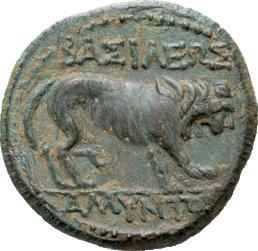

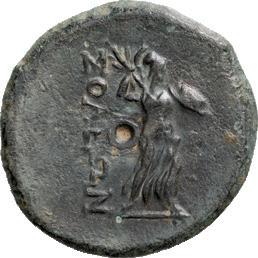





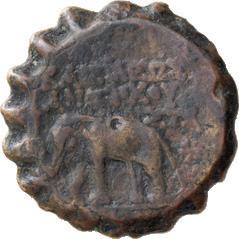
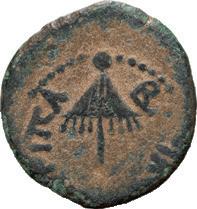





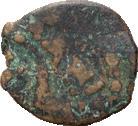







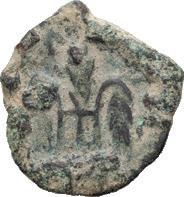


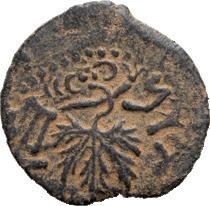


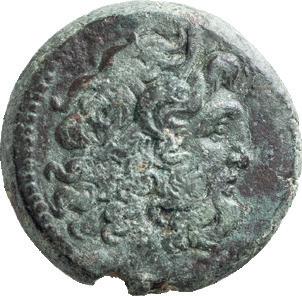





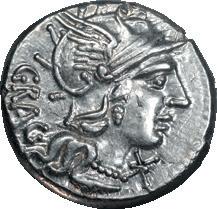






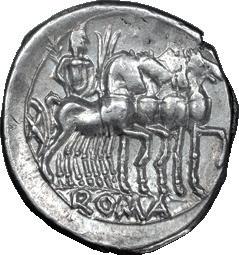







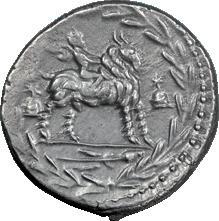

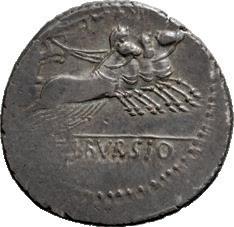
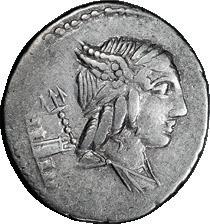





























187183 159 161 152 193 175174 156 169 162 179 184 188 180 177 173 165164163 154 158 160 153 170168 157 155 186185 178 195192 176 181 171 167 189 194 166 182 190 191 172
topped by labarum and patriarchal cross on globe. Ex Elsen 90, lot 460; with printed auction ticket. Choice EF 145 478. ANDRONICUS II; 1282-1328 AD, Trachy, Thessalonica, 0.94g. Sear-2370, Bendall-255. Obv: Bust of St. Demetrius, retrograde B to l. Rx: Andronicus, winged to r., holding model castle and scepter. gVF 175 479. ANDRONICUS II; 1282-1328 AD. Thessalonica, Trachy, 1.14g. Lianta-685, Bendall-243, Sear-2383. Obv: Indistinct. Rx: Andronicus standing holding patriarchal cross in circle and scepter. Good / EF 110 480. ANDRONICUS II AND MICHAEL IX; 1295-1320 AD. Thessalonica, Trachy, 1.58g. Sear-2455. Obv: Half-length figure of winged Archangel Michael. Rx: Michael and Andronicus standing, holding patriarchal cross between them. Good / Fine+ 130 481. ANDRONICUS III; 1328-1341 AD. Thessalonica, c. 1334-1335 AD, Assaria, 1.01g. Sear-2487, DO-929. Obv: St. Demetrius enthroned; sword across knees. Rx: Andronicus standing holding fleur-de-lis and scepter; stars in field. Fine 110
ROMAN PROVINCIAL BRONZE
482. AUGUSTUS; 27 BC-14 AD, Corduba, Spain, Dupondius AE 32x33, 18.80g. RPC128 (141 spec.). Obv: PERMISSV CAESARIS AVGVSTI Head of Augustus bare l. Rx: COL - ONIA PA - TR - ICIA Legionary eagle between two standards. From the Mark Gibbons Collection. gVF 250
483. QUASI-AUTONOMOUS, TIME OF AUGUSTUS; 27 BC-14 AD, Laodiceia ad Mare, Seleucis and Pieria, 5/4 BC, AE 21, 9.32g. RPC-4392, citing 5 spec. with EP in rev. exergue. Obv: Turreted, veiled bust of city goddess r. Rx: Tyche standing l. holding top of rudder and cornucopia; [I]OYΛIEΩ[N] / TΩN KAI / ΛAOΔIKΕΩ[N] and date ΔΜ downwards in r. and l. field, EP in exergue. EF 275
484. TIBERIUS; 14-37 AD, Carthago Nova, Spain, AE 28-30, 12.35g. RPC-179 (93 spec.), SGI-335. Obv: TI CAESAR DIVI AVGVSTI F AVGVSTV[S P M] Bare head of Tiberius l. Rx: NERO ET DRVSVS CAESARES Q[VINQ C V I N C] Visà-vis bare heads of Nero and Drusus Caesars. Nero and Drusus Caesars were sons of Germanicus and Agrippina Senior, and brothers of the future emperor Caligula. Fine / VG 250
485. TIBERIUS; 14-37 AD, Apollonia Salbace, Caria, AE 18-18.5, 6.55g. RPC-2864 (23 spec.). Obv: ΣEBAΣ - TOΣ Bare head of Tiberius r. Rx: AΠOΛΛΩ / NIATΩ / N - KAΛ - ΛIΠΠOΣ / A - PTEM[I] / ΔΩPOY Apollo standing l. holding raven and branch. EF 300 486. CALIGULA; 37-41 AD, Philadelphia, Lydia, AE 17, 4.48g. RPC-3024 (11 spec.), Kurth-178. Obv: ΓΑΙΟΣ - KAIΣAP Bare head of Caligula r. Rx: ΦIΛAΔEΛ / ΦEΩN ME[NEKΛHΣ Φ]IΛOΠATPIΣ Jugate, laureate busts of Dioscuri (?) r. gVF 575 487. NERO; 54-68 AD, Cyme, Aeolis, c. 54-9 AD, AE 19, 5.67g. RPC-2433 (14 spec.), BMC-128, SNG Cop-139. Obv: ΘΕΟΝ - ΝΕΡΩΝΑ - CΕΒΑCΤΟΝ Head laureate r. Rx: ΚΥΜΗ - ΑΙΟΛΙC Cyme standing l. holding globe and trident. From the Mark Gibbons Collection. aEF 250
Unpublished Ibis Standing 488. NERO; 54-68 AD, Dichalkon, Egypt, Alexandria, Year 14 = 67/8 AD, 1.93g. Apparently unpublished; not in RPC I and Supplements, Dattari/Savio, or Emmett. Obv: No legend; Laureate head of Nero r. Rx: Ibis standing r., date L IΔ in upper l. field. VF 365 489. JUDAEA, AGRIPPA II WITH PORTRAIT OF TITUS; Year 26 = 74/5 CE, AE 25, 9.73g. RPC-2276 (6 spec.), Hendin-6314. Obv: AVTO[KP TITOC] - KAICAP CEBAC Bust of Titus laureate, cuirassed r., seen from front. Rx: ΕΤΟ - Κ[S ΒΑ] / ΑΓ[ΡΙ] - ΠΠΑ Nike-Victory advancing r., holding wreath in r. hand and palm branch over shoulder in l. Unusual bust type, cuirassed seen from front, like the denarii of Domitian at Ephesus. Fine 250
490. DOMITIAN; 81-96 AD, Antiochia ad Maeandrum, Caria, AE 22, 7.55g. RPC-1218 (14 spec.). Obv: [ΔOMIT]IANOC KAICAP C - EBACTOC ΓEPMANI around, KOC downwards in r. field, Head laureate r. Rx: EΠΙMEΛHΘEN TI KΛ AΓΛ-A-OV ΦPoVΓI around, ANTIOXE downwards in r. field, Dionysus standing l., leaning on column, emptying cantharus to panther seated at his feet and holding thyrsus. Some of the known and illustrated specimens of this coin definitely show EΠΙMEΛH in the reverse legend, and only this abbreviation is recorded in RPC. Our coin, however, shows the longer abbreviation EΠΙMEΛHΘEN, and the same is true of the added specimen 14 in RPC Online, which is from the same obverse die but a different reverse die than our coin. EF 775
491. DOMITIAN; 81-96 AD, Flaviopolis, Cilicia, Year 17=89/90 AD, AE 27, 11.85g. RPC-1757 (23 spec.), Sear-861, SNG Levante-1529. Obv: [ΔOMETIA]NOCKAICAP Head laureate r. Rx: ΦΛAVI - OΠOΛEI - TWN - ETOYC [Z]I Draped and laureate busts of Dioscuri facing each other, each with star above head. Ex Empire Coins 3, 5 May 1985, lot 152 . Fine / VF 120
492. JUDAEA, AGRIPPA II WITH PORTRAIT OF DOMITIAN; AE 16, 3.57g. RPC-2267 (6 spec.), Hendin-6348. Obv: ΔOME[T KAIC] - ΓEPM Head of Domitian laureate r. Rx: ET - KE / [B]AC - AΓP / [IΠ] Six-branched palm tree with two bunches of dates. Some porosity. VF 350
NERVA; 96-98 AD, Antiochia ad Orontem, Seleucis and Pieria, 97 AD, AE 2930, 13.94g. McAlee-421k. Obv: [IMP] CAESAR NER - VA AV[G III COS] Head laureate r. Rx: Large SC with small K below, all within laurel wreath. VF 250
TRAJAN; 98-117 AD, Bostra, Arabia Petraea, c. 112-114 AD, Tridrachm, 9.88g. RPC-4071 (20 spec., 6 obv. dies), Syd-190 (as Caesarea). Obv: [ΑΥΤΟΚΡ] ΚΑΙC
arrow from quiver with r. hand and holding bow in extended l. arm. From the Mark Gibbons Collection, ex Leu E15, 28 February 2021, lot 1296. The CEB at the end of the obverse legend was left out in both RPC and the Leu auction description. Very rare, apparently only the second recorded coin of Synaus bearing Trajan’s portrait, the other, from the same dies, being in the Vienna collection, though two other “pseudoautonomous” types were also struck under Trajan by the same magistrate Diogenes (RPC 2526-7). Virtually MS 300 496. TRAJAN; 98-117 AD, Laodiceia ad Mare, Seleucis and Pieria, Year 162= 114/115 AD, AE 24, 11.53g. SNG Cop-346, BM-40, RPC-3796. Obv: Laureate head of Trajan r. Rx: Draped bust of Tyche r. Ex Pegasi MB 76, lot 106. VF 245 497. TRAJAN; 98-117 CE, Tiberias, Galilaea, Year 81=98/9 CE, AE 18-19.5, 6.16g. RPC3925 (22 spec.). Obv: AYT KAI N[EP TP] - AIANOC CEB ΓEP Laureate head r. Rx: TIBER [KΛ]AY Crossed cornucopias, palm between, date ET - AΠ across lower field. VF 125
498. HADRIAN; 117-138 AD, Caesarea, Cappadocia, Year 5 = 121/2 AD, Hemidrachm, 1.25g. Syd-260, BM-146, Metcalf Conspectus-87 corr. Obv: AYTO KAIC T[PAI A] ΔPIANOC CEBACT Laureate, draped, cuirassed bust r., seen from front. Rx: ET E Nike advancing r. holding wreath and palm. Toned Good VF; some edge chipping. 100
499. HADRIAN; 117-138 AD, Koinon of Macedonia, Macedonia, AE 20, 8.81g. RPC635. Obv: Laureate head r. Rx: Macedonian shield. VF 150
500. HADRIAN; 117-138 AD, Thessalian League, Thessaly, Magistrate Nikomachos, AE 21, 5.20g. RPC-451 (29 spec.). Obv: A[ΔP]IANON KAICApA ΘECCAΛOI Laureate head of Hadrian r. Rx: CTPΑ (ligate) ΟVΛ (ligate) ΝΙΚΟΜΑΧΟV Athena fighting r. with raised spear and shield. EF 285
501.
HADRIAN; 117-138 AD, Caesarea, Samaria, AE 22-24, 11.07g. RPC-3960 (36 spec.), Sofaer Coll.-28, p. 26, pl. 24. Obv: [IMP TRA HADRIAN]O CA AVG Bust laureate, draped, cuirassed r. Rx: COL I f A - VG CAESAR Tyche standing l., placing r. foot on river god and holding human bust and spear. Fine 200
502. HADRIAN; 117-138 AD, Alexandria, Year 16 = 131/2 AD, Hemidrachm, 16.10g. RPC-5802 (20 spec.), Cologne-1050. Obv: AVT KAI - TPAI AΔPIA CEB Bust laureate, draped, cuirassed r. Rx: Victory advancing l. holding wreath and palm, date L IS in l. field. VF 400
Canopus of Osiris
503. HADRIAN; 117-138 AD, Billon tetradrachm, Alexandria, Year 6 = 121/2 AD, 12.86g. Cologne-825, Datt-1322, Oxford-1018, Emmett-827/6. Obv: [AVT] KAI TPAI - AΔPIA CEB Bust laureate r., fold of cloak on front shoulder and behind neck, crescent in r. field. Rx: Canopus of Osiris standing r., date L - S across field. Fine / VF 250
504. HADRIAN AND ANTONINUS CAESAR; 117-138 AD, Aelia Capitolina, Judaea, 137-8 AD, AE 25, 10.32g. RPC-3970 (17 spec.); Sofaer Coll.-10, p. 81, pl. 71. Obv: IMP CAE TRAIA - HADRIANO AVG (legend weak) Bust of Hadrian laureate, draped, cuirassed r. Rx: IMP T [AEL CAES] - AN[TONINVS C A] K Head of Antoninus bare r. Bold Fine 250
505. SABINA; Saitta, Lydia, AE 18x19, 6.72g. RPC-2445 (8 spec.). Obv: ϹΑΒЄΙΝΑϹЄΒΑϹΤΗ Bust diademed, draped r. Rx: ϹΑΛΗ - ΝΩΝ Cybele seated l. holding patera and resting l. arm on drum; head of lion emerges l. from behind her legs. From the Mark Gibbons Collection. Excellent portrait. VF 385
506. FAUSTINA II; Pautalia, Thrace, AE 20-21, 6.54g. RPC temp-8822, Ruzicka-117. Obv: ΦAVCTEIN - A CE[B]ACTH Bust draped r. Rx: OVΛΠIAC ΠA - VTAΛIAC Hygeia standing r., holding serpent in r. hand that she feeds from patera held in l. hand. Beautiful green patination. VF 250 507. FAUSTINA II; Abila, Decapolis, Year 226 = 161/2 CE, AE 19.5, 5.37g. Sofaer Coll.-7 (p. 142, pl. 124, same dies). Obv: ΦAVCT - CEBACTH Bust draped r. Rx: Cornucopia with three bunches of grapes and three wheat ears; CEΛ - ABI / SKC across field. Dark patina, light brown deposits. aVF 200 508. LUCIUS VERUS; 161-169 AD, Antiochia, Pisidia, AE 20, 4.85g. RPC temp.-7363. Obv: L AVRELIVS CAISAR Laureate, draped and cuirassed bust l., seen from front. Rx: Genius standing r., head l., holding scepter and emptying cornucopia over lighted altar. Rare. Excellent portrait for issue. Olive patination. Bold Fine 165
509. COMMODUS; 177-192 AD, Philippopolis, Thrace, AE 17, 4.15g. Varb-998. Obv: Laureate head r. Rx: Bunch of grapes hanging from vine tendril. aEF 140
510. COMMODUS; 177-192 AD, Parium, Mysia, AE 22, 6.80g. SNG Paris-1483 (same obv. die). Obv: IMP CA M AVR - COMMODVS Bust laureate, draped, cuirassed r. Rx: C G I H PA around, R in exergue, She-wolf standing r., head l., suckling Romulus and Remus. From the Mark Gibbons Collection. EF 245
511. SEPTIMIUS SEVERUS; 193-211 AD, Laodiceia ad Mare, Seleucis and Pieria, 2089 AD, Tetradrachm, 11.61g. Prieur-1149 (94 spec.). Obv: AVT KAI. - .CEOVHPOC - .CE. Bust laureate, draped r., seen from side. Rx: .ΔHMAPX.EΞ.VΠATOC.TO.Γ. Eagle standing r., wings raised, head l., holding in beak wreath with multiple leaves; between the eagle’s legs, star. gVF 125
512.
ΤΡΑΙΑΝΟC CΕΒ
draped r., seen from side. Rx: ΔΗΜ[ΑΡΧ
Two-columned temple on podium of four steps and with eagle in pediment; each of the columns is divided half way up, the lower part apparently being fluted, the upper part smooth; within temple, facing bust of Artemis of Perge set on pedestal and under arch supported by two small columns. The division of the two outer columns into upper and lower parts is clear on our specimen and on RPC pl. 179, 4069-71, but may not have been noticed before: not mentioned in BMC (1899), Sydenham (1933), Price and Trell (1977), or RPC (2015). The lower parts of the columns were apparently fluted, but the upper parts smooth: see the enlargement of a fine specimen in Cambridge in Price and Trell, p. 191, Fig. 346. Bold Fine / VF 385
495. TRAJAN; 98-117 AD, Synaus, Phrygia, Diogenes, magistrate, AE 19, 5.12g. RPC-2525 corr., pl. 113 (same dies). Obv: ΤΡΑΙΑΝΟϹ - ΚΑΙϹΑΡ C[E - B] Head laureate r. Rx: ЄΠΙ ΔΙΟΓЄΝΟ - V - ϹΥΝΑЄΙΤ Apollo, nude, standing r., drawing
SEPTIMIUS SEVERUS; 193-211 AD, Nicopolis ad Istrum, Moesia Inferior, Governor Pollenius Auspex, AE 26.5-28, 11.66g. AMNG-1258 (1 spec., Vienna), Varbanov-2791 (same dies). Obv: AV K Λ CE - CEVHPOC ΠE Bust laureate, draped, cuirassed r., seen from front. Rx: [VΠΑ ΠΟΛ ΑVC]ΠΙΚΟC NIKOΠO around, [Π] POC ICTP in exergue, River god reclining r., resting r. arm on vase set on pile of rocks from which water flows, l. arm bent upwards from elbow holds reed which hangs downwards. VF 285
513. SEPTIMIUS SEVERUS; 193-211 AD, Nicopolis ad Istrum, Moesia Inferior, Governor Ovinius Tertullus, AE 26-27.5, 12.06g. Hristova/Hoeft/Jekov 2012, p. 84, last coin (our piece, plus two others from the same dies); bust var. of AMNG-1276 (1 spec., Bucharest). Obv: AV K Λ CE - CEVHPOC Π Head laureate r. Rx: VΠA OOVI
TEPT[VΛ]ΛOV NIKOΠO ΠPOC I Hercules “Farnese” standing r., holding r. hand behind back, with l. arm leaning on club which is set on pile of rocks before him, lionskin falling over l. arm and club. EF / VF 185
514. SEPTIMIUS SEVERUS; 193-211 AD, Nicopolis ad Istrum, Moesia Inferior, Governor Aurelius Gallus, c. 202-205 AD, AE 26-27, 13.03g. Pfeiffer-21,10 (9772) (same dies). Obv: AV K Λ CEΠ - CEVHPOC Π Bust laureate, draped, cuirassed r. Rx: .V AV ΓAΛΛOV MA - PKIANOΠOΛITΩN Tyche standing l., kalathos on head, holding rudder and cornucopia. gVF 250
493.
494.
ΝΕΡ
ΓΕΡΜ ΔΑΚ Bust laureate,
ΕΞ ΥΠΑ] ΤΟ ς
515.
SEPTIMIUS SEVERUS; 193-211 AD, Nicopolis ad Istrum, Moesia Inferior, AE 17, 3.05g. AMNG-1351; Hristova/Hoeft/Jekov, Nicopolis 2012, p. 55, coin 4 (same obv. die). Obv: AV KAI CE - CEVHPOC Head laureate r. Rx: [NI]K[O]ΠOΛIΠPOC ICT Hera standing l. holding [patera] and scepter. gEF 175
516. SEPTIMIUS SEVERUS; 193-211 AD, Nicopolis ad Istrum, Moesia Inferior, AE 17, 2.83g. Varbanov-2395 var. (bust). Obv: Laureate bust r. Rx: Eight-pointed star. gEF 250
517. SEPTIMIUS SEVERUS; 193-211 AD, Antiochia, Pisidia, c. 203-11 AD, AE 33, 29.52g. SNG Cop-27, SNG Paris-1100. Obv: IMP CAES L SEP SEVERVS PER AVG Head laureate r. Rx: COL CAES ANTIOCH S R Men, crescent behind shoulders, standing r. holding scepter and Victory on globe, resting l. elbow on column and placing l. foot on bucranium, cock to l. VF 225
518. JULIA DOMNA; Nicopolis ad Istrum, Moesia Inferior, c. 202-5 AD, AE 27, 13.64g. AMNG-1464 (3 spec.), BM-27 with engraving (same dies). Obv: ΘEA ΔOMNACEBACTH Bust draped r. Rx: VΠA AVP ΓAΛΛOV NEIKOΠOΛIT ΠPOC IC Caracalla on horse galloping r., his cloak floating behind him, spearing wild boar, running r. below horse. Interesting types on both sides, and rare. This seems to be the only obverse die that calls Domna “Thea”, that is “goddess”, at Nicopolis during her lifetime. The imperial hunt on the reverse similarly appears on just this one reverse die. The governorship of Aurelius Gallus, who is named on the reverse, must have overlapped with the years 202-205, since he is also named on coins of Plautilla. Area of weak strike. VF 325
519. CARACALLA; 198-217 AD, Nicopolis ad Istrum, Moesia Inferior, AE 26-28, 12.84g. Hristova/Hoeft/Jekov 2012, p. 248. coin 1 (same obv. die). Obv: AVT K Π CE - Π ΓETAC AV Bust laureate, draped, cuirassed r. Rx: V ΦΛ OΛΠIAN NIKOΠOΛIT around, [ΠP]OC I in exergue, Nike advancing l. holding wreath and palm. gVF 225
520. CARACALLA; 198-217 AD, Ancyra, Galatia, AE 29-30, 15.92g. Cf. Arslan pl. 12, 131 and pl. 23, B65 (same obv. die); cf. SNG Aulock-6176 (similar rev. type) Obv: ANTΩNEINOC (NT and NE ligate) - A - VΓOVCTOc Bust laureate l., fold of cloak on front shoulder. Rx: MHTPOΠOΛE - ΩC ANKVPAC Athena standing l. holding shield and spear that rest on ground. Ex Owens 24, 29 February 1996, lot 100. VF / Fine 250
521. CARACALLA; 198-217 AD, Ancyra, Galatia, AE 29x30, 18.30g. Roma E71, 28 May 2020, lot 746 = Kölner Münkabinett 54, 11 November 1991, lot 369 (this coin). Not in Arslan, Coinage of Ancyra, or other standard references. Obv: ANTΩNINOC - AVΓOVCTOC Head laureate r. Rx: MHTPOΠ - O - Λ[EΩC] AN around, KVPAC in exergue, Zeus seated l. holding patera and scepter. From the Mark Gibbons Collection; pedigree given above. VF 275 522. CARACALLA; 198-217 AD, Antiochia ad Orontem, Seleucis and Pieria, AE 22, 6.28g. McAlee-697 (Scarce). Obv: A[VT] K MAP AV - ANTWNEINOC - CEB Head laureate r. Rx: S C within wreath; below, eagle with raised wings standing l., head r. VF 125 523. CARACALLA AND JULIA DOMNA; Marcianopolis, Moesia Inferior, Struck under governor Quintilianus, 5 Assaria, 11.56g. Varbanov-1007 (same dies), AMNG667 (1 spec., rev. ill. pl. XV.21, same die). Obv: [ANTΩNI]NO - C AVΓOVCTOC around, IOVΛIA / ΔOMNA above and below, Laureate head of Caracalla r. facing draped bust of Domna l. Rx: VΠ KVNTIΛIANO - V MAPKIANOΠ around, OΛI upside down in exergue, T - ΩN across middle field, Athena standing l., sacrificing from patera over altar at he feet and placing l. hand on shield resting on ground; behind her owl standing on column with value mark E (retrograde) above. gVF 185
524. GETA AS CAESAR; 198-209 AD, Marcianopolis, Moesia Inferior, AE 17, 2.38g. AMNG-704, Pfeiffer-206 var. (same obv. die). Obv: [Π CE]ΠTI - ΓETA[C K] Bareheaded, draped, cuirassed bust r. Rx: MAPKIANO - ΠOΛITΩN Tripod, with serpent climbing its middle leg and raising head to r. above. EF 200
525. GETA AS CAESAR; 198-209 AD, Marcianopolis, Moesia Inferior, AE 15, 3.08g. Varbanov-1094 (same obv. die), AMNG-702a (3 spec.). Obv: Π C[EΠT - Γ]ETAC Bare-headed, draped, cuirassed bust r. Rx: MAPKIAN - OΠOΛ[IT] Eagle with raised wings standing front, head r., without wreath in beak. EF 125
526. MACRINUS; 217-218 AD, Nicopolis ad Istrum, Moesia Inferior, Governor P. Fu. Pontianus, AE 24.5, 11.90g. Pfeiffer-212 (same obv. die). Obv: AVT K OΠEΛΛIOC CEVH - MAKPEINOC Bust laureate, cuirassed r. Rx: [VΠ ΠΟΝ]ΤΙΑΝΟV ΜΑPΚΙΑΝOΠOΛEITΩN (AP ligate) Tyche standing l., kalathos on head, holding rudder and cornucopia. EF 285
527. MACRINUS; 217-218 AD, Nicopolis ad Istrum, Moesia Inferior, Governor Statius Longinus, AE 25-26, 11.96g. Varbanov-3466; Hristova/Hoeft/Jekov 2012, p. 303, 1-3 (all from same dies as ours). Obv: AVT K M OΠEΛΛ - CEV MAKPINO[C] Bust laureate, cuirassed r. Rx: VΠ CTA ΛONΓINOV NIKOΠOΛITΩN around, ΠPOC IC in exergue, River god reclining l., head r., placing r. hand on prow before him and l. hand on urn behind him, from which water flows. Good Fine / VF 250 528. MACRINUS; 217-218 AD, Nicopolis ad Istrum, Moesia Inferior, Governor Statius Longinus, AE 27, 13.31g. AMNG-1742 (6 spec.), Varbanov-3507. Obv: AVT K M OΠEΛΛ - CEV MAKPINOC Bust laureate, cuirassed r. Rx: VΠ CTA [ΛONΓ]INOV NIKOΠOΛITΩN ΠPOC around, ICTPON in exergue, Ares/Mars standing l., holding shield and spear which rest on ground. aVF 200 529. MACRINUS AND DIADUMENIAN; 217-218 AD, Marcianopolis, Moesia Inferior, Struck under the governor Pontianus, 5 Assaria, AE 26, 14.48g. AMNG750 (3 spec.), Varbanov-1196. Obv: AVT K OΠEΛΛI CEV MA[K]PEINOC K M OΠEΛΛI ANTΩNEINOC Vis-à-vis busts of Macrinus r., laureate, draped and cuirassed, and Diadumenian l., bare-headed and draped. Rx: VΠ ΠONTIANO[V] MAPKI[ANOΠΟΛΕΙ]ΤΩΝ Hygieia (Salus) standing r. holding serpent in r. hand and feeding it from patera held in l. hand, value mark E=5 in l. field. From the same obverse die as Pfeiffer-230,12, there with reverse Apollo or Bonus Eventus sacrificing. aVF 100
530. DIADUMENIAN AS CAESAR; 217-218 AD, Nicopolis ad Istrum, Moesia Inferior, Governor M. Claudius Agrippa, AE 25-25.5, 9.40g. Hristova/Hoeft/Jekov, Nicopolis 2012, p. 372, last two illustrations (both from same dies as ours); bust var. of AMNG-1822. Obv: K M OΠΠEΛ AN[TΩNINOC] ΔIAΔ[VMENIA]NO - C Head bare r. Rx: [VΠ] AΓPIΠΠA NIKOΠO - ΛITΩN ΠPO around, [C] ICTPΩ in exergue, Trophy of arms, at base of which are two seated captives, a female with arm resting on
knee and a male with hands tied behind back; on r., emperor in military dress standing l., raising r. arm behind the trophy presumably in order to complete it, and holding spear with lowered l. arm; on l., Nike (Victory) standing r., extending r. arm to inscribe one of the shields on the trophy. Rare. This reverse type was apparently struck from just one reverse die, which, as Pick noted, was used with obverses of both Macrinus and Diadumenian. aEF 300
531. DIADUMENIAN AS CAESAR; 217-218 AD, Anazarbus, Cilicia, AE 29, 13.12g. Lindgren-778 (this coin), Ziegler-331. Obv: Bare-headed, draped and cuirassed bust r. Rx: Nike, trophy over shoulder, driving biga r. Ex CNG 35, 30 September 1995, lot 1117. VF 200
532.
ELAGABALUS; 218-222 AD, Marcianopolis, Moesia Inferior, AE 25-27, 10.35g. AMNG-826 (3 spec.), Varbanov-1524. Obv: AVT K M AVPHΛΙ - ΑΝΤΩΝΕΙΝΟC
Head laureate r. Rx: VΠ IOvΛ ANT CEΛEVKOv MAPKIANOΠOΛITΩ around (both Ov’s ligate), N in exergue, Hermes standing l. holding purse and caduceus. VF 100
ELAGABALUS; 218-222 AD, Marcianopolis, Moesia Inferior, Governor Sergius Titianus, 221-2 AD, AE 24-25, 9.78g. AMNG-897 (3 spec.), Varbanov-1470 (same dies). Obv: AVT K M AVPH - ANTΩNEINOC Head laureate r. Rx: VΠ CEPΓ TITIANOV - MAPKIANOΠOΛITΩN Aequitas standing l. holding scales and cornucopia. The beard on Elagabalus’ portrait specifies the date 221-2, since the beard only appears on Roman coins in the course of 221. VF 200 534. ELAGABALUS; 218-222 AD, Nicopolis ad Istrum, Moesia Inferior, AE 25, 11.32g. Obv: AV K [M] AVPH - ANTΩNINOC Bust laureate r., with fold of cloak on l. shoulder. Rx: N / IKOΠ / OΛITΩ / N ΠPOC / ICTPO / N in six lines within an oak wreath, the two halves of which are separated at the bottom by a curved twig and a small cluster of leaves on each side, while its two upper ends meet at a decorative roundel or medallion. From the Mark Gibbons Collection. Choice EF 275 535. ELAGABALUS; 218-222 AD, Nicopolis ad Istrum, Moesia Inferior, Governor Novius Rufus, AE 25, 11.82g. AMNG-1914 (5 or 6 spec.), Varbanov-3971 = 3974 (same dies). Obv: AVT M AVPH - ANTΩNEINOC Head laureate r. Rx: VΠ NOBIOV POΦOV NIKOΠOΛITΩN ΠPO around (ΠP ligate), C I - CTP / ON across field, Artemis running r., drawing arrow from quiver and holding bow, hound running r. alongside her. VF 200 536.
533.
ELAGABALUS; 218-222 AD, Nicopolis ad Istrum, Moesia Inferior, AE 17, 3.03g. Varbanov-3854. Obv: Laureate, draped, cuirassed bust r. Rx: Lion walking r. EF 250 537. ELAGABALUS; 218-222 AD, Philippopolis, Thrace, AE 16x20, 4.72g. Varbanov, Philippopolis-p. 403. Obv: AVT [K] M AVP - ANTΩNEINOC (NE ligate) Head of Elagabalus laureate r. Rx: ΦIΛIΠΠ[O]ΠOΛEITΩN NEΩKOPΩN (NE and ΩN ligate) Nemesis standing l. holding scales and goad. aEF 75 538. ELAGABALUS; 218-222 AD, Ephesus, Ionia, AE 29x30.5, 12.89g. RPC temp4892 (20 spec., including ours). Obv: AVT K M AVP AN - TΩNEINOC Bust laureate, draped, cuirassed r. Rx: EΦECIΩN ΠPΩ - TΩN ACIAC Artemis advancing r., drawing arrow from quiver and holding bow, dog running r. at her feet. From the Mark Gibbons Collection, ex Leu E16, 22 May 2021, lot 2776. This coin cited in RPC. aEF 200
539. SEVERUS ALEXANDER; 222-235 AD, Byzantium, Thrace, 219-20 AD, AE 30, 15.11g. Schönert-Geiss-1707, pl. 97 (same dies). Obv: M AVP CEVH AΛEΞANΔPOC
AVΓ Bust laureate, draped, cuirassed r. Rx: EΠI AIMI CEVHPOV - KAI IOVΛ CEVHPAC around, BV - ZAN / TI - ΩN across field, Wickerwork basket or torch, pointed at both ends. Rare: Schönert-Geiss recorded only four specimens, from two obverse and two reverse dies. From our die pair she knew only one specimen, in Berlin, slightly less well preserved than ours (pl. 97, 1707). Fine 200
540. SEVERUS ALEXANDER; 222-235 AD, Caesarea, Cappadocia, Year 6 = 227 AD, AE 27, 12.29g. RPC-10898 (1 spec., same dies). Obv: [AY K] CEOYH - AΛEΞANΔ
Bust laureate, draped, cuirassed r. Rx: MHT - PO - KAIC[A] around, ET S in exergue, Agalma of Mt. Argaeus in four-columned temple, in pediment of temple pellet. Very rare; only one other specimen, from the same dies, known to RPC Temp. The same type also occurs in a smaller denomination, but there with only two rather than four columns on the temple facade, and with the mountain agalma resting on the temple floor rather than on a base or altar. Fine / VF 325
541. SEVERUS ALEXANDER; 222-235 AD, Caesarea, Cappadocia, Year 6 = 227 AD, AE 25.5-27, 11.41g. Cf. Sydenham/Malloy-567c. Obv: AY K CEOYHPOCAΛEΞANΔPO Bust laureate, draped, cuirassed r. Rx: [M]HTPO - KAICAPE around, ET S below, Mt. Argaeus on low base, wreath on summit. aVF 150 542. MAXIMINUS I THRAX; 235-238 AD, Anchialus, Thrace, AE 27, 12.56g. Not in AMNG or Varbanov. Obv: AVT MAΞIMEIN - NOC EVCEBHC AVΓ (ME, HC, and AVΓ ligate) Bust laureate, draped, cuirassed r. Rx: O - VΛΠIAN - ΩN AΓΧIAΛE around (ΩN ligate), ΩN in exergue, Nemesis standing l., wheel at feet, holding scales and rod. This reverse type is not in AMNG or Varbanov for Maximinus at Anchialus. Another specimen from the same dies was in Naville 47, 3 March 2019, lot 111. Varbanov-572 shows this same obverse die coupled with a different reverse type, Hygieia (Salus) holding and feeding serpent. VF 200
543.
544.
MAXIMINUS I THRAX; 235-238 AD, AE 31, 11.18g. SNG Aulock-5608. Obv: Laureate, draped, cuirassed bust r., seen from behind. Rx: Tyche seated l. on rocks within distyle temple. Ex Fred Shore FPL 107, lot 235, August 2003. VF 200
MAXIMINUS I THRAX; 235-238 AD, Ninica Claudiopolis, Cilicia, AE 25, 9.50g. SNG Levante-623 (same dies), SNG Paris-794 (same dies). Obv: IMP MAXIMINUC [PI] Bust laureate, draped, cuirassed r. Rx: COL NI - N - I - CLA around, U - [Δ] across field, Marsyas standing l. holding grape (?) with half raised r. hand and wineskin over shoulder with l. hand. VF 250
Fine Asklepios
545. GORDIAN III; 238-244 AD, Nicopolis ad Istrum, Moesia Inferior, Governor Sab. Modestus, AE 25x26, 12.53g. Hristova/Hoeft/Jekov 2013, p. 458, last two coins on page (same dies as ours). Obv: AVT K [M] ANTW ΓOPΔIANOC AVΓ (AVΓ ligate) Bust laureate, draped, cuirassed r. Rx: VΠΔ CAB MOΔECTOV NIKOΠOΛEITΩΝ ΠPOC ICT around (ΩN and ΠP ligate), O / N in r. field, Asklepios standing r., head l, extending patera to serpent coiled around rod at his side. From the Mark Gibbons Collection. EF 285
546. GORDIAN III; 238-244 AD, Nicopolis ad Istrum, Moesia Inferior, Governor Sabinius Modestus, AE 28x29, 12.84g. AMNG-2091 (3 spec.). Obv: ΑΥΤ Κ Μ ΑΝΤ
Γ - ΟΡΔΙΑΝΟC ΑVΓ Bust laureate, draped, cuirassed r. Rx: VΠ CΑΒ ΜΟΔΕCΤΟV - ΝΙΚΟΠ - ΟΛΕΙΤΩΝ around, ΠΡΟC ICTPON in exergue, Tyche standing l. in fourcolumned temple, the columns with spiral fluting; in pediment, spear and shield. From the Mark Gibbons Collection. Virtually MS 300 547. PHILIP I; 244-249 AD, Viminacium, Moesia Superior, Year 7 = 245/6 AD, AE 2728.5, 16.42g. AMNG-103 (37 spec.). Obv: [IM]P M IVL PHILIPPVS AVG Bust laureate, draped, cuirassed r. Rx: P M S C - OL VIM around, AN VII in exergue, Moesia standing l. between bull and lion, over which she extends her hands. Fine 175
548. PHILIP I; 244-249 AD, Seleuceia, Cilicia, AE 36.5-38, 20.71g. SNG Paris-1040 (same dies), SNG Levante-778 (same obv. die). Obv: AVT K M IOVΛIOC ΦIΛIΠΠOC CE / B Bust radiate, draped, cuirassed r. Rx: CEΛEVKEΩN TΩN ΠPOC
TΩ KA - ΛV around, KAΔNΩ in upper field, ΕΛΕΩΘE in exergue, PA / C in upper field, Busts of Apollo, with laurel branch before his breast, and city-goddess, wearing kalathos and with cornucopia by shoulder, facing one another. From the Tinchant Collection, according to a ticket accompanying the coin. VF / VF+ 300
549. PHILIP I; 244-249 AD, Heliopolis, Coele-Syria, AE 27, 14.17g. RPC-6484, SNG Cop-434. Obv: Laureate, draped and cuirassed bust r. Rx: Fortuna standing facing, holding rudder and cornucopia, flanked by male figures each holding a torch in upraised hand; all within billowing canopy held by two female figures on pedestal. Good Fine 285
550. PHILIP I AND OTACILIA SEVERA; Tomis, Moesia Inferior, AE 27, 15.01g. Apparently unpublished reverse type variant without wheel at Nemesis’ feet. Obv: AVT M IOVΛ ΦIΛIΠΠOC AVΓ M WT around (AVΓ ligate), A CEBHPA / CEB in exergue, Busts of Philip I and Otacilia vis-à-vis. Rx: MHTPO - ΠON - TOV TOMEΩC Nemesis standing l. holding cubit rule and bridle. The published specimens of this coin all seem to add a wheel at Nemesis’ feet, which is however omitted on our coin: see AMNG-3581; Varbanov-5768; RPC temp-unassigned, ID 28169; and CoinArchives Pro. Note also that all coins of Philip I and Otacilia together at Tomis are rare; Regling found only two obverse dies of this type, ours and one other (AMNG p. 906). VF 200
551. PHILIP II AS CAESAR; 245-247 AD, Viminacium, Moesia Superior, Year 7 = 245/6 AD, AE 29-30, 23.60g. AMNG-116 (6 spec.), Varbanov-153. Obv: M IVL PHILIPPVS CAES Bare-headed, draped, cuirassed bust r. Rx: P M S C - OL V[IM] around, AN VII in exergue, Moesia standing l., extending her r. hand over a bull and her l. hand over a lion. Viminacium-mint bronzes of Philip II as Caesar are rare. The bull and lion are the symbols of the two Upper Moesian legions, IIII Flavia and VII Claudia respectively. VF 200
552.
PHILIP II AS CAESAR; 245-247 AD, Antiochia, Pisidia, AE 25, 11.58g. SNG Paris-1273. Obv: Radiate, draped, cuirassed bust r., seen from behind. Rx: Pax walking l., holding branch and scepter. VF+ 150
P F Turreted Tyche standing l. with foot on rock, holding eagle standing r. on small bust, and long scepter; behind her, Victory on column; at feet, wine jar. Fine / Good Fine 275
561. BOSPORUS, RHESCUPORIS IV, WITH TRAJAN DECIUS; Year 547 = 250/1 AD?, EL Stater, 7.39g. MacDonald-609/1. Obv: ΒΑCΙΛΕUC ΡΗCΚ - ΟVΠΟΡΙΔ Diademed, draped bust of Rhescuporis r., seen from front. Rx: Laureate head of Trajan Decius r., club before neck, date ZMΦ? below. Date on reverse unclear; could also be Year 544 or 546, MacDonald-606 or 608. VF 100
562. HERENNIA ETRUSCILLA; Caesarea, Samaria, AE 25-27, 16.26g. RPC-2079 (7 spec.), pl. 140 (same dies). Obv: ERENNIA ETRVS[CILLA AVG] Bust draped r. wearing stephane. Rx: COL PR F AVG [F C CAES MET]R Eagle standing l., head r., with wings spread, supporting circular band enclosing turreted and draped bust of Tyche r. aVF 275
553.
PHILIP II AS CAESAR; 245-247 AD, Tomis, Moesia Inferior, AE 26-28, 12.35g. AMNG-3602 (3 spec.), Varbanov-5795 (same dies). Obv: MA - P IOVΛIOC ΦIΛIΠΠO[C] around, KAICAP in exergue, Bare-headed, draped, cuirassed bust of Philip r. facing draped bust of Serapis l. wearing kalathos. Rx: MHTPOΠ ΠON - TO - V TOMEΩC (ON and ΩC ligate) Hygieia (Salus) standing r., holding serpent in r. hand and feeding it from patera held in l. hand. aVF 150 Pan Playing Syrinx 554. PHILIP II AS AUGUSTUS; 247-249 AD, Sillyum, Pamphylia, AE 24, 8.70g. RPCunassigned; ID 21103; 9 spec., the 7th illustrated being from the same dies as ours. Obv: ΑΥ Κ Μ ΙΟΥ ϹƐΟΥ ΦΙΛΙΠΠΟϹ Ϲ Bust laureate, draped, cuirassed r. Rx: Pan with goat’s legs seated l. on rocks, playing syrinx and holding pedum. Fine / VF 200 555. TRAJAN DECIUS; 249-251 AD, Philomelium, Phrygia, AE 25, 7.56g. RPC-900 (12 spec.). Obv: ΑΥΤ Κ Γ ΜEC Κ ΤΡΑΙ ΔEΚΙΟ СE laureate, draped, cuirassed bust r. Rx: ΦΙΛΟΜΗΛEWΝ EΠ EΥΤVΧΟV around, large B in exergue, River god Gallos reclining l., holding out cornucopia and placing l. hand on overturned urn behind him from which water flows. Ex Empire Coins 7, Greater New York Numismatic Convention, 2 May 1987, lot 492 (Gordon J. Dickie Collection); ex Frank Kovacs List 16, May 1982, and Dr. Martin Newman Collection. Probably from the same dies as RPC online-900, specimen 4, where the die break on the reverse has however expanded, obscuring the B in exergue. aEF / VF 200
556. TRAJAN DECIUS; 249-251 AD, Philomelium, Phrygia, AE 23.5-25, 7.63g. RPCtemp. 895 (25 spec.), SNG Leypold-1717 (same dies). Obv: ΑΥΤ Κ Γ ΜEC Κ ΤΡΑΙ ΔEΚ[ΙΟ СE] Radiate, draped, cuirassed bust r. Rx: ΦΙΛΟΜΗΛEWΝ EΠ EΥΤVΧΟ Β around, B in l. field, River god Gallos reclining l., holding out cornucopia and placing l. hand on overturned urn behind him from which water flow. From the same dies as RPC online’s specimens 12, 20, 21, and 24. VF 125
557. TRAJAN DECIUS; 249-251 AD, Antiochia, Pisidia, AE 25-26, 7.48g. Krzyz-Av. I/ Rv. 5, p. 192, pl. XLIII; RPC-1253 (3 spec.), pl. 85 (same dies). Obv: IMP CAES G MESS Q DECIO TRAI AV Radiate, cuirassed bust r., seen from front, fold of cloak on l. shoulder. Rx: ANTIOCHI COL - O around, ANTHIOC / S R in exergue, River god Anthios reclining l. on urn from which water flows, holding reed and cornucopia. VF 250
558. TRAJAN DECIUS; 249-251 AD, Tarsus, Cilicia, AE 33, 16.98g. RPC-1356 (30 spec.), pl. 92, 1356/1 (same dies). Obv: ΑV Κ[ΑΙ Γ ΜEС] ΚVΙΝ ΔEΚΙΟС [ΤΡ] ΑΙΑΝΟС around, Π - Π across field, Bust radiate, draped, cuirassed r. Rx: ΤΑΡСΟV ΜΗ[ΤΡ]ΟΠΟΛEΩС around, Α - Μ / Κ - Γ / B in field, Heracles standing l., head r., on double groundline, resting r. hand on club and holding lionskin in l. Ex Knobloch List 107, May 1967, no. 107. The many recorded specimens of this coin apparently come from only two obverse dies and one reverse die. The same obverse die was also used with a number of other reverse types. VF 250 559. TRAJAN DECIUS; 249-251 AD, Caesarea, Samaria, AE 20, 7.14g. RPC-2095 (4 spec.), pl. 141 (same obv. die). Obv: IMP C M Q TRA[IANVS DECI]VS AVG Bust radiate, draped, cuirassed r. Rx: COL P F A[V F C] - CAES METRO - P Sarapis standing r., head l., raising r. arm and holding scepter in lowered l. RPC reads just TRAI in the obverse legend of this coin, but the spacing of the legend on our example suggests that TRA[IANVS] should be restored. Fine 250
560. TRAJAN DECIUS; 249-251 AD, Aelia Capitolina, Judaea, AE 26-27.5, 14.95g. RPC-2178 (22 spec.), Sofaer-140 (same obv. die). Obv: IMP C C MES Q TRA DECIVS AVG Bust laureate, draped, cuirassed r. Rx: COL [A] - EL - K - [AP C]OM
563. HERENNIA ETRUSCILLA; Caesarea, Samaria, AE 19-21, 5.19g. Sofaer Coll.141, RPC-2102 (27 spec.). Obv: [E]RENNIA ETRVS[CILL]A AV[G] Bust draped r. wearing stephane. Rx: COL P F AV F C - CA[ES M]ETRO Turreted and draped bust of Tyche r. Purchased from Amphora Coins, on an unrecorded date. Ex Bill Behnen Collection. Dark green patina, devices highlighted by orange deposits. VF 150 564. HERENNIA ETRUSCILLA; Baris, Pisidia, AE 23-24, 7.63g. RPC-914 (4 spec., including ours), pl. 62 (same dies); Aulock, Pisidien-311/2. Obv: EPENNIA - EΤΡΟVСΚΙΛΛΑ СB Bust draped r., wearing stephane. Rx: BAP - H - NΩ - N Men on horse stepping r., placing r. hand on hip. Purchased from Tom Vossen, March 2005; this specimen listed in RPC-914, spec. 4. Apparently only the fourth known specimen, and from the same dies as the other three (Berlin ex Imhoof-Blumer, Paris ex Robert, Winterthur). This was Etruscilla’s only obverse die at Baris, and was used with two other reverse types too, RPC-913 and 915. The same Men on horseback reverse die was also used for Herennius Etruscus as Caesar, RPC-917. VF 300 565. HERENNIUS ETRUSCUS AS CAESAR; 250-251 AD, Mallus, Cilicia, AE 30, 17.66g. RPC-1434 (17 spec.). Obv: HEREN ETRVSC MES DECIVM CAESS (sic) Bust radiate, draped, cuirassed r., seen from front. Rx: MAL - LO - CO - LONIA Turreted and veiled Tyche seated l. on rocks, holding ear of wheat; to l. and r. vexilla inscribed S and C respectively; at her feet, two river gods swimming in opposite directions. Purchased from B.A. Seaby, 6 October 1971; ex Seaby’s Bulletin, April 1971, A424. With the Seaby ticket handwritten by David Sear. Rare: our specimen and the seventeen cited by RPC-1434 seem to come from just one obverse and three reverse dies. (RPC lists nineteen specimens, but by mistake their specimens 14 and 15 are not of Herennius Etruscus). aVF / EF 325 566. HOSTILIAN AS CAESAR; 250-251 AD, Antiochia ad Orontem, Seleucis and Pieria, Tetradrachm, 10.74g. McAlee-1160b (V. Rare), Prieur-647 (5 spec.), RPC1717 (3 spec.). Obv: Γ OYAΛ OCTIΛIAN ME KVINTOC KECAP Bare-headed, draped bust r., seen from front, two pellets below bust (officina 2). Rx: ΔHMAPX EΞOYCIAC around, S C in exergue, Eagle with spread wings standing l. on palm branch, holding wreath in beak. From the same obverse die as McAlee’s illustrated specimen. Purchased from Joel Malter, 18 August 1969. Hostilian’s Antioch tetradrachms are all rare: only twelve specimens turned up in the Dura excavations, compared to 483 of Trajan Decius and 194 of Herennius Etruscus (McAlee, p. 374).
VF 400
567. HOSTILIAN AS CAESAR; 250-251 AD, Viminacium, Year 12=250/1 AD, AE 25x26, 10.98g. RPC-38 (50 spec.), AMNG-148. Obv: C VAL HOST M QVINTVS Bare-headed, cuirassed bust r. Rx: P M S C - OL VIM around, AN XII in exergue, Moesia standing l. between bull and lion, extending her arms over their heads. Rare variant with Hostilian’s bust cuirassed only rather than draped and cuirassed, and omitting CAE, CA, or C at end of obverse legend, presumably due to lack of space.
VF 100
568. VOLUSIAN, PERGA IN ALLIANCE WITH EPHESUS; 251-253 AD, Perga, Pamphylia, AE 35, 24.47g. RPC-1135. Franke-Nollé-1700–3. Obv: Laureate, draped and cuirassed bust of Volusian, r.; below, eagle, spreading wings. Rx: Artemis of Perga standing r., crowned with crescent, holding arrow and bow, and cult statue of Artemis of Ephesus standing facing, wearing kalathos, crescent at shoulders; between them, two stags; at r., another stag. Rare; none on Coin Archives. Fine 300
569. VOLUSIAN; Neapolis, Samaria, AE 25, 13.02g. RPC-2160. Obv: AVT KAI Γ OVI
TPEB OVOΛOVCIAN Radiate, cuirassed bust r. Rx: ΦΛ NEAC - ΠOΛEWC Eagle with wings spread standing l., supporting Mount Gerizim with twin peaks surmounted by temple and altar, stairway to temple, and colonnade below. Scarce and interesting architectural type. Fine / VF 260
570. AEMILIAN; 253 AD, Antiochia, Pisidia, AE 20x21, 5.78g. RPC-pl. 87, 1299/5 (same dies, 10 spec.). Obv: IMP C M AEM AEMILIANO A - VG Radiate, draped, cuirassed bust r. Rx: ANTIOC - HI OCL A around, S R above exergue line, Vexillum topped by eagle standing l., head r., wings raised, between two standards. Aemilian’s coins at Antioch were all struck from this single obverse die. EF 275
571. TREBONIANUS GALLUS; 251-253 AD, Antiochia ad Orontem, Seleucis and Pieria, AE 28, 16.40g. McAlee-1180. Obv: Laureate, cuirassed bust r., seen from behind. Rx: City goddess seated facing within tetrastyle temple, river god Orontes swimming at feet; above temple, ram. Hole at 3:00. EF 175
572. VALERIAN II AS CAESAR; 256-258 AD, Colybrassus, Cilicia, AE 29x30, 11.12g. SNG Levante-347 (same dies). Obv: ΠOV ΛIK KOP OVAΛEPIANON KAI
CEB Bare-headed, draped, cuirassed bust r.; eagle below with open wings, value mark IA before (11 assaria). Rx: KOΛVBP - ACCEΩN Hermes standing l. holding purse and caduceus. From the Mark Gibbons Collection. Some isolated pitting. VF 325 573. VALERIAN I; 253-260 AD, Alexandria Troas, Troas, AE 18x19, 4.58g. Bellinger-438 (6 spec.). Obv: IMP LIC - VALERIA Laureate, draped, cuirassed, bust r. Rx: C - OL A around, TRO in exergue, Horse grazing r.; behind, herdsman standing r. holding pedum. From the Mark Gibbons Collection. EF 275
VALERIAN I; 253-260 AD, Adana, Cilicia, AE 29, 16.48g. SNG Paris-1887 (same obv. die). Obv: Laureate and cuirassed bust r. Rx: Zeus seated l. holding patera and scepter. Levante, Coinage of Adana, Num. Chron. 1984, p. 84, found 33 specimens of this coin from two obverse and ten reverse dies and comments that it may have been issued in connection with Valerian’s visit to Cilicia in 254/5 AD. VF 200
VALERIAN I; 253-260 AD, Antiochia, Pisidia, AE 22, 5.32g. Krzyzanowska-obv. die II, rev. die apparently new. Obv: IMP CAE P AELL OVAΛEPIAN Bust radiate,
574.
575.














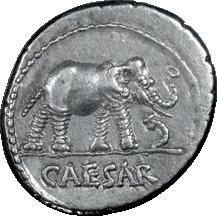

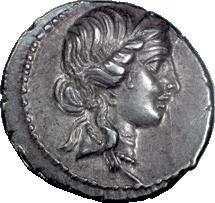




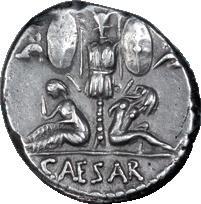


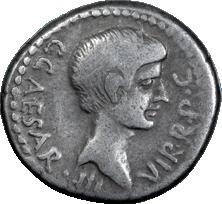
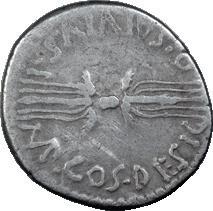






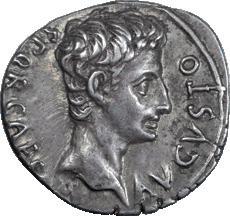




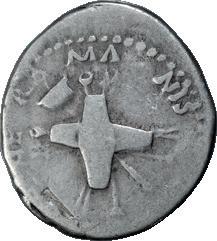







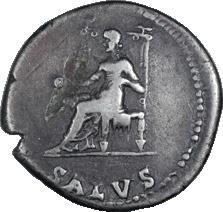













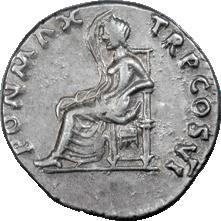
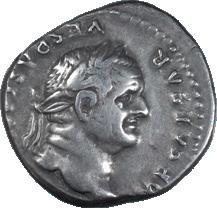

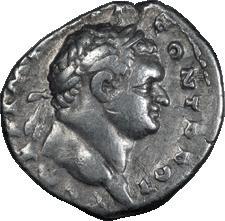



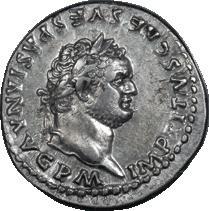






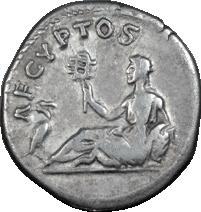
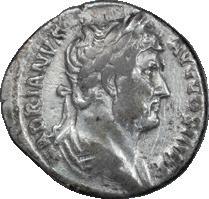

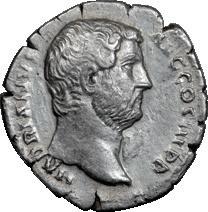

216 225 218217 233 222 223221 231 211 199 201196 207 229 205204 226 230 206 200 198 213 197 234 208 209 202 214 203 219 220 212 210 228 224 227 232 215
draped, cuirassed r. Rx: ANTIOc - HI OCL on l. and r., S R in exergue, Vexillum topped by eagle standing front with wings raised and head r., flanked by two standards, the second one topped by wreath. VF 100
576. GALLIENUS; 253-268 AD, Smyrna, Ionia, AE 27, 7.68g. SNG Cop-1412 (same dies), SNG Aul-2237 var. Obv: [AVT K ΠO] ΛIKIN ΓAΛΛIHNOC Bust laureate, draped, cuirassed r., round countermark Η (Howgego-830) below chin. Rx: CMVPNAI[ΩN] Γ NEΩK EΠ C Μ around, CE - Ξ - TOV in inner circle, Cybele, towered, seated l., holding patera and resting l. elbow on drum. aVF 225 577. GALLIENUS; 253-268 AD, Seleuceia, Cilicia, AE 30, 11.29g. SNG Paris-1069. Obv: Radiate, cuirassed bust r., seen from front. Rx: Nike walking l. Fine 140 578. SALONINA; Perga, Pamphylia, AE 30, 20.44g. SNG Paris-588. Obv: Bust of Salonina r., wearing stephane and with crescent below shoulders Rx: Tyche standing l. VF 150
579. SALONINUS AS CAESAR; 258-260 AD, Perga, Pamphylia, AE 32, 16.25g. SNG Paris-612 var., BM-99 var. Obv: Draped bust r. Rx: Tyche seated l. on rocks. Fine 140
580. CARINUS; 283-285 AD, Alexandria, Egypt, Year 2 = 283/4 AD, Billon Tetradrachm, 8.03g. Cologne-3177. Obv: A K M A KA - PINOC CEB Bust laureate, cuirassed r., seen from front. Rx: Elpis (Spes) advancing l., holding flower and raising skirt; date L - B across field. VF 150
ROMAN REPUBLICAN BRONZE
581. ANONYMOUS; After 211 BC, Triens, 5.26g. Cr-56/4, Syd-143b. Obv: Head of Minerva r., four pellets above. Rx: Prow r., ROMA above, four pellets below. VF 100
WORLD COINS
582. COLOMBIA, CHARLES IV, 1804, P-JF, 8 ESCUDO, EF/AU; Colombia, Charles IV, 1804 P-JF, 8 Escudo, EF/AU, Popayan Mint. Fr-52; KM-62.2. 27g, 37.7mm. Some surface marks but luster still showing through with deep goldenorange toning along the peripheries. B. Max Mehl lot 160 in a 1920 auction listed as “Spanish Doubloon” and sold for $2.50. 2200
583. FRANCE, ND, ECU D’OR AU SOLEIL, EF; France, ND Ecu d’or au soleil, EF, François I, 1515-1547 the Father and Restorer of Letters (the Father and Restorer of Letters). 3.32g, 24.8mm. Toulouse mint (pellet under fifth letter). 3rd emission, 21 July 1519. (trefoil) FRANCISCVS: DEI: GRACIA: FRANCO: REX ·, crowned coatof-arms; sunburst above / (trefoil) XPS: VINCIT: XPS: REGNAT: XPS: IMPERAT, cross fleurée with central pellet-in quatrefoil; F and read in alternating angles. Duplessy-775; Ciani-1073; Friedberg-345. 900 584. FRANCE, FRANCIS I , 1515-47, ND, ECU D’OR À LA CROISETTE, VF/ EF; France, Francis I , 1515-47, ND Ecu d’or à la croisette, VF/EF, Rouen Mint. Fr351; Dupl-889; Ciani-1091. 3.4g, 24.7mm. “B” mintmark, one of the first coins issued after the mintmark reform. Slightly wavy flan. 1050 585. FRANCE, REPUBLIC, 1907, A, 100 FRANCS, NGC, MS63; France, Republic, 1907 A, 100 Francs, NGC. MS63, NGC graded MS 63+. Flashy coin with some contact marks. Provenance old ticket from Guttag Bros. New York 3000 586. GREAT BRITAIN, GEORGE II, 1727-60, 1739, 2 GUINEAS, NGC, AU58; Great Britain, George II, 1727-60, 1739 2 Guineas, NGC. AU58, Sharp, fresh original coin with a provenance dating back to 1916. ex B. Max Mehl, lot477, 11/7/1916 (envelope included). S-3667B. 6000 587. GREAT BRITAIN, HENRY VII, 1485-1509, ND, ANGEL, EF/AU; Great Britain, Henry VII, 1485-1509, ND Angel, EF/AU, ND (1505-09). London Mint; mm: pheon. S-2187; Fr-151; N-1698. 5.2g, 28.3mm. St. Michael standing facing, head right, spearing dragon to lower right with spear topped by cross crosslet/Ship bearing shield and cross; ? and rose flanking cross. Lovely strike and pretty golden hue with old Max Mehl ticket lot 431 from an auction dated Wednesday, December 12, 1917 where it sold for $8.00. 6000
588. GREAT BRITAIN, ANNE, 1702-14, 1711, GUINEA, VG/F; Great Britain, Anne, 1702-14, 1711 Guinea, VG/F, Third draped bust. KM534, S-3574, Fr-320. 8.0g, 24.9mm. Slight bend in flan. Purchased in 1917 as lot 175 in the B. Max Mehl sale XLI for $6.50. 700
589. MEXICO, CHARLES IV, 1795, MO FM, 8 ESCUDOS, NGC, AU55; Mexico, Charles IV, 1795 MO FM, 8 Escudos, NGC. AU55, Sharp devices and bright golden rose colors. Old anonymous handwritten envelope included from 1920’s. 2300
590. PERU, LOT OF 3, 1907&1911, G OZ G, 1/5 LIBRA, UNC; Peru, Lot of 3, 1907&1911 G OZ G, 1/5 Libra, UNC, 1907(1); 1911(2). Indian bust left. Coat of arms within wreath with sun above, each one 0.0471oz. Fr-75; KM-210. Lot 527 in B. Max Mehl sold June 12, 1917 which sold for $1.10. 500 591. CANADA, 1886, 5 CENTS, AU/UNC; Canada, 1886 5 Cents, AU/UNC 300 592. CANADA, 1888, 5 CENTS, EF; Canada, 1888 5 Cents, EF, Victoria, KM-2 125 593. FRANCE, PROVINCIAL, ND, DENIER, VF; France, Provincial, ND Denier, VF, Vienne (archbishophric). Anonymous. Circa 1150-1200. AR Denier. 1.0g, 17mm. Bare head of St. Maurice left / Short cross pattée; pellets in quarters. Duplessy, Féodales 2381. Old G. Boudeau, Paris envelope. 150 594. FRANCE, LOUIS XVI. 1774-1790, 1786, ECU, VF/EF; France, Louis XVI. 1774-1790, 1786 Ecu, VF/EF, Issued for the Province of Bearn. 29.1g, 40.9mm. Cow mm. Uniformed bust left / Crowned arms of France. Lettered edge. KM 572. Dav. 1334. Extremely Fine; typical flatness in strike in center of portrait; adjustment marks on reverse, as made. B. Max Mehl lot 65, sale June 30th, 1914. 375 595. FRANCE, LOUIS XVI. 1774-1793, 1793, M, ECU
CONSTITUTIONAL, VF/EF; France, Louis XVI. 1774-1793, 1793 M, Ecu Constitutional, VF/EF, Constitutional Period. Écu de 6 Livres. Bare head left, ROI DES FRANÇOIS/Winged Genius inscribing Constitution. 29.2g,38.4mm. Gad.42, KM 615.6. 400 596. FRANCE, LOUIS XVI, 1792, T, 12 DENIERS, AU/UNC; France, Louis XVI, 1792 T, 12 Deniers, AU/UNC, France 12 Deniers. Nantes. “au faisceau”, Type. 13.7g, 28.8mm. Old Boudeau Paris envelope. 150 597. FRANCE, ROYAL, 1624, MEDAL, EF; France, Royal, 1624 Medal, EF, Louis XIII the Just, 1610–1643. Enlargement of the Louvre. Unsigned, but by Pierre Regnier. Bronze. 20.2g, 32.6mm. Old Lyman H. Low envelope (1912-1924). 175 598. FRANCE, LOUIS XV, 1715-1774, 1764, JETON, EF; France, Louis XV, 17151774, 1764 Jeton, EF, Solicitors of the Kings Accounts by B.Duvivier/J.Duvivier. Bust of Louis XV right/for king and citizen, a community of bees working together to create honey. Silver 12.5g, 30.4mm. 100
599.
600.
601.
602.
FRANCE, LOUIS XVI, 1774-1792, ND (1775), JETON, UNC; France, Louis XVI, 1774-1792, ND (1775) Jeton, UNC, For the city of Rouen by N. Gatteaux. Silver 17.1g, 34.3mm octagonal. Lovely toning and ornate design. Scarce. 185
FRANCE, JOAN OF ARC, 1931, MEDAL, AU; France, Joan of Arc, 1931 Medal, AU, Quincentennial of the Execution of Joan of Arc by G. Prud’homme. Bronze 145.3g, rectangle, 53x73mm. 250
FRANCE, ART DECO, 1937, MEDAL, UNC; France, Art Deco, 1937 Medal, UNC, A most impressive high relief bronze medal by P. Turin for the International Technical and Art Expo. 145.1g, 67.7mm, Maier-328. 360
FRANCE, BOOKSHOPS, 1847, JETON, UNC; France, Bookshops, 1847 Jeton, UNC, Circle of Bookshops, Printing and Stationery by J. Dantzell. Silver 12.7g, 30.9mm. Head bringing light above book pushing away clouds/Paris coat of arms with sphinx on both sides. Em:hand. 150
603.
604.
605.
606.
607.
FRANCE, BANKS, ND, JETON, UNC; France, Banks, ND Jeton, UNC, Bank of Paris and Low Countries. Silver22.2g, 36.1mm. em: corn. Signed: Stern. Impressive octagonal Jeton with Paris and Netherlands coat of arms. 125
FRANCE, E. ROGAT, 1850, JETON, UNC; France, E. Rogat, 1850 Jeton, UNC, Notaries of Versailles with a seldom encountered Marianne by E. Rogat. Silver 18.9g, 34.4mm. 35mm octagonal. Em: Hand. 125
FRANCE, 1850, JETON, UNC; France, 1850 Jeton, UNC, Notaries of Lyon by J.J. Barre. No edge mark. Silver 12.4g, 32.7mm. Standing personification of Lyon creating art, with cornicopia and archimedes screw/lovely sundial. 100
GERMAN STATES, SAXE-WEIMAR, 1615, TALER, EF; German States, Saxe-Weimar, 1615 Taler, EF, Johann Ernst and his seven ducal brothers, 1605-1619. Silver 28.9g,39.8mm. Koppe-198. Dav-7527. Nice patina. 750
GERMAN STATES, REGENSBERG, 1756, ICB, TALER, EF; German States, Regensberg, 1756 ICB, Taler, EF, Franz I bust right/city view. Dav-2618. Silver 28g, 41.6mm. Lovely original piece. 750
608. GERMANY, DILIGENCE, ND CIRCA 1807, MEDAL, AU; Germany, Diligence, ND circa 1807 Medal, AU, Silver medal by F. Loos & J.V. Döll. Chronos wearing an hour glass flies over a city while pouring out a cornucopia “Time rewards diligence”/beehive on which an owl sits, surrounded by human experience “Diligence occupies Time”. Silver 28.6, 41.6mm. Sommer B 33. Toned. 150 609.
GREAT BRITAIN, NORTHUMBRIA, ND, SCEAT, VF; Great Britain, Northumbria, ND Sceat, VF, Eanred. 810-841. Base silver regal sceat. 1.2 gm. 12.5 mm. +EANRED REX around a central pellet and inner circle / +VILHLAH (Wilheah) around a central pellet and inner circle. S. 860. N. 186. ex Andreas Singer. 200 610. GREAT BRITAIN, HENRY V, 1413-1422, ND, AR HALFPENNY, VF; Great Britain, HENRY V, 1413-1422, ND AR Halfpenny, VF, London, type C, broken annulets by crown. S-1794. Silver 0.49 grams, 12.6mm. Sweet face. 200 611.
GREAT BRITAIN, HENRY V, 1413-1422, ND, HALFGROAT, VF; Great Britain, HENRY V, 1413-1422, ND Halfgroat, VF, Annulet by crown. Mullet on breast. S-1774. Silver 1.7g, 20.2mm. 550 612. GREAT BRITAIN, ELIZABETH, 1558-1603, 1581, ICB, THREEPENCE, VF; Great Britain, Elizabeth, 1558-1603, 1581 ICB, Threepence, VF, Fifth issue, mm Latin cross, bust 4D, N 1998; S 2573. Silver 1.6g, 16.2mm. Oblong Clipped. 150 613. GREAT BRITAIN, LADY GODIVA, 1794, TOKEN, EF; Great Britain, Lady Godiva, 1794 Token, EF, Warwickshire. Coventry. Copper 1/2 Penny Token. D&H249. 11g, 29mm. PRO BONO PUBLICO, Lady Godiva riding sidesaddle on horse trotting left/COVENTRY HALFPENNY, the Coventry Cross. 125 614. GREAT BRITAIN, MIDDLESEX, PIDCOCK’S., 1795, TOKEN, EF/AU; Great Britain, Middlesex, Pidcock’s., 1795 Token, EF/AU, Sharp Red/Brown. 6.9g, 28.9mm. Dated 1795. PIDCOCKS. EXHIBITION around, a lion couchant left, holding a shield inscribed EXETER/ CHANGE/ LONDON in three lines / • 1795 •/ BIRDS • AND • BEASTS in two lines below, an eagle flying left, head right, with a radiation above. D&H 415B. 450
615. GREAT BRITAIN, CORRESPONDING SOCIETY, 1795, TOKEN, EF; Great Britain, Corresponding Society, 1795 Token, EF, Middlesex 286. Copper halfpenny. 10g, 29.6mm. Four men standing with a bundle of sticks at their feet; LONDON CORRESPONDING SOCIETY around (a Parliament reform protest movement that was frequently prosecuted in George III’s era) / A dove flying left with an olive branch; UNITED FOR A REFORM OF PARLIAMENT 1795. Red and brown. Cleaned, struck on a flan with flaws. The fable of the bundle of sticks is from Aesop. Sticks in a bundle will not readily break. When separated, each breaks easily. Moral: Working together makes for strength. Toned over old cleaning. 100
616. INDIA, MADRAS PRESIDENCY, 1808, 1/4 PAGODA, EF/AU; India, Madras Presidency, 1808 1/4 Pagoda, EF/AU, Silver, 2nd issue. 10.5g, 26.2mm. Seven tiered gopuram of a temple with nine stars on each side. Buckle design and Quarter Pagoda around. Legend in English and Persian/figure of the God Vishnu holding a sword, rising from a lotus flowers surrounded by beaded border. Legend in Tamil and Telugu. Km 352; Stevens 3.179, rare. 350
617. ITALY, LUCCA, 1808, 5 FRANCS, VF; Italy, Lucca, 1808 5 Francs, VF, Elisa Bonaparte and Felix Baciocchi, 1805-1814. Conjoined busts of Elisa (Napoleon’s sister) and her husband Felix. Dav-203. Mont-439b. Silver 24.6g, 38mm. Lovely light gray with hints of blue and magenta. Provenance lot 31 in Lyman H. Low sale May 22, 1918. 350
618.
ITALY, NAPOLEON, 1800, MEDAL, AU/UNC; Italy, Napoleon, 1800 Medal, AU/UNC, First Republic. Napoleon Bonaparte, as Premier Consul, Bronze Medal on the failed attacks on Napoléon’s life. Dated year 3 = 1800. Dies by Manfredini. BONAPARTE. REIP. ITAL. PRAESES., head to right with star behind; L.M. on neck truncation, ANNO. III. below / DVX. TVTVS. AB. INSIDIIS., Destiny, in the guise of an aged man, seated facing on right, holding urn and with head to left facing the Three Fates seated on clouds; L. M. on right in exergue. Bramsen 77. 91.8g, 59.5.mm. 400 619. MEXICO, ITURBIDE, 1822, MO JM, 8 REALES, NGC, AU; Mexico, Iturbide, 1822 MO JM, 8 Reales, NGC. AU, NGC AU Details: Cleaned. Augustin De Iturbide, Grove 2335. Small undraped bust, long smooth truncation/small eagle. Lovely blue gray toning with hints of golden luster underneath. 1000 620. MEXICO, 1921, 2 PESOS, AU/UNC; Mexico, 1921 2 Pesos, AU/UNC, Centennial of Independence. KM# 462. Silver 26.7g, 39.3mm. 300 621. NETHERLANDS, ANNE, PRINCESS ROYAL, 1759, MEDAL, EF/
AU; Netherlands, Anne, Princess Royal, 1759 Medal, EF/AU, Memorial medal of Anne, Princess Royal & Princess of Orange. 2nd child, eldest daughter of George II and Regent of the United Provinces. Silver, 21.8g, 41.1mm. Johann Georg Holtzhey, Amsterdam 1729-1808 was an 18thcentury Dutch medallist and mint master. Proof-like, some hairlines.
NETHERLANDS, WILLIAM OF OARNGE, 1933, MEDAL, AU/UNC; Netherlands, William of Oarnge, 1933 Medal, AU/UNC, A silver medal on the quadcentenary of the birth of William of Oarnge by L.O.Wenckebach. 83.8g, 60.5mm. Ludwig Oswald Wenckebach (16 June 1895, in Heerlen – 3 November 1962, in Noordwijkerhout) was a Dutch sculptor, painter, and medallist. He was the son of the anatomist Karel Frederik Wenckebach and nephew and pupil of the graphic designer and painter Willem Wenckebach. He started as a painter, but in 1920 switched to sculpting. He is best known for his many monuments and designing coins issued in the Netherlands.
SCOTLAND, DAVID II, 1329-1371, ND, GROAT, VF; Scotland, David II, 1329-1371, ND Groat, VF, Edinburgh, third “light” coinage, crowned bust left with sceptre, star on handle, rev cross and mullets. 3.0g, 25.6mm. S-5124. Even dark toning and a very pleasing example. Lot 943 B. Max Mehl sale XXI, 1912
624. SPAIN, JOSEPH NAPOLEON “DE VELLON”, 1810, M-AI, 20 REALES, NGC, EF; Spain, Joseph Napoleon “De Vellon”, 1810 M-AI, 20 Reales, NGC. EF, NGC Details: Spot removed. Pretty slate gray with lustrous blue and gold peripheral hues. Dav-308. Provenance: Lyman Low, New Rochelle NY, lot 29 (1912-1924).
625. ST. SETTLE., STRAITS, 1904, B, 1 DOLLAR, UNC; St. Settle., Straits, 1904 B, 1 Dollar, UNC, Edward VII, pretty purple and gold tones. Silver 26.9, 37.2mm. Lightly cleaned. Old envelope says lot 1495, date purchased July 12, 1916 from Max Mehl for .80 cents. 400 626. SWEDEN, OSCAR II, 1876, MEDAL, UNC; Sweden, Oscar II, 1876 Medal, UNC, By L. Ahlborn. Silver 12.7, 31.1mm. A simple yet beautiful medal commemorating the Battle of Lund which was part of the Scanian War fought on December 4, 1676. Proof-like surfaces. 100 627. SWITZERLAND, LUCERNE, 1888, MEDAL, UNC; Switzerland, Lucerne, 1888 Medal, UNC, Federal Gymnastics Festival. Silver 11.4g, 33.1mm. Man preparing to throw stone; Alps and foliage in background/ cityscape of Luzern with Alps in background. LU001a. Rare and prooflike. 150
628. UNITED STATES, WASHINGTON, ND, TOKEN, CH UNC.; United States, Washington, ND Token, CH UNC., Circa 1867 The Union is the Main Prop of Our Liberty medal by John Adams Bolen. Copper 9.2g, 25.4mm. Baker-259A Scarce token with a mintage of only 16 pieces. This piece is struck in high relief and is a gorgeous red brown with no traces of wear. 1200
629. UNITED STATES, COMITA AMERICANA, CIRCA 1800’S, MEDAL, UNC; United States, Comita Americana, Circa 1800’s Medal, UNC, Battle of Cowpens, 1781, a Paris Mint copper restrike struck c. 1845-60 (em: hand) of the medal by B. Duvivier, Colonel John Howard on horseback, riding down British standard-bearer, rev. legend within wreath. 46.8g, 46mm. Jul. MI-9; Betts-595 375
630. UNITED STATES, 1875, MEDAL, AU/UNC; United States, 1875 Medal, AU/UNC, J-CM-28. 1875-Dated Mecklenburg Centennial Silver Medal, Julian-CM-28. 12.7g, 30.3mm. Designed by Charles E. Barber, struck in the US mint on standard half dollar planchets. Mintage of just 1,001 pieces. Stunning obverse with proof like surfaces under the original toning. 750
631. UNITED STATES, CENTENNIAL EXPOSITION, 1876, MEDAL, AU/UNC; United States, Centennial Exposition, 1876 Medal, AU/UNC, Independence Centennial International Exhibition Award Medal by Henry Mitchell. Julian AM-10. Copper bronzed 276.2g, 76.2mm, 9.8mm thick. Seated Liberty crowns emblems of art and industry/International Exhibition legend, Centennial Commission inscription shows script For Services neatly engraved above tie. Deep red mahogany with just a hint of rub on the obverse high point. Slight ding on edge. 275
632. UNITED STATES, COTTON CENTENNIAL EXPOSITION, 1885, MEDAL, AU/UNC; United States, Cotton Centennial Exposition, 1885 Medal, AU/UNC, Bronze medal by Peter Lewis Krider 1821-1895 for the World Industrial and Cotton Centennial Exposition in New Orleans, Louisiana. Seated and standing figures with symbols of cotton and industry /AWARDED BY/ THE/WORLD’S INDUSTRIAL/AND/COTTON CENTENNIAL/EXPOSITION within corn and cotton wreath, arms below. Dark Chocolate brown with a small scratch on the reverse. 230.1g, 73.3mm. 200
633. UNITED STATES, LINCOLN, 1886, MEDAL, CH UNC; United States, Lincoln, 1886 Medal, CH UNC, J-PR-12. 1886 US Mint Medal. Julian PR-12. Gorgeous high relief medal from dies prepared by George T. Morgan. 223.2, 76.7mm. 800
634. UNITED STATES, PANAMA-PACIFIC EXPOSITION, 1915, MEDAL, AU/UNC; United States, Panama-Pacific Exposition, 1915 Medal, AU/UNC, Panama-Pacific Exposition official Bronze medal. 25.7g, 38.2mm. Opening of the Panama Canal. HK-400. Deep chocolate brown with a small amount of friction on the obverse. Ex. Lyman H. Low (19121924). 200
635.
ANTIQUITIES
NEAR EASTERN
OLD BABYLONIAN CUNEIFORM TABLET, ca. 1900-1600 BC. 17 lines in Akkadian cuneiform. Complete with some minor surface abrasion. Several phrases not understandable. The sender is a woman Salatum. To Girni-isa say: “Thus says Salatum: ‘From the 4 1/6 shekels of silver that are with Itti-Sin-ishme, 1 1/6 shekels of silver he gave to me. Of the 3 shekels of silver I had sent to you... ...he swore to me (?). You should send to him one jar of beer, a bowl of ..., and 2 gallons of barley flour with your seal (=sealed by you). L. 2” W. 1 3/8” D. 5/8” (5 cm x 3.5 cm x 1.6 cm). 1850
636. OLD BABYLONIAN CUNEIFORM TERRACOTTA SCHOOL TABLET, Old Babylonian Period, ca. 1894–1595 BC. Three lines of script with personal names beginning with Ur-. The reverse is left blank on this example, though frequently the teacher’s writing could be found here. Dia. 2 3/4” (7 cm) ...................................................................................800
637. BACTRIAN CHLORITE TORSO OF A DEITY, ca. 1800-1500 BC. Hand carved of greenish chlorite, an ovoid depression in the top would have once held a head. H. 1 1/2” W. 1 1/2” (3.8 cm x 3.8 cm) 250
638. PARTHIAN TERRACOTTA VOTIVE FIGURE WITH OFFERINGS, ca. 4th Century AD. The piece is modeled in light terracotta with traces of green glaze. It depicts a figure bringing forth two offerings, one of bread and the other a container of liquids. Likely a votive figure for a shrine. Very unusual type. H. 6” (15.2 cm) 275
EGYPTIAN
639. EGYPTIAN BRONZE MIRROR, New Kingdom, 18th-20th Dynasty, 1550-1070 BC. The mirror is in the form of a slightly flattened disc with a handle of striped alabaster in the form of the hieroglyph hem, a symbol of kingship. Provenance: Hotel Drouot, Paris, 4 December 1994, lot 82. H. 8” (20.3 cm) 2950
640. EGYPTIAN TURQUOISE FAIENCE USHABTI, New Kingdom, 1550-1070 BC. Wearing a tripartite wig, carrying the pick and hoe, seed bag at back, a single frontal column of hieroglyphs, “”Illuminate the Osiris, the overseer of the house”. H. 5 1/2” (14 cm) 1850
641. EGYPTIAN BRONZE CROWNED OXYRHYNCHUS, Late Period, 26th Dynasty, ca. 664-343 BC. The body with long dorsal fin and bifurcated tail, incised broad collar and eyes; the fish is crowned with a horned sun disc with frontal uraeus, behind which is a suspension loop. Rectangular integral base. L. 5 1/2” (14 cm) 4250
642. EGYPTIAN BRONZE AND ALABASTER IBIS, Late to Ptolemaic Period, ca. 664-30 BC. Depicted seated, the body in alabaster with wings held tightly to the body, the cast bronze legs folded under, forelegs and talons incised with detail, the head held high and alert with sinuous neck and more incised facial details. A beautiful example. Provenance: Private Collection, UK, acquired prior to 2001. L. 4” (10.4 cm) 4950
643. EGYPTIAN BRONZE STATUE OF A PRIEST HOLDING THE GODDESS MAAT, Late Period, ca. 715-330 BC. This is a very rare type of Egyptian bronze. It depicts a priest holding Maat with the feather of truth resting atop her head. Maat was very important in the ancient Egyptian religion. Before becoming immortal the heart of each person was weighed against the feather of truth. Heavily encrusted. H. 2 3/8” (6 cm) 600
644.
EGYPTIAN POLYCHROME WOODEN MUMMY MASK, Late Period, ca. 664-332 BC. With broad accentuated brows, eyelines sharp and well-preserved around the white eyes and black painted pupils, full cheeks and subtle lips, wearing a wig with some loss and false beard. Ex Robinson Estate, Montclair, NJ, early 1960’s. L. 19” (48.3 cm) .....2000
645.
646.
EGYPTIAN WOODEN SARCOPHAGUS PANEL, Late Period, ca. 715-330 BC. An Egyptian panel from the lid of a sarcophagus. The piece is fashioned from wood panels with polychrome paint over a thick gesso foundation. Mummy mask still attached, headdress still in place. L. 16 3/4” W. 10” (42.5 cm x 25.4 cm) 3000
EGYPTIAN GRANITE CAT AMULET, Late Period, 26th Dynasty, ca. 664-525 BC. An elegant depiction of the sacred Egyptian cat, also believed to be the goddess Bastet in animal form. The cat is seated on an integral base with tail curled tightly along its right side. The face is nicely detailed, the ears perked proudly above its head. Suspension loop intact at the back. From a French private collection. H. 2” (5 cm). 2250
647. EGYPTIAN BLACK STEATITE VOTIVE PATERA FRAGMENT, ca. 4th-3rd Century BC. Part of the central scene of a circular votive patera; figural relief on one side; reverse with foliate scrolls, ring of laurel, and rosette. Private collection formed in the 60’s to 80’s. W. 1” H. 1 1/2” (2.5 cm x 3.8 cm) 1900
TERRACOTTA
648. GREEK TERRACOTTA APHRODITE, ca. 350 BC. A beautiful, dynamic example of the goddess of beauty and love modeled in terracotta. Aphrodite stands with her weight on her right leg, the left lifted and suspended midair. She wears a form-fitting chiton secured over her left shoulder, the folds cascading down her body. Her hair is fashioned in a centrally parted coiffure, pulled back into a low knot at the base of her elegant neck.Provenance: Arte Primitivo, New York, Fine Pre-Columbian & Tribal Art, Classical and Egyptian Antiquities, 15 May 2019, lot 364. H. 8 3/4” (22.2 cm) 3250
CERAMICS
649. BRONZE AGE URNFIELD CULTURE BLACKWARE HANDLED BOWL, Late Bronze Age, Central European, ca. 1300750 BC. A medium ceramic serving dipper with burnished black glaze. The center of the cup has a prominent button protruding up, and a dimple impression on the underside. Private Connecticut collection; Litchfield
450 622.
............................................................160 623.
450
500
Auctions, 11 May 2019, lot 187. H. 1 5/8” W. 4 1/2” (4 cm x 11.4 cm) 475
650. MYCENAEAN IMMENSE STIRRUP JAR, ca. 14th Century BC. The large vessel with bulbous body on raised ring foot. The dark leatherbuff clay with painted concentric red-brown bands encircling the body, twin strap handles flanking the false neck, chevrons on the shoulder, and concentric rings atop the false neck.
Provenance: Private Collection, New Jersey, acquired 1990s. Artemis Gallery, Louisville, Colorado, Ancient & Ethnographic Spring Variety Sale, 27 April 2017, lot 8. H. 12” (30.5 cm) 4500
651. ATTIC SKYPHOS, ca. first half of the 5th Century BC. This small example is otherwise typical of the Attic type, with its relatively straight sides and straight U-shaped handles. The added red suggests an earlier product, somewhere in the first half of the fifth century BC. H. 2 3/8” W. 4 3/4” (6 cm x 12.1 cm) 325
652. ATTIC LITTLE LION CLASS LEKYTHOS, ca. 500 BC. This example belongs to the Little Lion Class, often decorated in black figure but here in black glaze. This example is larger than average. H. 5” (12.7 cm) 950
653.
ATTIC VICUP, ca. 480-460 BC. The shorter stem of this example suggests an earlier date. Sparkes and Talcott in black and plain pottery in the Agora note these were produced by a single workshop associated with the public kitchen in Athens. This is an uncommon shape that was produced only for a short time from 480-460 BC. H. 2 7/8” W. 7 3/4” (7.3 cm x 19.7 cm) 450
654.
ATTIC MASTOID CUP, ca. 500 BC. Typical shape without handles. Both the apotropaic eyes and sphinxes are common decorations on this shape and both are meant to ward off evil or protect the owner. The grape vines are typical. H. 3 1/8” W. 4 1/4” (8 cm x 10.8 cm) 3250
655. ATTIC LAMP, ca. second quarter of the 4th Century BC. Typical attic product of the second quarter of the 4th Century BC. L. 4 1/2” W. 2 1/4” (11.4 cm x 5.7 cm) 250
656. CORINTHIAN LARGE BLACK-FIGURED OLPE, ca. 570 BC. The body with three registers of animals including swans, panthers, and stags. Rosettes in the field, six rays above the foot, molded ring at juncture of neck and body, rotelle with star rosette on either side of the bifurcated handle. Provenance: Daryl Guber Kulok (1960-2019), New York, acquired in 2000s. H. 12” (30.5 cm) 8750
657. CORINTHIAN ARYBALLOS WITH KOMASTS, ca. 6th Century BC. The small perfume bottle decorated with komasts (dancing revelers) and rosettes in the field. Provenance: Charles Ede, London; 4 December 1995. H. 2 7/8” (7.4 cm). 800
658. CORINTHIAN ARYBALLOS, ca. late 7th to early 6th Century BC. The decoration in quatrefoil design with lotus calyxes and large petals that sprout from a lotus bud: this was one of the most popular and widespread motifs in Corinthian pottery of the period and may be attributable to the influence of Assyrian models. A dense cross-hatching pattern is used within the design. Ex Kendrick Pritchell collection. H. 2 1/2” W. 2 3/8” (6.4 cm x 6 cm) 800
659. CORINTHIAN ARYBALLOS WITH STAG, ca. 6th Century BC. With the shoulder narrowing to a short cylindrical neck with a broad rim and strap handle. Decorated with a grazing stag with incised rosettes and dots in the field, under which a series of bands encircle the body Skinner Auctions, 25 March 2021, lot 1343. H. 2 1/2” (6.4 cm) 685
660. MAGNA GRAECIA FALISCAN BLACK-GLAZE OINOCHOE, ca. 4th Century BC. With cut-away spout, the front painted in red with a draped youth facing right, an owl perched between olive branches on the neck. Ex Hesperia Art, Philadelphia, Bulletin XV, circa 1961, no. 96.; Sotheby’s New York, 17 December 1998, part of group lot 297. H. 5 1/8” (13 cm) 3500
661. APULIAN RED FIGURE LEKANIS, ca. 4th Century BC. A lidded pottery cosmetic vessel with pedestal foot and flat knobbed handle. The lid painted with a pair of ladies of fashion in profile with kekryphalos hairstyles and adornments in added white. Stylized palmettes separate the two elegant profiles. H. 6 1/4” W. 8 7/8” (15.9 cm x 22.5 cm) 2250
662. APULIAN RED-FIGURED PELIKE, ca. 360 BC. The obverse with a draped woman and a nude youth, a short stele or altar in between, the youth to the left, his right arm akimbo, a strigil in his lowered left hand, the woman to the right, her left arm outstretched, her right arm above the stele; the reverse with two draped youths, one with a staff; a band of meander below the scenes, laurel on the neck, palmettes flanked by tendrils below the handles.
Provenance: Belgian Private Collection, prior to 1990. Ex Christie’s New York, 5th December 2007, lot 125. H. 12 5/8” (32.1 cm) 8500
663. SOUTH ITALIAN BLACK GLAZE SALT DISH, ca. 4th century BC. Shallow body with low rounded wall and incurved rim, low foot with convex exterior, the surfaces glossy black with the exception of the reserved underside.
W. 3 3/8” H. 1” (8.6 cm x 2.5 cm) 250 OIL LAMPS
664. ROMAN TERRACOTTA OIL LAMP, ISIS AND SERAPIS, ca. 1st Century AD. Moldmade with deep basin, the shoulder with double ovolos, two wavy side-lugs. The disc with Isis and Serapis. From the Mark Wieclaw Collection. L. 3 7/8” W. 3 3/4” (9.8 cm x 9.5 cm) 850 665. ROMAN OIL LAMP WITH GLADIATOR, ca. 1st-2nd Century AD. Red ware lamp, the discus with gladiator in high relief, shield raised. Filling hole below. Angular voluted nozzle. From the Mark Wieclaw Collection. L. 4” W. 2 7/8” (10 cm x 7.3 cm) 900 666. ROMAN OIL LAMP, GLADIATOR, ca. 1st-2nd Century AD. Discus distinguished from shoulder by two ridges, central figure, angular voluted nozzle. From the Mark Wieclaw Collection. L. 4 5/8” W. 3 3/8” (11.7 cm x 8.6 cm) 1250
667. ROMAN OIL LAMP WITH GLADIATORIAL EQUIPMENT, ca. 1st-2nd Century AD. Depiction of five pieces of gladiatorial equipment: two helmets with face protectors, swords on left and right, shield above. The discus bordered with four grooves, the filling hole centered, the nozzle angular and voluted. Ex Kovacs Collection; Mark Wieclaw Collection. L. 3 3/4” W. 2 3/4” (9.5 cm x 7 cm). 1000
668. ROMAN OIL LAMP WITH DOVE, ca. 1st-2nd Century AD. Dove with raised wing, on an olive branch. Filling hole lower center field, with air hole below the discus. Voluted angular tipped nozzle. From the Mark Wieclaw Collection. L. 3 7/8 “ W. 2 5/8” (9.8 cm x 6.7 cm). 750
669. ROMAN OIL LAMP WITH SATYR, ca. 1st Century AD. Facing bust of a satyr with ram horns curving to the head, ears to the side and large shaggy beard. Outward sloping shoulder, separated from flat discus by a ridge. Symmetrically placed lug on each side. Twin filling holes left and right. Protruding rounded nozzle with deep median groove, small air hole within. Flat base marked by two rings and marker’s mark, STROBILI, Italic based in Egypt, Flavian. From the Mark Wieclaw Collection. L. 4 1/2” W. 3 1/8” (11.4 cm x 7.9 cm). 950
670. ROMAN EROTIC OIL LAMP, ca. 2nd Century AD. Erotic scene of two figures in high relief. Filling hole center. Visible chip to the bottom left side of the lamp. Round tipped nozzle and ringed handle with two grooves. Maker’s signature LFABRICMAS. The lamp has been restored. From the Mark Wieclaw Collection. L. 4” W. 2 3/4” (10.2 cm x 7 cm). 650
671. ROMAN OIL LAMP, ca. 2nd Century AD. Heavy globular body, large filling hole, separated from the rim by a wide sunken band. Flat topped tapering nozzle with rounded tip. Diagonally pierced lug on the left side of the body. Burn mark on the nozzle. From the Mark Wieclaw Collection. L. 3 5/8” W. 3” (9.2 cm x 7.6 cm). 250
672.
673.
ROMAN OIL LAMP, PORTRAIT OF FAUSTA, ca. 4th-5th Century AD. Red ware lamp, portrait of a Fausta within decorative wreathe, filling holes on either side. Concentric circle, leaf and heart patterns on the shoulder. From the Mark Wieclaw Collection. L. 4 3/8” W. 2 3/4” (11 cm x 7 cm). 650
ROMAN OIL LAMP WITH BUST, ca.4th Century AD. The lamp with frontal bust of a man. The shoulder with vine-like tendrils, separated from the discus by a continuous ridge surrounding most of the discus and nozzle, leaving a broad channel between the discus and wick-hole. Two filling holes of equal size right and left of the portrait. From the Mark Wieclaw Collection. L. 5” (12.7 cm). 300
674.
ROMAN NORTH AFRICAN TERRACOTTA OIL LAMP WITH EROS, ca. 300-450 AD. Ovoid shape with flat undecorated shoulder. Solid handle. Underside bear the potters initials, VR. On the discus, Eros running left holding an object in his right hand and looking behind him. Sooting around the wick hole. Ex Harlan J. Berk, Ltd. BBS 140, 27 October 2004. From the Mark Wieclaw Collection. L. 4 1/2” W. 3 3/8” (11.4 cm x 8.6 cm) 375
675. ROMAN NORTH AFRICAN OIL LAMP WITH LYRE, ca. 5th-4th Century AD. Redware lamp with large central lyre on the discus, filling hole at either side, laurel wreath on the shoulder. L. 5” W. 3 1/4” (12.7 cm x 8.3 cm). 750
676. LATE ROMAN, EARLY BYZANTINE OIL LAMP WITH INSCRIPTION, ca. 4th-5th Century AD. Greek inscription on the shoulder, the light of Christ shines to all. Depicting a menorah / tree design between the filling hole and the nozzle. Circular base. From the Mark Wieclaw Collection. L. 3 7/8” W. 2 5/8” (9.8 cm x 6.7 cm). ........400
677.
LATE ROMAN, EARLY BYZANTINE OIL LAMP, ca. 4th-7th Century AD. “Slipper” style lamp, seven-branched menorah on tripod base, the center branch of the menorah is the wick hole. From the Mark Wieclaw Collection. L. 4” W. 3” (10.2 cm x 7.6 cm). 350
678. JUDEAN OIL LAMP WITH JEWISH ICONOGRAPHY, ca. 7th Century AD. Slipper-type form, the shoulder high and sharply sloping, decorated with high relief design of lines, branches and menorahs. Channel running from the large filling hole to the nozzle. From the Mark Wieclaw Collection. L. 3 1/4” W. 2 7/8” (7.9 cm x 7.3 cm) 975
679.
680.
681.
LATE ROMAN BRONZE OIL LAMP, ca. 4th Century AD. Decorative handle, round circular body and an angular volute nozzle. From the Mark Wieclaw Collection. L. 5 1/2” W. 3” (14 cm x 7.6 cm) 850
LATE ROMAN, EARLY BYZANTINE BRONZE OIL LAMP, ca. 5th Century AD. Lamp with a horse head handle, filling-hole with hinged lid and six ringed chain. Olive and brown patina. From the Mark Wieclaw Collection. H. 3 5/8” L. 5 3/4” W. 2 3/4” (9.2 cm x 14.6 cm x 7 cm). 1800
LATE ROMAN, EARLY BYZANTINE BRONZE OIL LAMP, ca. 5th-7th Century AD. Leaf shaped handle with three concentric circles. The rounded body mostly closed, integrated spout. From the Mark Wieclaw Collection. L. 5 3/4 W. 2 3/4” (14.6 cm x 7 cm) .....................................450
682. LATE ROMAN, EARLY BYZANTINE BRONZE OIL LAMP, ca. 7th Century AD. With decorative palmette finger ring. Two horizontally positioned round tipped voluted nozzles. From the Mark Wieclaw Collection. L. 2” W. 3 1/2” (5.1 cm x 8.9 cm). 375
BRONZES
683. SYRIO-HITTITE (NORTHERN SYRIA) BRONZE MOTHER AMULET, ca. early 1st millennium BC. Depicting a mother holding a child. Green and earthen patina. Artemis Gallery, private New York collection acquired before 2010. L. 2 1/4” (5.7 cm) 650
684. VILLANOVAN BRONZE COUPLE PENDANT, ca. 8th Century BC. Bronze representation of a nude couple, human or perhaps the divine Tinia and Uni, later Etruscan versions of Zeus and Hera, who are often depicted as immortal lovers. New York Private Collection; Palmyra Heritage Gallery. H. 2 1/4” (5.7 cm). 950
685. BACTRIAN BRONZE KOHL POT, ca. 1800 BC. Classic form





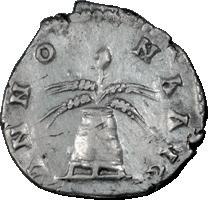

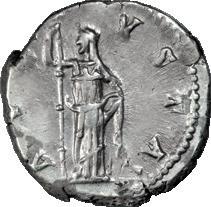





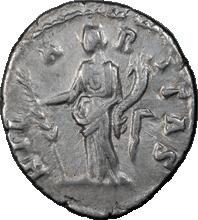




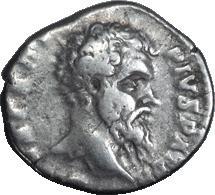
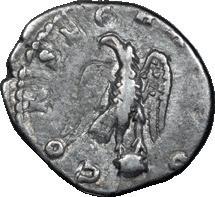

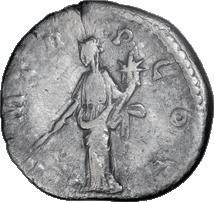
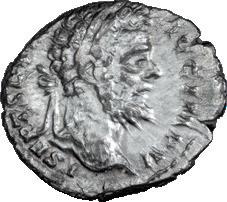

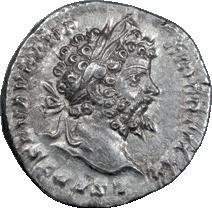






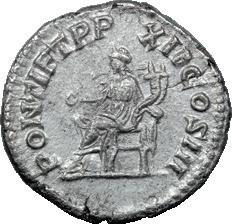
























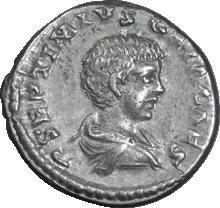


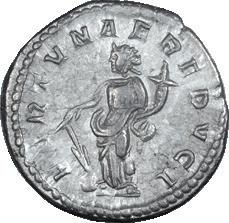



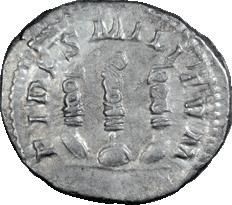




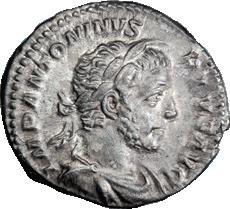


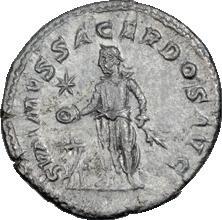





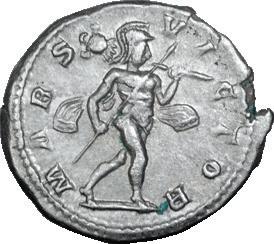










257254 236 270 243 251 258 273 264 272 253 260 266262 239 265 255 240235 242 247245 238237 278 246244 277275 267 241 274 249248 250 259 271268 263 256 261 252 276 269
Bactrian pigment container, likely for cosmetic kohl. Private Amsterdam Estate, prior to 2000. H. 2 3/8” (6 cm).
686. BACTRIAN BRONZE KOHL POT, ca. 1800 BC. Bulbous form with long neck and flat rim, engraving on the side. Unusual for type. Private Amsterdam Estate, prior to 2000. H. 3” (7.6 cm)
687. ROMAN BRONZE MORTAR, ca. 1st-3rd Century AD. A thick-walled, straight sided conical vessel, the inner walls gently curved at the bottom for crushing and grinding materials with a pestle. H. 2 1/2” W. 2 3/8” (6.4 cm x 6 cm).
688. ROMAN BRONZE ZEUS EPIKARIOS, ca. 1st Century AD. Chief deity of Zela Pontus. The muscular god depicted nearly nude with mantle draped over one shoulder. He wears a modius headdress and sun disc, curled hair and beard framing his finely detailed face. Mounted. H. 4 3/8” (11.1 cm) 4500
689. ROMAN BRONZE BULL STATUETTE, ca. 2nd Century AD. Realistically modeled, the bull is depicted with a thick muscular body and powerful haunches; his head and horns lowered menacingly as if ready to charge. Leafy green and brown patina. L. 2 1/2” H. 1 1/8” (6.4 cm x 2.9 cm).
690. ROMAN BRONZE SANDLED FOOT, ca. 2nd Century AD. A naturalistic left foot encased in a sandal, bound around the ankle and secured with a strap across the top of the foot. Rough olive and earthen patina. L. 2 1/2” (6.4 cm)
691. ROMAN BRONZE LION PAW, ca. 2nd Century AD. Bronze paw of a lion with four articulated toes. The flattened, slightly hollowed bottom indicates that the foot probably served as a base or support. L. 2” (5 cm) 250
692. GREEK BRONZE HEAD OF A GRIFFIN, Orientalizing to Archaic, ca. 7th Century BC. With open mouth and rigidly upright ears, incised lines emphasizing the creature. H. 1” (2.5 cm). 275
693. ROMAN BRONZE FALCON HEAD, ca. 2nd Century AD. Finely detailed with sharp beak and large almond eyes with characteristic eye markings defined by incision. H. 1 1/8”(2.9 cm), with tenon 1 3/4” 250 694. ROMAN BRONZE HORSE HEAD APPLIQUE, ca. 1st-3rd Century AD. The applique in the shape of a horse head with perked ears and long striated mane. Earthen patina. L. 1 1/4” (3.2 cm) 250
695. ROMAN BRONZE HAND APPLIQUE, ca. 2nd Century AD. Earthen encrustation. L. 1 1/2” (3.8 cm) 150
FIBULAE
696. ROMAN BRONZE FIBULA, HORSE, ca. 2nd Century AD. Zoomorphic plate brooch of a grazing horse with striated details, snout held to the ground, tail curled high behind. L. 1 1/2” H. 3/4” (3.8 cm x 1.9 cm) 250
697. ROMAN BRONZE FIBULA, ca. 2nd Century AD. Beautiful boar fibula with pin intact, highly detailed head and mane, short tail at the rear, recessed areas on the body likely once contained original inlay. L. 1 3/8” (3.5 cm). 275
698. ROMAN BRONZE FIBULA, AMPHORA, ca. 2nd Century AD. The brooch in the shape of a large amphora with vertically ribbed body, scrollwork at the sides. Pin intact. H. 1 1/4” W. 7/8” (3.2 cm x 2.2 cm). 300
699. ROMAN BRONZE HORSE FIBULA, ca. 100-200 AD. A flat type horse fibula with pin intact. L. 1 1/2” (3.8 cm) 250
700. ROMAN BRONZE FIBULA, ca. 2nd Century AD. Simple, clean shape with lined bow and sleeve covered hinge. Pin and catch plate intact. Even green patina. L. 1 3/4” (4.4 cm) 150
JEWELRY
701. PARTHIAN GOLD WINESKIN PENDANT, ca. 2nd-1st Century BC. The earring or pendant is comprised of a simple gold hoop from which a three-lobed granulated wineskin is suspended. A beautiful example of an ancient technique that achieved great fineness and richness in texture. L. 3/4” (1.9 cm) 1850
MISCELLANEOUS
702. ACHAEMENID SILVER AND GILT PHIALE, ca. 5th-4th Century BC. A silver lotiform phiale with flange rim, and band of radiating lotusflower details and central boss. This distinctive type of tableware was utilized during banquets for pouring or drinking libations; the underside of the boss allowing the user a more secure grip. W. 4 1/8” H. 1 1/2” (10.5 cm x 3.8 cm). 3500
SCULPTURE
703. CYPRIOT LIMESTONE HEAD OF A VOTARY, ca. early 5th Century BC. Wearing a Phoenician cap with a flap turned up, his hair bound over the shoulders. Ex Sotheby’s York Avenue Galleries, 26 May 1982, lot 429; private collection of a Mr. Stephenson in Greenwich, CT. H. 8” (20.3 cm), 12 1/4” with base
704. ROMAN MARBLE RIGHT LEG OF A MAN OR GOD, ca. 1st-2nd Century AD. Powerfully carved, the leg carrying the weight of the body against a roughly hewn tree trunk, his quiver hanging from it. Provenance: Art Market, Germany, 1990s. Art Market, New York. H. 10 1/2” (26.7 cm). 3750
705. ROMAN MARBLE HEAD OF MAN, ca. late 2nd Century AD. An elegant portrait bust of a young beardless Roman man. The piece is modeled in white crystalline marble in realistic late 2nd century style. Abrasions across the eyebrows and nose. Restoration to the nose. Ex Gerhard Hirsch Nachfolger, Munich, Auction 262/263 September 09-22 2009, lot 302. H. 7 1/8” W. 5 1/2” (18 cm x 14 cm). H. with mount, 11 3/8” (29 cm). 18000
WEAPONS
706. ELAMITE BRONZE AXE HEAD, ca. late 3rd-early 2nd Millennium BC. The shaft with cut-away edge at top, a tapering pointed protome at back of shaft imitating a bird beak, with gently curving blade, mounted.
Provenance: Mintz Collection, acquired in the 1970s. Sands of Time Ancient Art, Washington, D.C.. L. 9 5/8” (24.5 cm). 1450
707. LURISTAN BRONZE SWORD, ca. 9th-7th Century BC. Property from the Collection of Dr. Warren Breisblatt, Frederick, Maryland.
Provenance: Collection acquired from the American and Israeli art markets between 1990s-2000s. L. 31” (79 cm). 4850
708. LURISTAN BRONZE DAGGER, ca. 9th-7th Century BC. Property from the Collection of Dr. Warren Breisblatt, Frederick, Maryland. Provenance: Collection acquired from the American and Israeli art markets between 1990s-2000s. L. 15” (38 cm). 950
PRE-COLUMBIAN
709. MOCHE POTTERY FIGURAL STIRRUP-SPOUT VESSEL, ca. 500-700 AD. This bottle in the shape of a seated man wearing a wide collar or necklace, his hair in a tight fitting head wrap that extends down his back. The figure is seated in a cross-legged fashion, hands held atop his bent knees. Stirrup-shaped handle at the back, surmounted by a cylindrical spout. H. 7” (17.8 cm) 1000
710. PRE-COLUMBIAN CHIMU BLACKWARE STIRRUP-SPOUT VESSEL WITH MONKEY, ca. 1100-1470 AD. Globular body with tall spout situated atop a pedestal base. A monkey perches on the shoulder. Rich matte black surfaces. Some loss to the spout, handle repaired. H. 8 1/2” (21.6 cm) 475
ASIAN ART
711. CHINESE WESTERN HAN DYNASTY DANCER, ca. 206 BC220 AD. This is a very large example of a Western Han grey pottery court dancer, beautifully modeled, she lifts her arms in undulating form with her heavy sleeves hanging over her hands. Her robe gracefully drapes at her feet. Scattered earthen deposits and a few scattered chips. Unusually wellpreserved for its size. Thermoluminescence analysis completed October 2006. H. 19 1/4” (48.9 cm) 4200
712. CHINESE EASTERN HAN DYNASTY GRANARY , ca. 25-220 AD. An excellent example of an Eastern Han model of a granary sculpted in red terracotta with typical greenish iridescent glaze. The piece is quite tall with two open windows and a wide spanning roof. Excellent condition. H. 15 3/4” W. 12” (38 cm x 30.5 cm).
713. CHINESE EASTERN HAN DYNASTY FARMHOUSE, ca. 25-220 AD. A wonderful example of an Eastern Han green glaze farmhouse. The model depicts a sloping tiled roof overhanging a door and two windows with the typical iridescent heavy green glaze over red terracotta. Very good condition. H. 16” W. 9 1/2” (40.6 cm x 24.1 cm) 2250
714. CHINESE JADE CARVING OF A LANDSCAPE, ca. mid 20th Century AD. A wonderful Chinese landscape done in a nice heavy piece of celadon or mutton fat jade with small black inclusions. In shallow relief the scene depicts a glimpse of two men and a town through pine trees. L. 7 5/8” H. 5 3/4” (19.4 cm x 14.6 cm) ........................................................350
715. GANDHARAN CHLORIDIC SCHIST PALETTE, ca. 1st-2nd Century AD. A shallow, bowl-shaped dish with ornamented rim and finely carved scene with winged dragon with coiled tail. The two remaining two compartments likely reserved for the mixing of cosmetics. Dia. 5 1/4” (13.3 cm) 1000
716. KHMER BRONZE STANDING UMA, ca. 12th Century AD. From the great Khmer civilization of Southeast Asia the Hindu goddess Uma or Parvati stands forward with her hands down. She is a very popular image in Khmer art, and the consort of the Hindu god Shiva. Here the goddess wears the Khmer conical headdress with tiara has a long pleated sampot down to her ankles. The statue is nicely detailed especially for its small size and has its original thick leaf green patina and earthen encrustation. Mounted on a hardwood base. H. 3 1/2” (8.9 cm). 300
717. KHMER BRONZE STANDING VISHNU, ca. 12th Century AD. This statue is wonderful ambassador from the great Khmer civilization of Cambodia whose vast temple complexes still entrance visitors. The Hindu god Vishnu stands straight up with his four arms holding implements (three are missing). He wears the iconic Khmer conical headdress with tiara and a short pleated sampot. The statue is nicely detailed with its original thick leaf green patina and earthen encrustation. Mounted on a hard wood base. H. 5 1/2” (14 cm) 900
718. NEPALESE CHLORITIC SCHIST STELE OF CHAUMUNDA , ca. 18th-19th Century AD. This stele of Chaumunda represents a fierce and frightening form of the Hindu goddess Parvati who is also conflated with Kali and Durga - other fierce forms of Parvati. Chaumunda is popular in Nepal and is always represented in emaciated form with multiple arms stepping on a defeated demon as the present example. The fierce forms of the deities, as was common in other traditions, represent the conversion of formerly evil deities to the good side to fight evil in the service of gods and humans. Such stele in schist or chlorite were popular in later Nepalese history from the 16th to the 19th centuries and formed focal points of small shrines. H. 5 3/8” W. 4 1/2” (13.7 cm x 11.4 cm). H. with base 6 1/2” 350 719. INDIAN BRONZE STANDING RAMA, ca. 17th-18th Century AD. This nicely chased and sharp statue of the god Rama or Ram stands in tribhanga (triple bend) holding a bow in his left hand and an arrow in his right. He is richly adorned with bejeweled chest and shoulders. Rama is the seventh avatar or incarnation of the Hindu god Vishnu and along with his wife Sita and the loyal monkey god Hanuman is the star of the Hindu epic the Ramayana. General devotional wear and slight porosity overall. H. 5 1/8” (13
ISLAMIC ENGRAVED STEATITE FUNNEL, ca. 9th-10th Century AD. A delicately modeled funnel with open bulbous top and engraved steatite surfaces. Typical Central Asian motif, likely from the Khorasan region. Unusual type. L. 5 1/2” (14 cm).
350
375
1000
850
300
............................................................8500
............................................................2250
cm) .........................................................................................750 720.
250
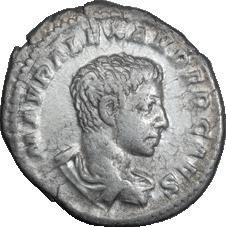


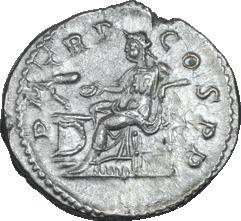


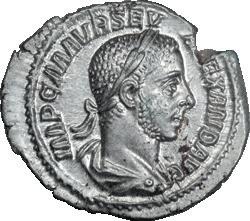




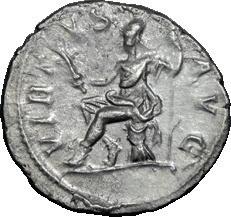





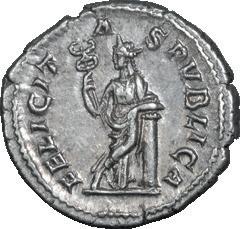









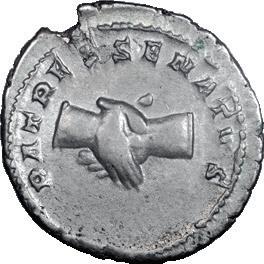





















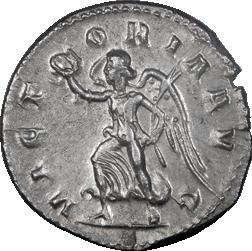




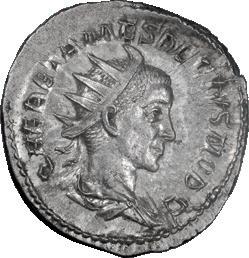
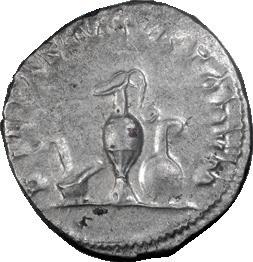
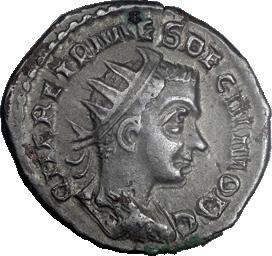













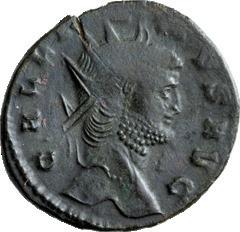

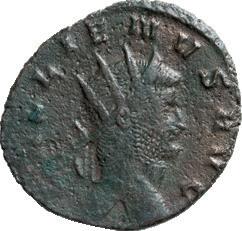



312 304 285 300 288 302 315313 295 289 282 307 284 314 316 290 279 292 299 291287 309 301296 293 310 297 280 286 294 308306303 283281 298 311 305



















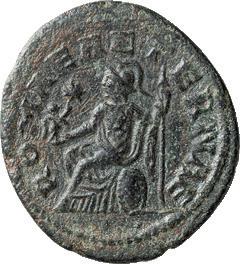


















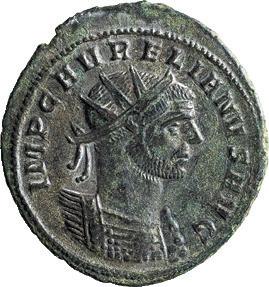
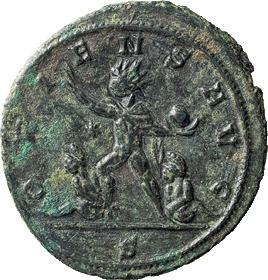
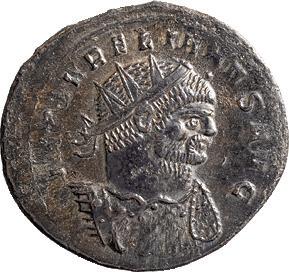
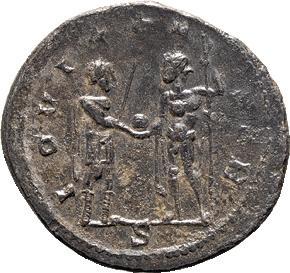






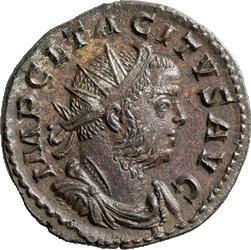









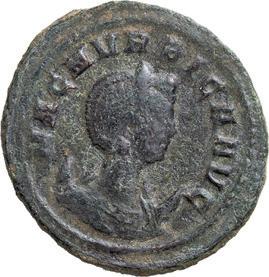





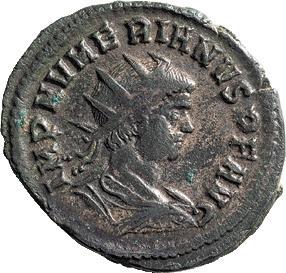





331 333 321 334 339 319 317 329 343340 351 323322 328 330 320 326325 335 345 327 336 338 318 347346344 332 324 348 341 349 337 342 350

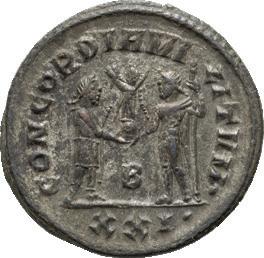






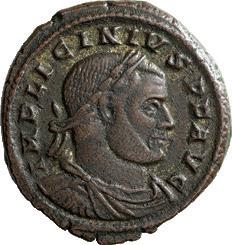


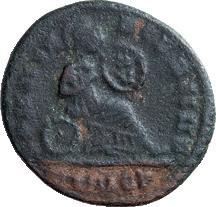


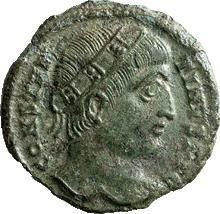
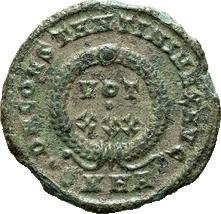

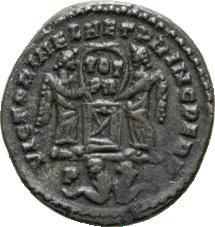
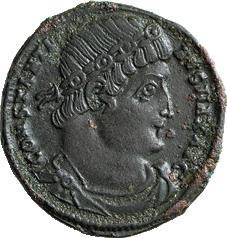







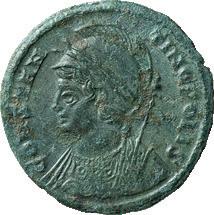



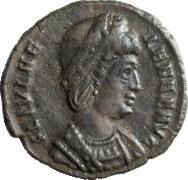

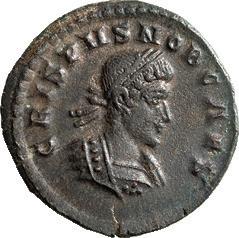




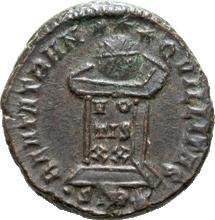



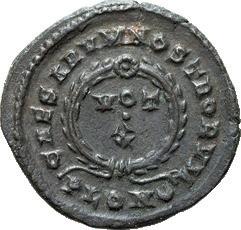



















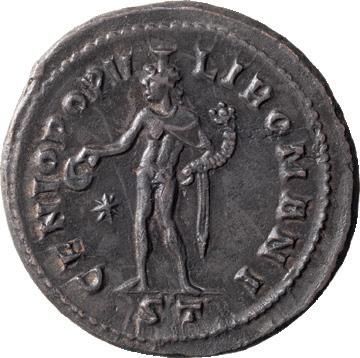


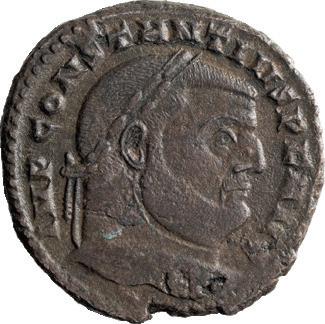


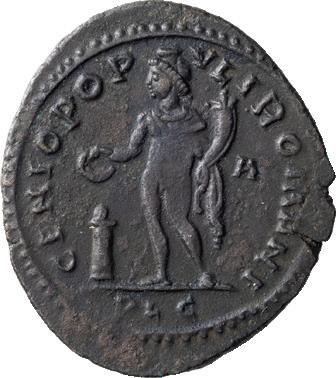
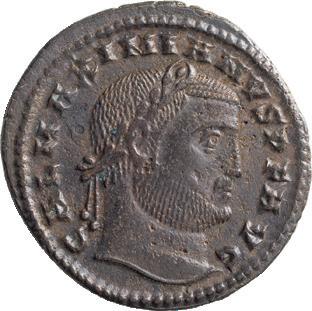
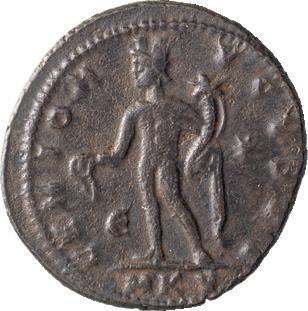


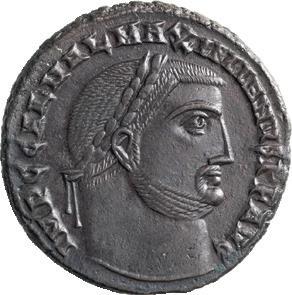

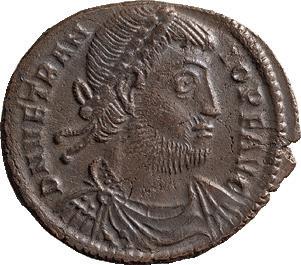

366 380 363 368 362 365 373 375 367 384 376 378 369 374 360 370 364361 358 356355 357 372 353352 359 354 371 377 381 382 387 383 379 385 386 388 389
















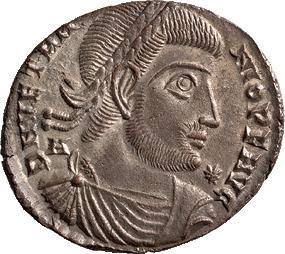


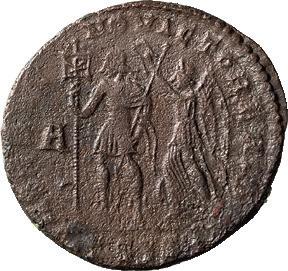



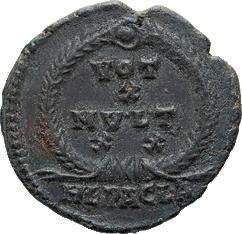








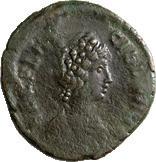
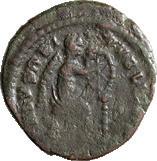
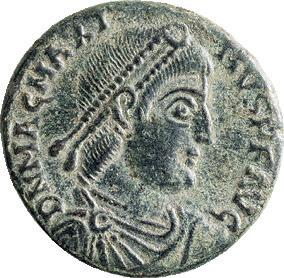




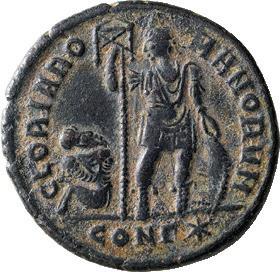
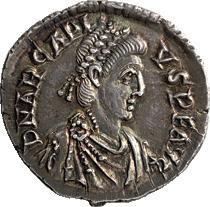






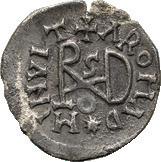


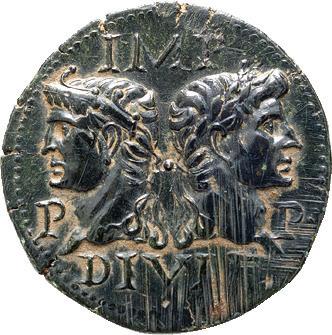
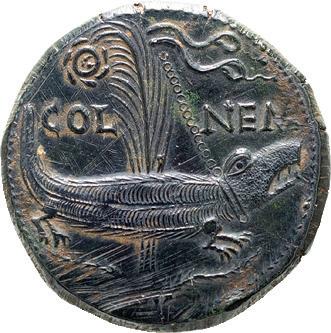





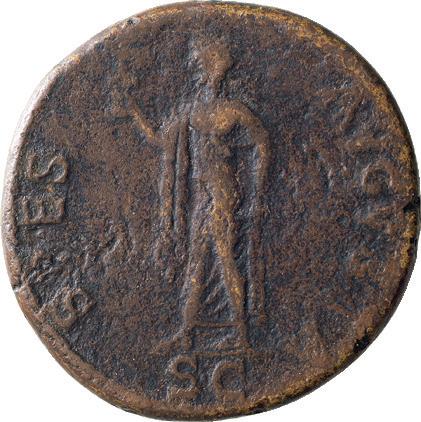


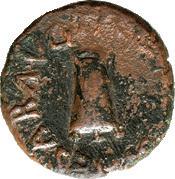
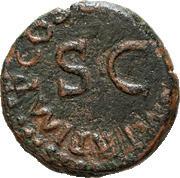

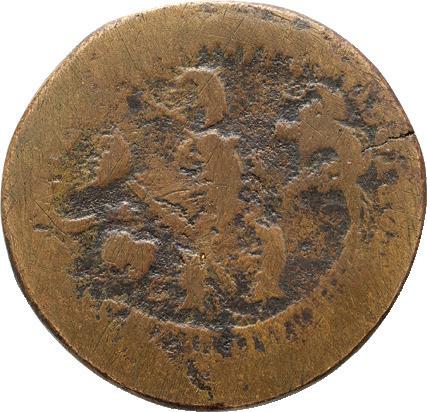


414 394 412 418 403402401 422421 407 410 400 413 397 396 398 399 393 395 404 411 420 408 416 405 419 406 417 415 409 392390 391

























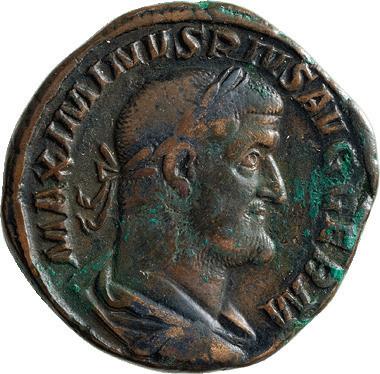









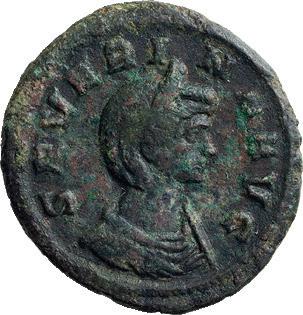

426 423 432 425 424 429 430 433 434 436 437 427 431428 438 435 440439







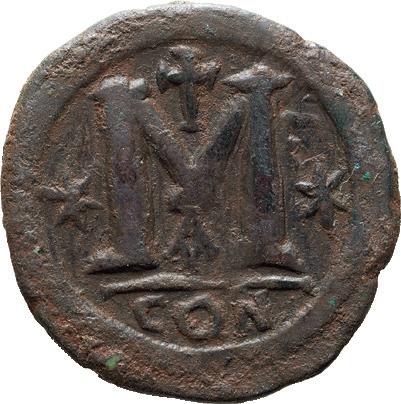






















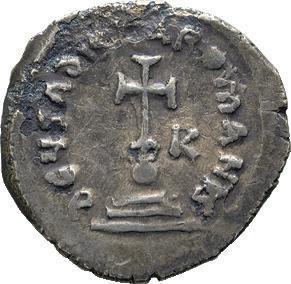
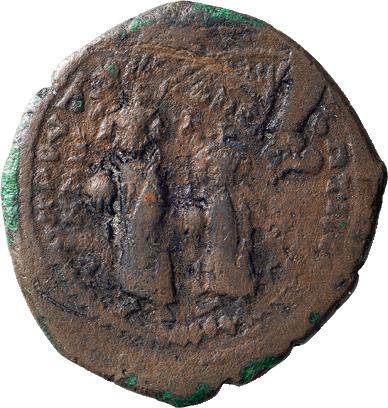




442 445 455 457 456 448 444443 453 451 446 441 458 450 454 447 449 452





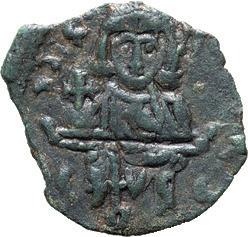







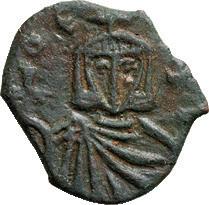




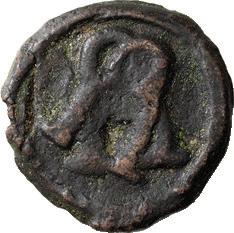
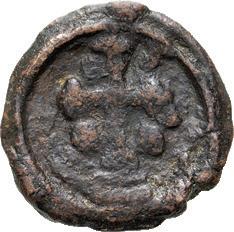







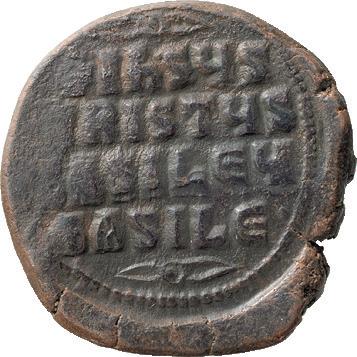
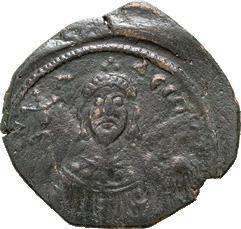













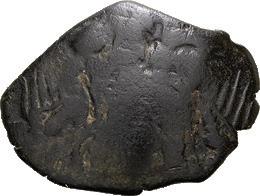















463462 464 469 483 485 476 480474 477 468 459 461460 467 475 471470 487 473 466 486 465 482 472 479 478 484 481




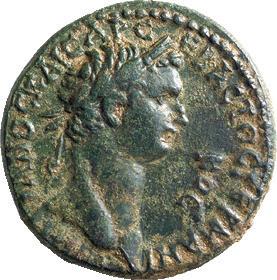



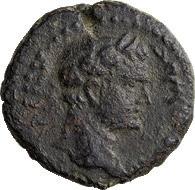



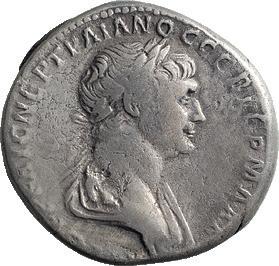
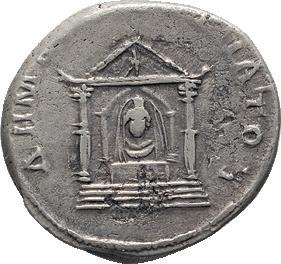
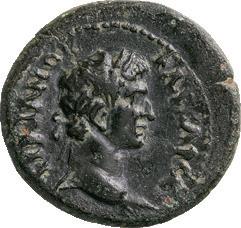



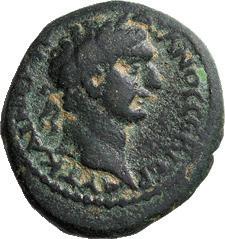










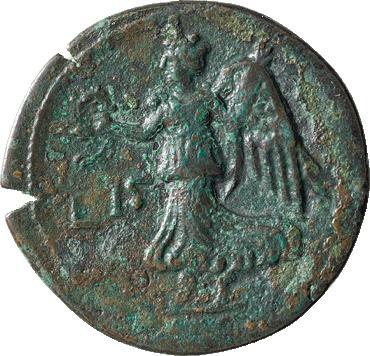












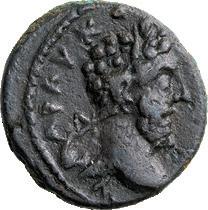


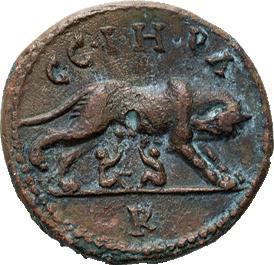







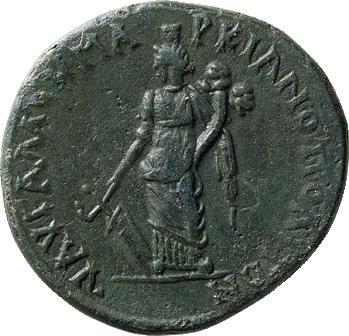
492 506 494 495 507502 491 493 489 500 497 499 512 513 498 508 501 488 490 496 509 503 514 510 511 505504






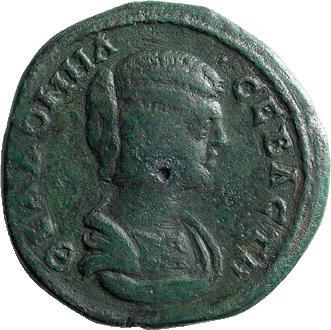
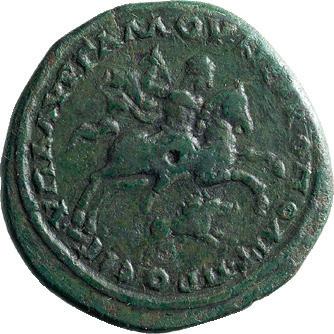
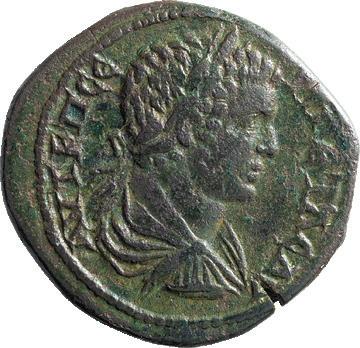

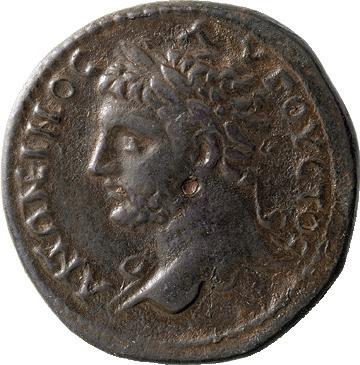
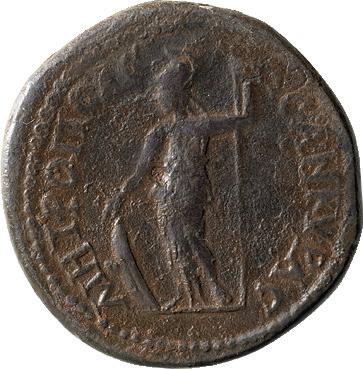



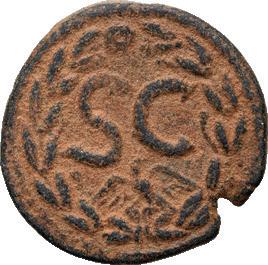

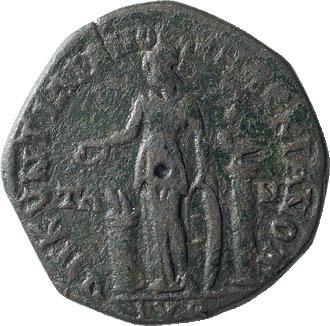





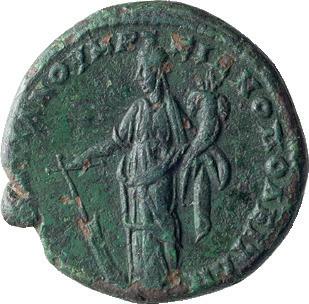

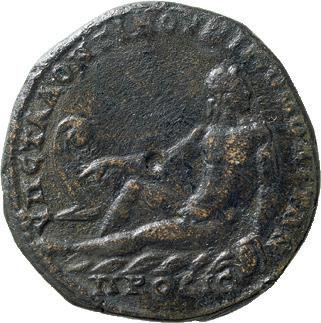




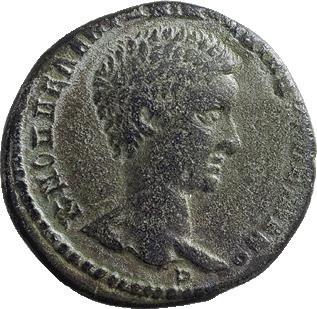











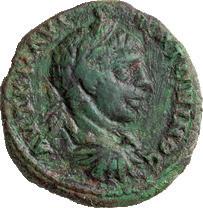


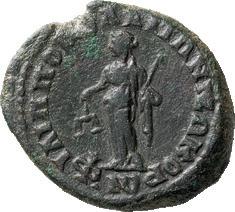
534 517 522 520 525524 519 526 532 518515 521 516 531 523 530529 527 535 536 537 533528


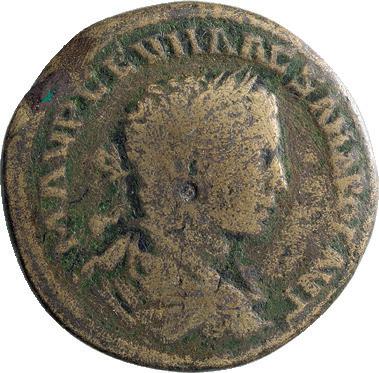
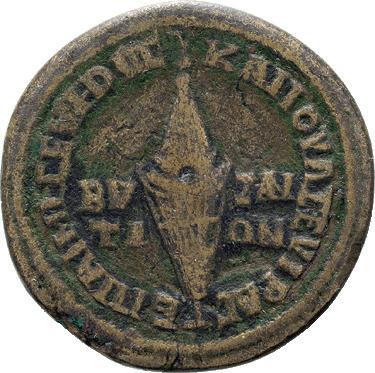






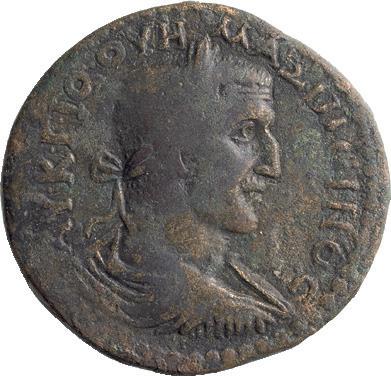



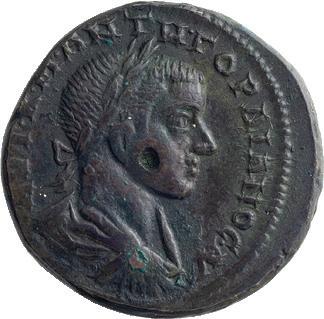
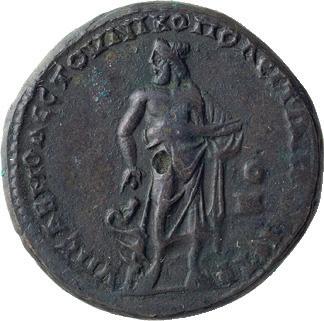

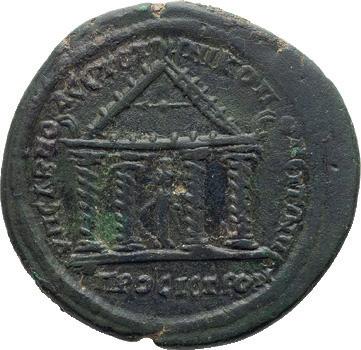

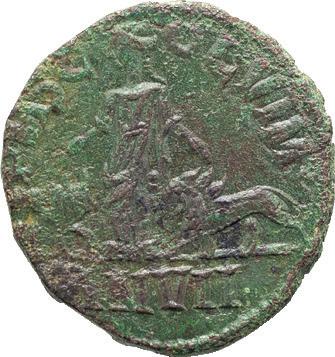







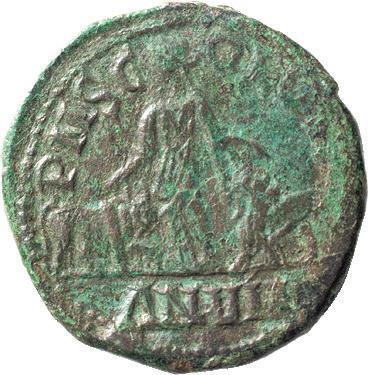
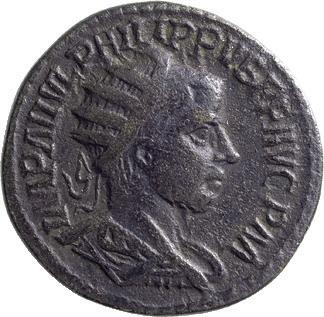



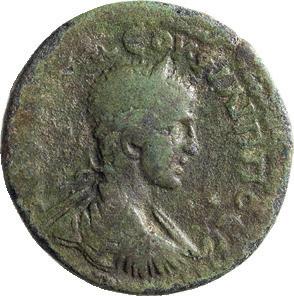



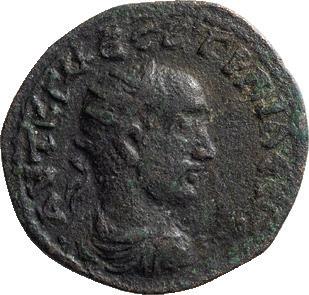
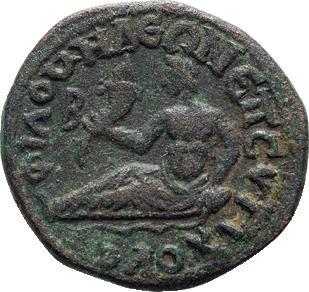



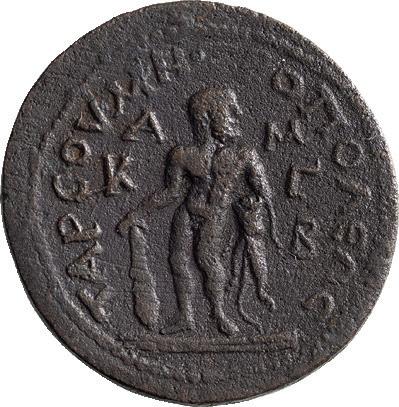
548547 539538 545 555553 543 544 550 552551 554 556 541 542 558557 549546 540

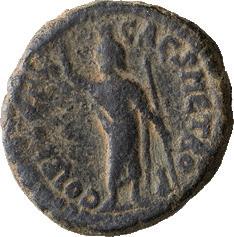







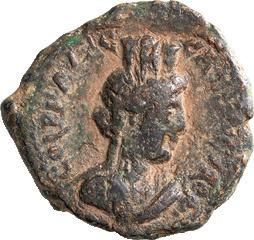





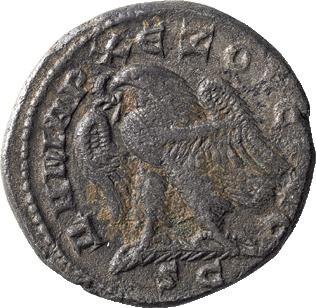





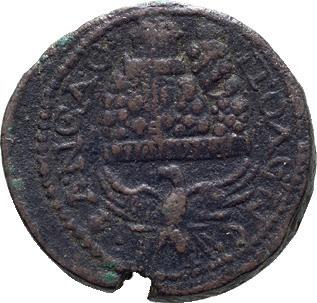
























559 572 565 569566 562 567 561560 576 577 571570 563 564 573 578 575 574 581580 579 568




















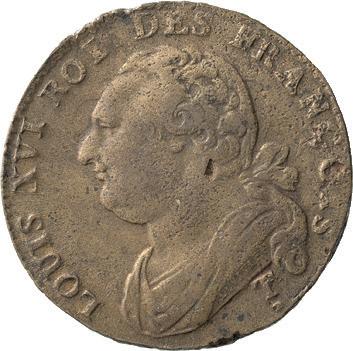
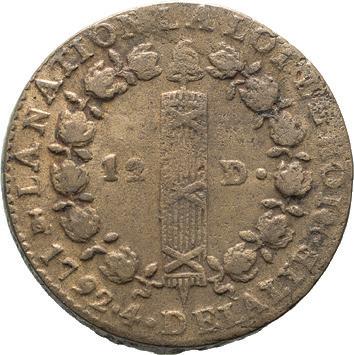














587 595 589 597 590 594 591 586 598 593 596 592 588 599 585 583 584 582








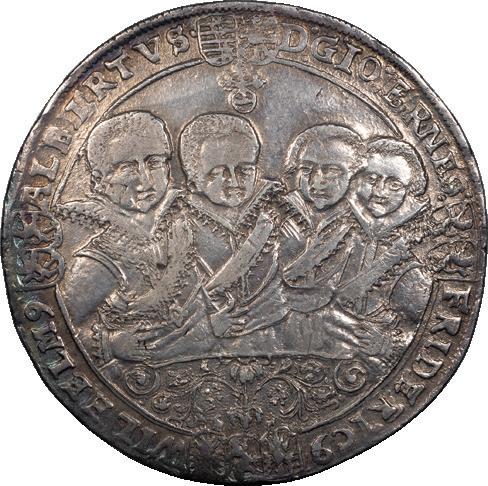




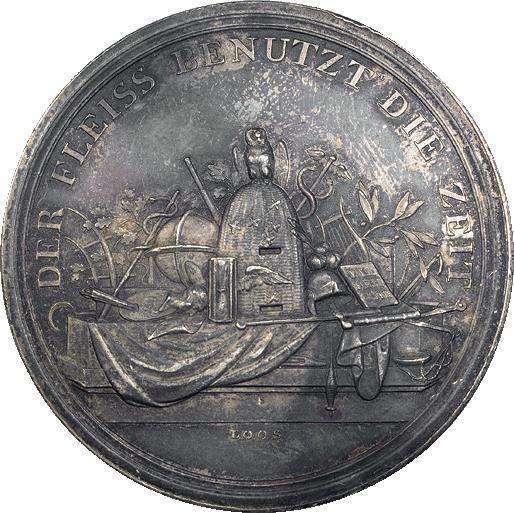
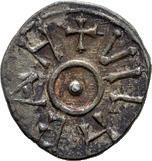





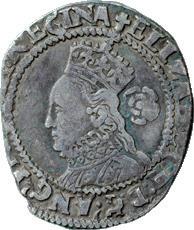
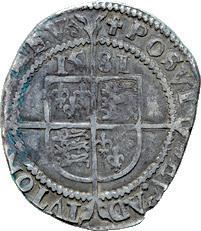






603 611 602 609 604 606 612610 607 605 613 608 601 600








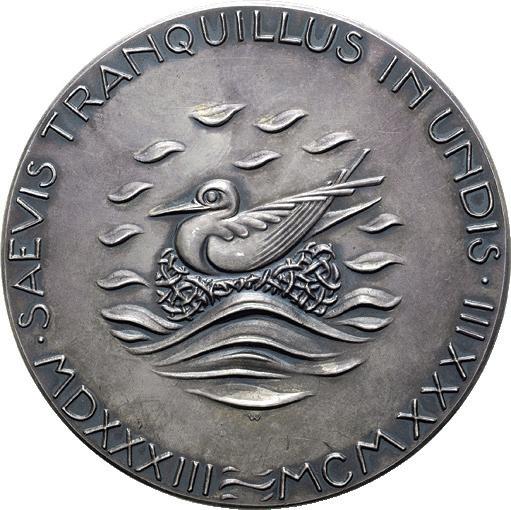



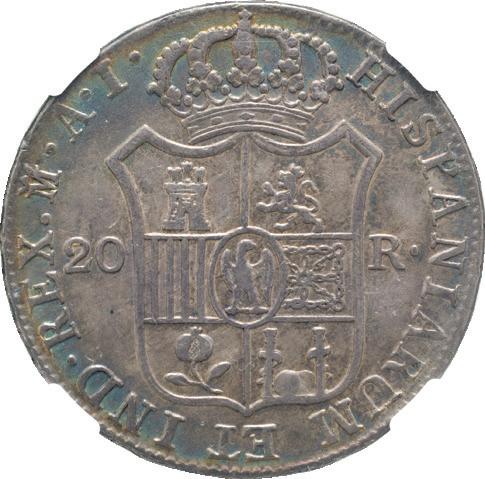


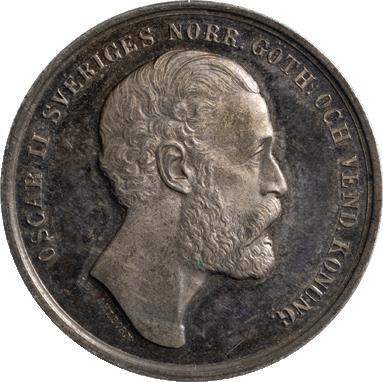


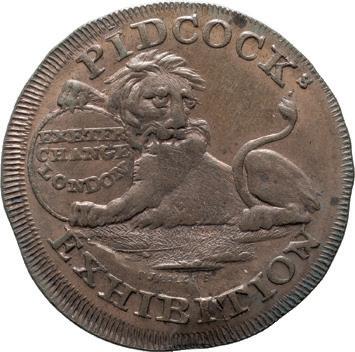



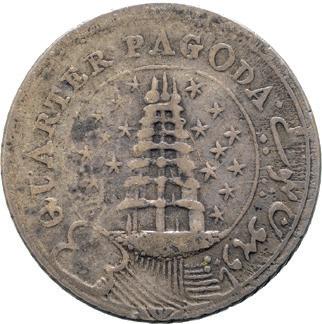



619 625 620 624623 621 622 618 626 614 617 616615

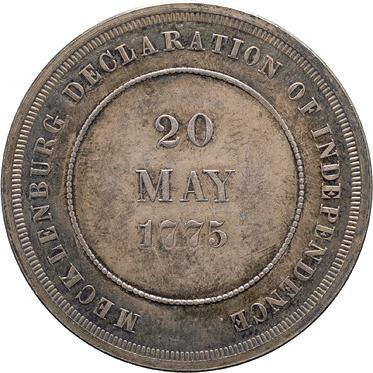


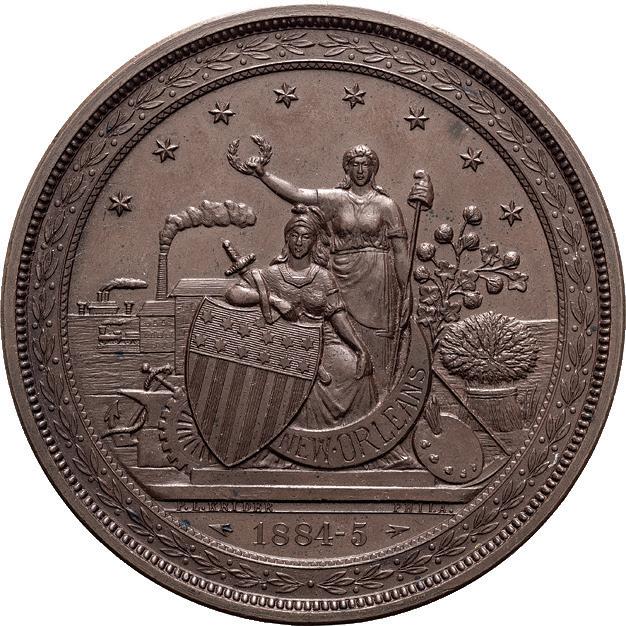

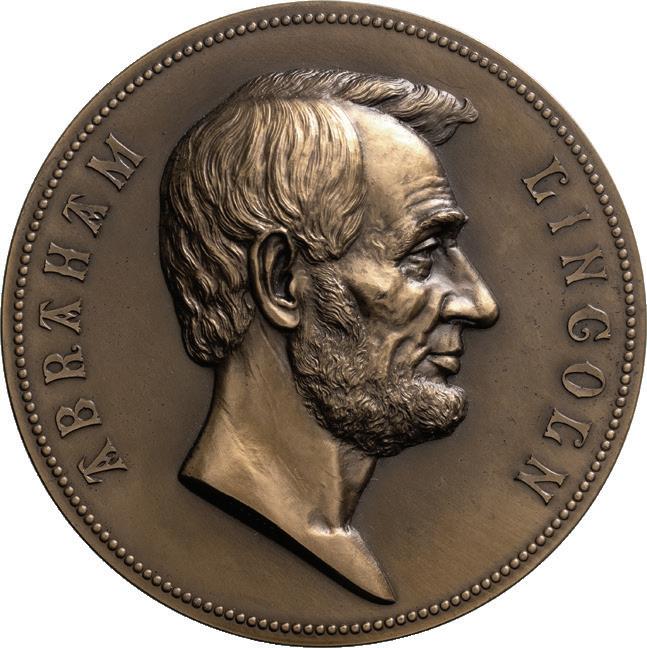




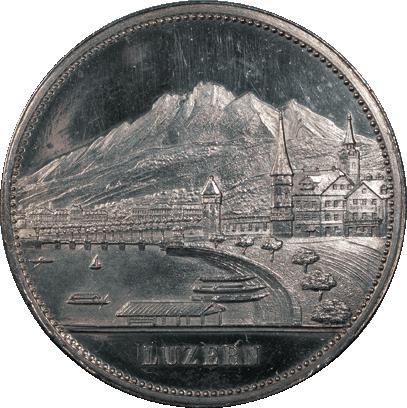




634 631 632 633 630 628 627 629



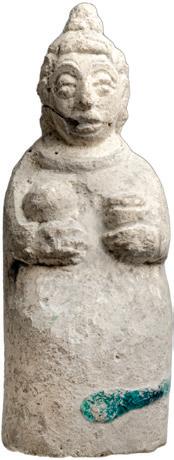













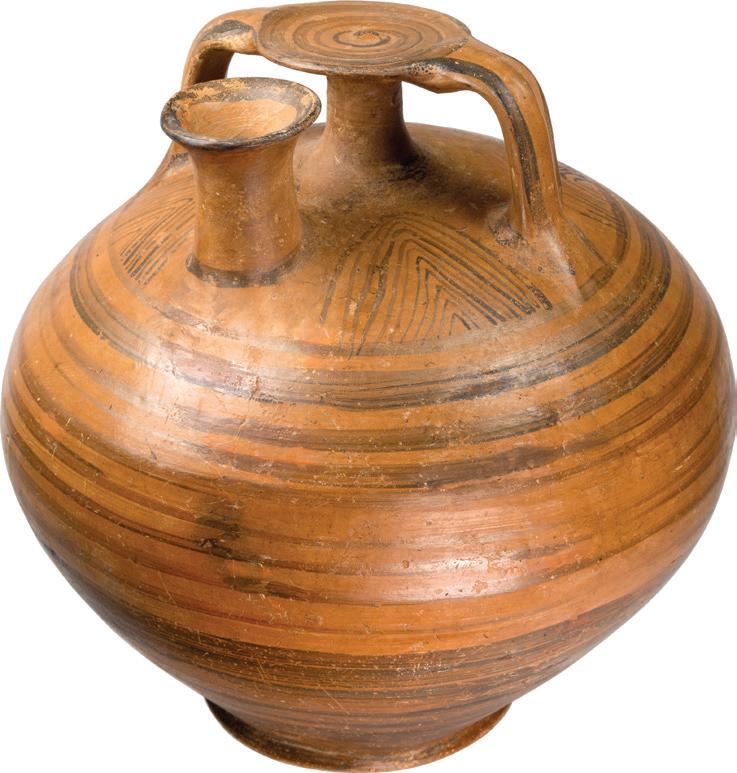

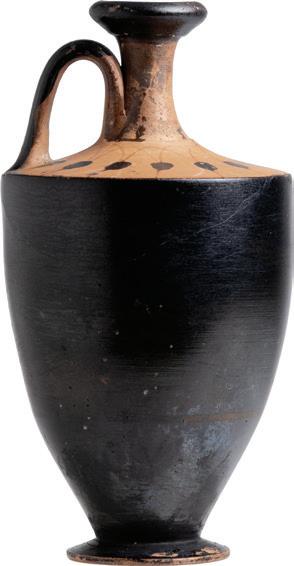

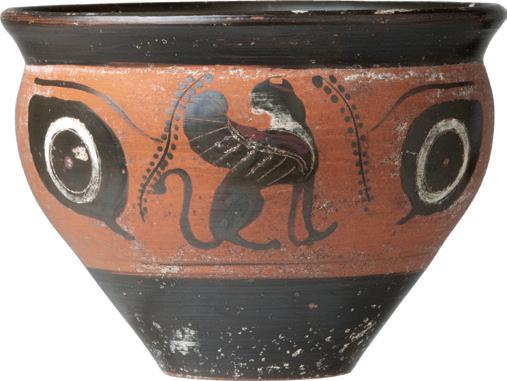


645 646 650 653 644 639 643 642 641 637635 636 638 640 655 648 652 654 647 649 651







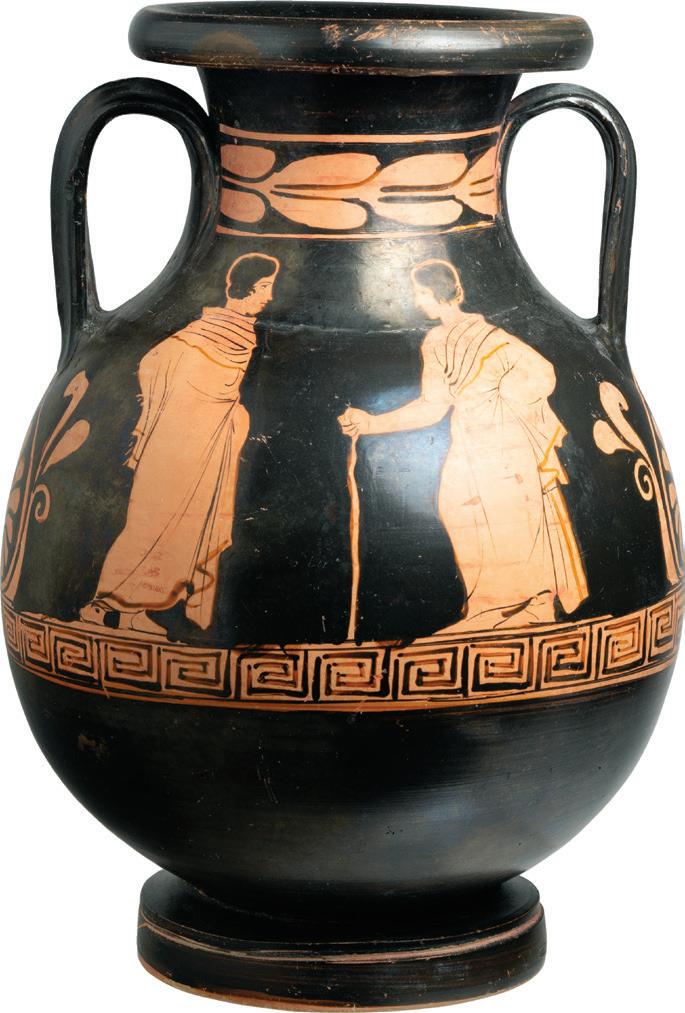










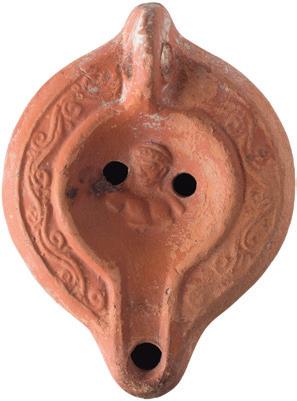
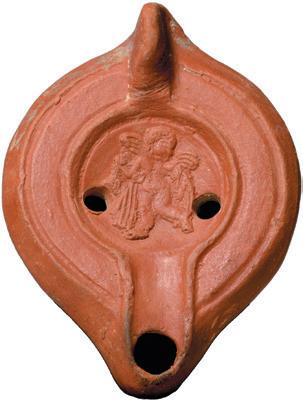









681 674 661 662 658 656 665 666 664 663 660 657 672 677 667 659 676 680 670 671 675 673 678 679 669 682 668
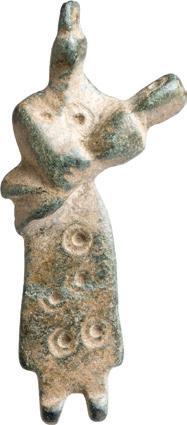
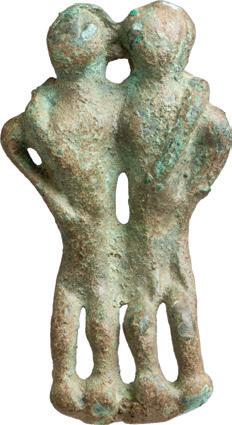
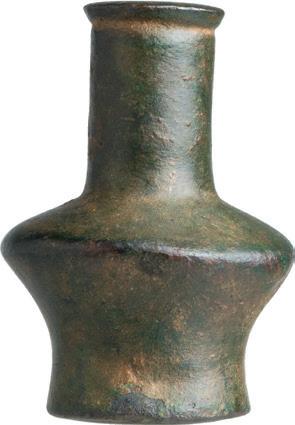


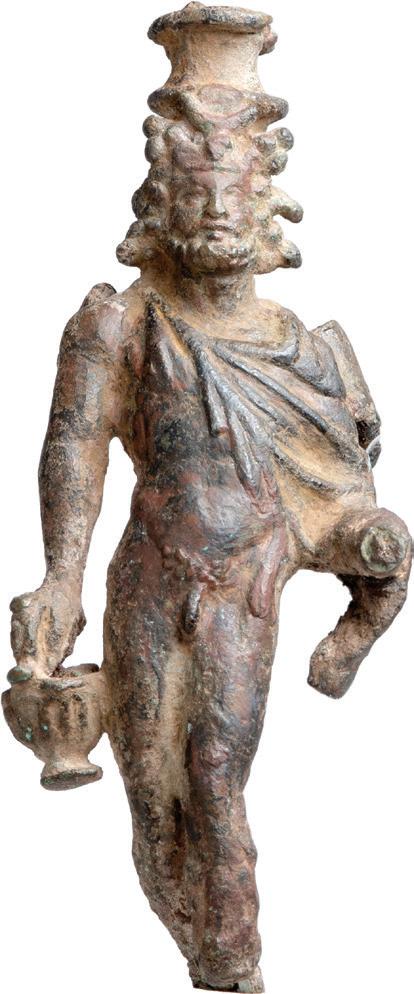



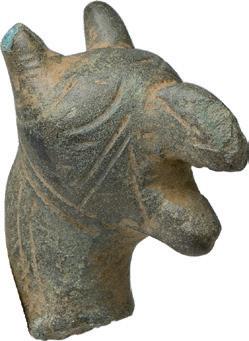


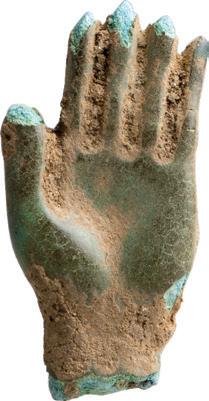
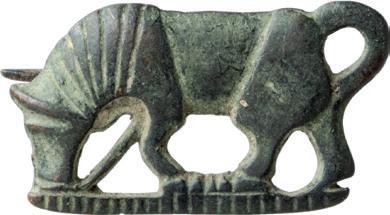






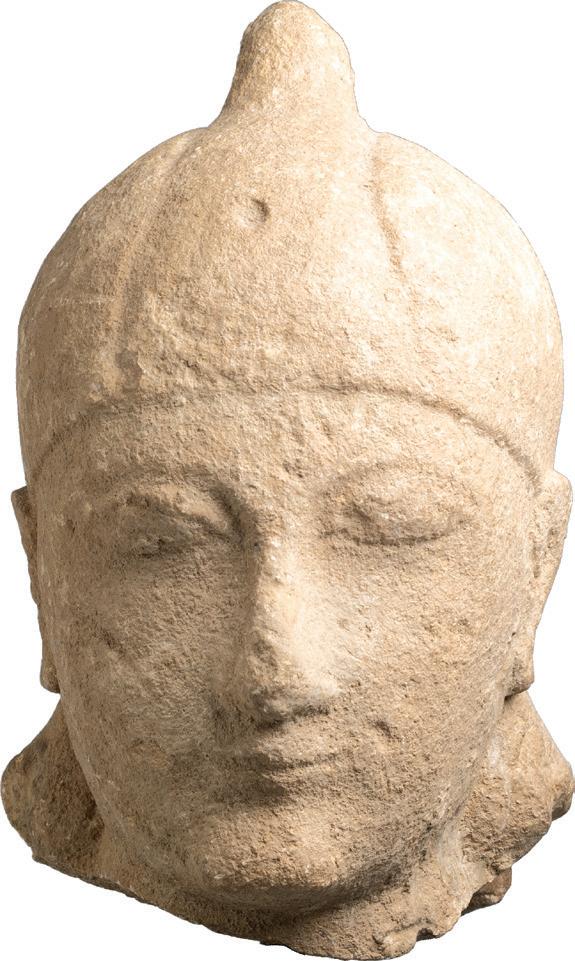



706 688 685 708 693 696 684 694 698 701 683 697 695 699 703 691 692 690 686 687 689 702 704 707 700







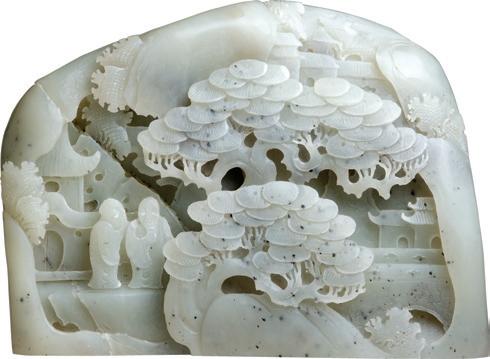







705 716 709 715 718 711 714 710 712 720 713 719 717






Harlan J. Berk, Ltd. Est. 1964 31 North Clark Street, Chicago, IL. 60602 | 312-609-0018 | www.hjbltd.com Dealers in ancient coins, U.S. & world coins, antiquities, Bullion































































































































































































































































































































































































































































































































































































































































































































































































































































































































































































































































































































































































































































































































































































































